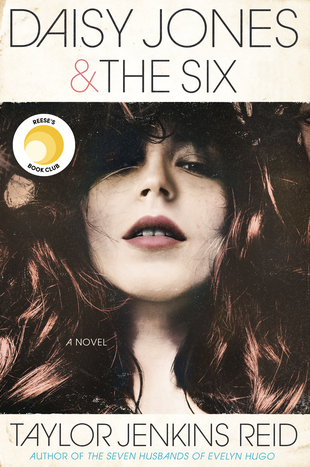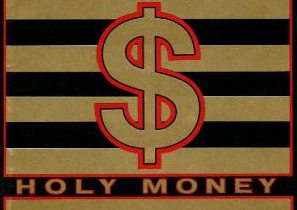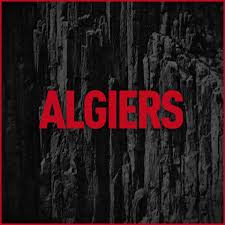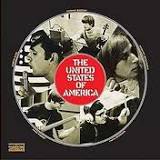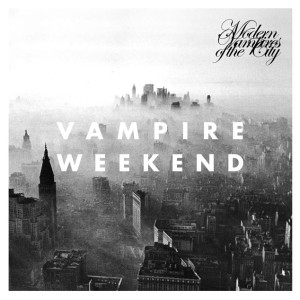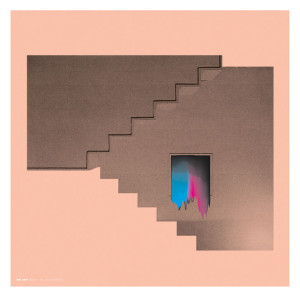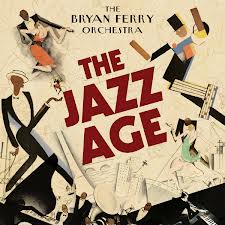
Music
___________________
NEWEST CONTENT
Minutia and Majesty
I am always grateful for Spring Creek Prairie. It’s a place equally energizing and relaxing. It’s a place to reflect alone or to be together creating shared memories. A place to clear your mind or to feed it.
For both its majesty and its minutia, the woodland area east of the visitor’s center is a favorite spot. You should go there.

On the short walk to the woodland trails, look up. There’s an unobstructed sweep of towering prairie sky. As you enter the woodlands, look forward. Accept the gentle embrace of muscular limbs and trunks; the shelter of massive branches. When you are well into the woodlands, look down. Go quiet. Squint among the exposed roots of an oak to see clearly a tiny, ornate pillow of moss.
Many years ago my friend Cathy taught me that the Japanese have a wonderfully descriptive word for the way that sunlight filters and dances through the foliage of trees: komorebi. Springtime is here bringing buds and leaves to the black walnuts, the burr oaks, and cottonwoods. Soon the trees will fill in and the woodland’s shaded spaces will overwhelm its bright ones.
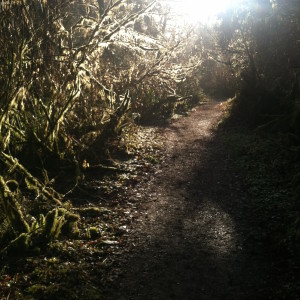
That is something precious to anticipate, because that is when the flickering phenomenon of komorebi will deliver its nearly crippling beauty.
It is coming. So many extraordinary things are coming.
*** *** ***
Here is a pretty song for this extremely strange spring:
Cloak of the Night performed by Ed O’Brien and Laura Marling (from Earth by EOB 2020).

12 April 2020
______________________________________________________________
“The world has raised its whip; where will it descend?”
Put in the context of the past couple weeks, that is one timely quote from Virginia Woolf’s great novel, Mrs. Dalloway. In just ten words, (only eleven syllables!) the quote delivers a brusque promise, not an empty threat. Woolf brilliantly captures a sense of stark anxiety and certain danger.
Something mightily f***ed up is coming. Really coming. Not if, but when? What will it hit? When? And with what crackling, savage severity?
The knowledge that the lash is up and is certain to strike somewhere leaves us wrapped in a thick fog of unknowing. It leaves us with a crippling sense that nothing will ever be the same as before.
Stick around. Or don’t.
This evening I should be packing my bags. I am scheduled to take a six o’clock flight tomorrow morning. Jude and I were going to take a trip to visit friends, hike, and get away. Instead, for the foreseeable future, we will be getting away, as usual, to the local bike path and the neighborhood sidewalks for our hiking.
No complaints – it makes me happy that we can do that. Among the many confusions and disappointments of these days, something like the normalcy and simplicity of these neighborhood excursions will provide a consolation and a boost.
Anyway, instead of packing, I sat down to think a few things through. What would I want to tell my current self with the hindsight of coming weeks or months? Maybe this.
Don’t play down big disasters, but stay positive – you have very much to be grateful for.
Keep making plans, but accept things you can’t control.
Don’t waste time, but relax.
Identify problems, but focus on solutions.
Keep listening to lots of music, it will make you feel better.
And especially this, look out for others whenever you can.
Maybe we’ll all know a little more about what’s happening on April 3, when bass master, Thundercat, releases his new album, It Is What It Is. The man’s long list of collaborators includes Flying Lotus, Childish Gambino, and Kamasi Washington. He has a distinctive but familiar sound; funky and soulful. He has favorably addressed past comparisons to the magnificent artist Shuggie Otis, and OH MAN the single below sounds like a Shuggie song. Hope that the whole thing is in this vein. Dig these.
Black Qualls by Thundercat, (with Steve Arrington and Steve Lacy,) from It Is What It Is (2020 Brainfeeder).
Inspiration Information by Shuggie Otis from Inspiration Information (1974 Epic).
Please note that the musical artist is no relation to the master pouncer, Thundercat, who shares space with Judy and me. The name is quite a mouthful, but I love the nickname that our sister, Linda, has given him: Thundy.
Meow meow. Ciao ciao.
19 March 2020
_________________________________________________________
Free of Constraints
Breezes from the south are intoxicating with the nuzzling promise of springtime. Days shine brighter longer. Occasionally, we walkers of the Great Plains can even move about outside without keeping our shoulders reflexively up around our ears, and we can roam free of the constraints of layers of protective gear. Come, spring!
And talking of throwing out constraints – MUCH LOVE to the artists who resist working within the constraints of a particular genre. They make more exciting songs. Check out these two genre-bending artists.
Archy Marshall is King Krule. He is my dude. On the two singles that you may link below, you’ll hear why there is SO much anticipation for the release on 21 February of his newest, Man Alive! At just 25, London’s King Krule is already a full, growling decade into his recording career.

Marshall keeps listeners off-balance with a thick and woozy swirl of guitar, bass, and electronic effects. His vocal delivery creates constant drama by mixing tons of restraint with sudden bursts of urgency and abandon. It is like watching and listening to someone who is hypnotized. They grab your attention with steady whispers, then in a flash they shake out of their thousand-yard-stare trance, and they give you the loud, wild-eyed meat of a mystical message.
There are elements of jazz, trip hop, and rock, threaded through with King Krule’s own brand of demented lounge. So many great sonic ideas – all of them shrouded in darkness and even danger. (Listen for the 10CC sample in the second tune below.) Dig it.
Alone, Omen 3 by King Krule from Man Alive! (2020 True Panther Records).
(Don’t Let the Dragon) Draag On by King Krule from Man Alive! (2020 True Panther Records).
The composer/drummer Moses Boyd is also based in London, and he has a wonderful new release called Dark Matter. It is a great example of a jazz artist embracing the possibilities of multiple musical genres. The Guardian calls Boyd’s efforts “cross-pollination,” and “London-hybrid jazz” — those descriptors seem just right. This new record is a powerful cocktail of jazz, dance, afrobeat, grime, and electronica.
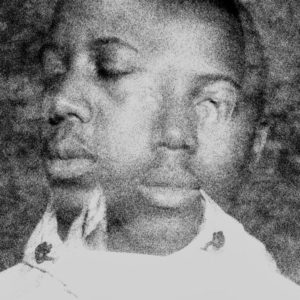
Boyd and his players give us highly imaginative, super energetic music. There is a half and half mix of instrumental tracks to tracks that feature vocals. Sounds like the future. Get funky.
Y.O.Y.O. by Moses Boyd from Dark Matter (2020 Exodus Records).
Shades of You by Moses Boyd with vocals by Poppy Ajudha, from Dark Matter (2020 Exodus Records).

Time for a check-in from you-know-who — Our Thundercat instinctively diversifies the genres he works in — refusing to be pigeonholed. He is as comfortable helping with the dishes as he is with laundry, with sweeping, and making beds. Thunder says, “I am not just one thing. A whole host of amazing talents will not be contained.”
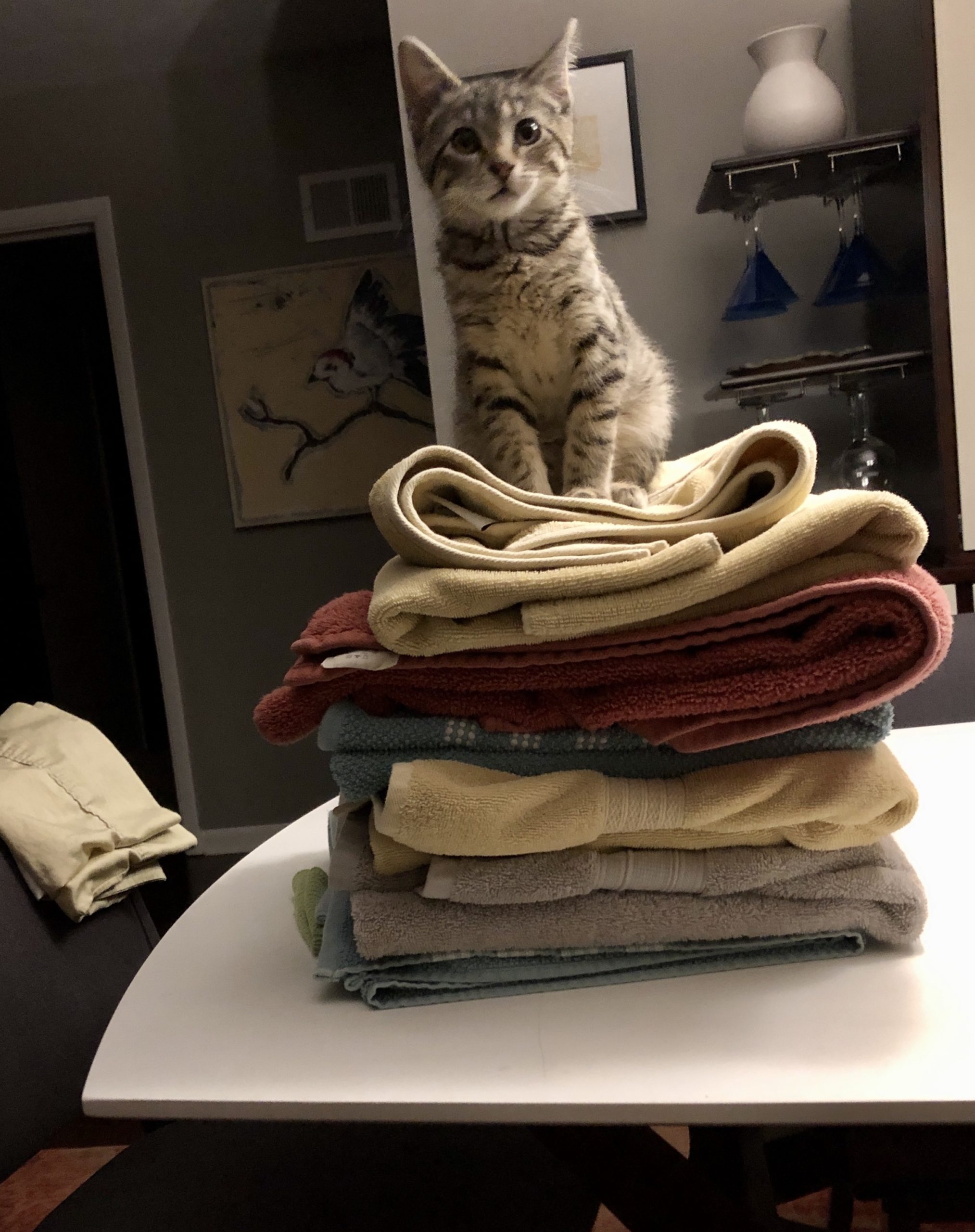
Ciao ciao. Meow meow.
20 February 2020
____________________________________________________
You Look Like You Could Use a Hug
You look like you could use a hug, and Thundercat is here to answer your wish.

Oh, dear lads and dear, dear lassies, ‘tis February on the Great Plains, and this shortest of months, with its still-shortened daylight, typically takes what feels like a long and very cold time to pass us by. Along with your warm embrace from a sweet snuggling kitten, here are some glowing new tunes to help get you through until the bright spring comes. 2020 is shaping up.
Sparkling guitars, lush synthesizers, and pretty vocal harmonies are all wrapped in a fresh swirling breeze of electronic effects. These sounds have characterized the music of Pia Fraus for over two decades. The five-piece outfit from Tallinn, Estonia, have created a lovely, easygoing new entry to their dream pop catalogue called Empty Parks. It has quickly become a favorite from this young year.

The group’s influences, Stereolab, Lush, and My Bloody Valentine, are in evidence here. Insistent drumming drives the songs along, and the band continues its experiments with feedback and pedal effects. The assured and soothing sweetness of the vocals are in counterpoint to the urgency of the instruments and the surprisingly playful sonic effects, and they serve to balance the intensity.
Keeping shoegaze vital, check out Pia Fraus.
You’re Not In Love and Hidden Parks by Pia Fraus, from Empty Parks (2020 Seksound Records).
Some deep grooves are being laid down in Florida. The new act, Flow Ensemble, has a haunting new self-titled release. This is the fine experimental jazz project of the charismatic multi-instrumental artist Chad Jasmine and the superb trumpet player Marcus Parsley. Jasmine, who is also an extraordinary vocalist, has put together Flow Ensemble as a purely instrumental and super vibey exploration of tone. This is a soundtrack for contemplation and reflection, and it stars trumpet and bass guitar.
Jasmine handles the bass, providing a superior, cool rhythmic foundation. The duo share keyboard and drum programming duties. Dipping into comparison, the effect of Parsley’s delicious, meditative brass playing puts the listener in the mind of saxophonist/genius Joseph Shabasen, whose solo work, as well as his work with Destroyer and War on Drugs, has been commended on this page for years. Both players are comparable in that they are always effortlessly elevating the ambience with their amazing fluidity and flow.
Are you looking for something marvelous to play at the cookout or the cocktail party? Check this out and turn your friends on to it. Available on Apple Music, or streamable in its entirety on youtube with the link below.

Flow Ensemble by Flow Ensemble.
My main man and poetic ghost, Dan Bejar, leads Destroyer, and you need to get involved with the group’s latest, Have We Met. This is Destroyer’s best since 2011’s masterpiece, Kaputt, and it will be in heavy rotation around here.
Piano and guitar are often out in front, and complex arrangements provide a platform for Bejar’s elaborate lyrical genius.
Keeping Adult Oriented Rock vital, listen here:

It Just Doesn’t Happen and Crimson Tide by Destroyer, from Have We Met (2020 Dead Oceans).
1 February 2020
________________________________________________________
Fixing to Roar
A century ago, the years of the 1920s roared in and started becoming memorable for flourishing innovations in art, fashion, and style. The era became so deeply influenced by a musical style that it is memorialized in name by that great American invention, Jazz. Just like the Jazz Age a century ago, our 20s have the opportunity to roar instead of bore. It is exciting thinking of what might be next.
So, the new decade has arrived, and before looking fully forward, a little glance backward. Hopefully the music (and this page!) will flourish and roar with wonderful treats for our ears in the 2020s. First though, a little look back at the final year of the teens. I can recommend some great music, and also a couple of worthwhile books that I read in 2019, that both share music as their threads.
Please pick up the beautiful, fascinating, messy 590 page sprawl known as Beastie Boys Book by Michael Diamond and Adam Horowitz (2018 Spiegel & Grau.)
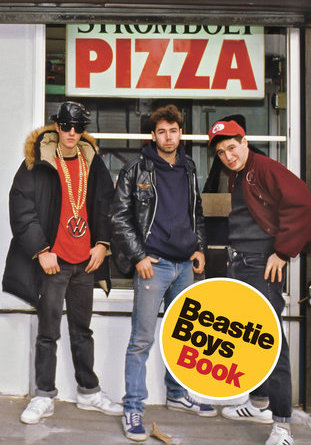
This is a graphic, photographic, and wordy treasure for fans of the Beastie Boys, (an all time favorite,) yet I also encourage casual readers to treat themselves here. This book is a feast of information, storytelling, and fun visuals. It’s like a little microcosm of what Beastie Boys did so well for so long: they took existing forms of music and remade them into awesome new forms. And they sounded unlike anyone else. So it is with Beastie Boys Book, familiar in its form, (oh, it’s a book alright,) yet so unlike any other book I have ever seen.
They have documented their backgrounds and beginnings, their fame, their influence and their debts, their foibles, their times, and their fuck-ups in glorious detail. The book is also a love letter to their dear friend, beautiful soul, and fellow Beastie, Adam Yauch, who died in 2012. Even just flipping through Beastie Boys Book is entertaining.
Another good music read is Daisy Jones and The Six by Taylor Jenkins Reid (2019 Ballantine Books, 355 pages.) The book is set up like an oral history of the swift rise and blazing success of a (fictional) group of rock musicians who come together to form a legendary band in California in the 1970s. The interview/oral history format works well as a pacing device, (the book really moves along,) and the format is effective for getting the multiple perspectives, opinions, and egos of the vibrant characters involved with the band.
Reid really captures the sex, drugs, and rock-n-roll indulgences of times. She also grounds readers in that golden age of California rock that took over the world. And maybe her best trick is making us think of the fictional Daisy Jones and The Six as being as iconic as actual bands and performers like The Eagles and Fleetwood Mac.
The book is being turned into a 12 part TV series, (it would not be a surprise to learn that the rights were sold before the book was even published,) and I will be tuning in.
And here are a dozen recommendations for listening from 2019, in case you missed them.
Swim Team – EP by Christelle Bofale.
The Age of Immunology by Vanishing Twin.
Placeholder by Hand Habits.
U.F.O.F. by Big Thief.
Deceiver by DIIV.
SPECIAL ATTENTION:
Quiet Signs by Jessica Pratt (Mexican Summer Records.) Pure witchy magic. Casual, almost effortless-sounding, Pratt mixes her distinctive vocals with folk guitar. Try: This Time Around
SASAMI by Sasami (Domino Records.) Shoegazey at times, great 60-s influences of jazz and pop. Try: Morning Comes
Father of the Bride by Vampire Weekend (Columbia.) Brilliantly varied. Masterful. Try: Sympathy
Chastity Belt by Chastity Belt (Hardly Art.) These pretty songs probably logged more time playing in my headphones this year than any others. This group provides superbly laid back, slightly shaggy guitar rock with lovely lyrical self-reflection. Try: It Takes Time
FAVORITES — TWO artists at their individual PEAKS:
Norman Fucking Rockwell by Lana Del Rey. Nearly perfect in capturing it’s weedy southern-California vibe. Her singular lyrical abilities and the production set her apart from the rest of the pack. Just listen to the whole darn thing, ok?
All Mirrors by Angel Olsen (Jagjaguwar.) It has been critically noted that some of Angel Olsen’s songs sound as if they have always existed. Here, she is so confident, so big, and so, so beautiful. Try: All Mirrors
Finally, I wish to introduce readers to Thundercat, our new family member, and probably a regularly featured beast on this page for the future. Meow meow. Ciao ciao.
1 January 2020
_______________________________________________
Genius Steals
Possibly attributable to the great thief and aphorist Oscar Wilde:
“Talent borrows – genius steals.”
It is sometimes surprising when something can trip our tastes and tip the scales of our opinions. What if that something is stolen?

If you’ve liked but not loved Angel Olsen, and you are a wild fan Annie Lennox and her work in the duo Eurythmics with Dave Stewart, prepare for a tripping and a tipping. Olsen’s lovely new work, consciously or not, reaches into the past for a Lennox-y vibe that embodies both nimbleness and strength. Her new album is due this week.
Olsen’s newest singles, Lark, along with the title track, All Mirrors, are already available to listen to. The pairing of her exquisite singing with the huge sweep of cinematic production on the latter song is thrilling.
I love what Sam Sodomsky wrote about Olsen in his Pitchfork review of the song All Mirrors: “Some of Olsen’s songs feel like they’ve always existed—lost country standards or themes from old romantic films…” That seems just right – and in addition to reminders of Annie Lennox in All Mirrors, think of the best James Bond film themes like Shirley Bassey’s Goldfinger and Diamonds Are Forever.
This is so confident, so big, and so beautiful.
All Mirrors by Angel Olsen from All Mirrors out 4 October (2019 Jagjaguwar).
This staggering song of deep longing and the willingness to risk everything to make a human connection will celebrate its 35thanniversary in November. Wow–I love it beyond description.

For the Love of Big Brother by Eurythmics from 1984 (For the Love Of Big Brother) music from the motion picture Nineteen Eighty-four (1984 Virgin).
Another track that is available to hear and also feels like it has existed forever is Haim’s Summer Girl. At first, it seemed like a guilty pleasure pop song, and on repeated listens it revealed itself as a genius reworking of elements from a couple of masterful mega-pop songs: Annie Lennox’s Why, and Walk on the Wild Side by Lou Reed. There is the propulsive trap and bass line essentially lifted from Reed’s song and modified to move us along. Summer Girl even features a rework of Reed’s signature “doo, doo-doo, doo-doo-doo-doo” Also, there are the horns and strings that are mixed in David Bowie’s production of Reed’s song. Near Summer Girl’s end, there is an elegantly rapped set of lyrics that are inflected and driving the song in the way Lennox rapped/sang the insistent, familiar pleas of Why.
Summer Girl by Haim (2019 Polydor).
Why by the brilliantAnnie Lennox from Diva (1992 RCA/Arista).
Walk on the Wild Side by Lou Reed from Transformer (1972 RCA).
1 Oct 2019
______________________________________________
Transformations
Sights, scents, and even slants of light can send us straight to our memories. I am transformed, taken to different times in my life, by seeing certain cuts of shadow and light in the sky — the way a low-slung sun shines, fervently tilting its beams through trees, early on a warm, blue summer morning, eager to spread its heat.
Nearly all of us can be taken back in time by delicious kitchen aromas, sprightly perfume or dankly scented oils, or even the mustiness of a summertime basement. Suddenly, through a breath, you are rushed back into a pleasing or wistful memory.
As I get older, sound, and most especially musical sound, is a memory conjurer.
Two homes in my neighborhood, both large by the standard of houses built in their 1930s vintage, are undergoing total transformations. Both are made of red brick that had been at some time painted white. Now, the paint from each has been mostly sandblasted giving each house a new appearance, pleasantly weathered. The houses sit about four blocks from each other, and I like walking past them often to watch the progress and note the different philosophies being used for renovation.
As I approached one house on a recent walk, there were workmen breaking up a large old concrete and stone patio. The work was done “old school,” with sledges and chisels. I saw a man wheel barrowing away debris, but I didn’t hear jackhammering.
Instead, I heard music. I heard a violin concerto.
One expects to hear music playing from construction areas. Usually through a beat-up black and yellow Dewalt work-site radio — tinny pop, or super-trebly classic rock, or Regional Mexican music like Mariachi, Norteña, Ranchera, or Tejano. But here, on this work site radio, was Mendelssohn, loud enough to hear clearly from the street as I passed by.
Not what one would expect…
In this case, that unexpected music shot me through with a memory of a morning in 1987.
I started piecing the day together – it was over thirty years ago. Was it windy and gray on that day? Or was the sun’s light bending through leaves in the way it was on my neighborhood walk? Was it late September or the first part of October? I couldn’t remember. I thought it probably was cool and overcast, but no matter the weather on that long ago day — it was the hushed and steady determination of the workers, and especially the music, that brought my mind to my mother and a morning when she and I worked together gardening.

Early October 1987. Together, my mother and I pruned plants and cleaned up flowerbeds around my parent’s house. We transplanted chrysanthemums from pots into the ground. We delicately spread thick, fresh mulch around roses. On the porch attached to a short brown extension cord was a portable Sony “boom box” that I had brought outside and set up. And then I remembered clearly, that morning was gray and windy – it was cool, too. Autumn was settling early.
On that 1987 morning she would have been pretty close in years to my current age. And although the song swirling on our portable player was not the same – Bach, not Mendelssohn, the memory surged. There I was in my head, transformed, a young man gardening with his mother – a cello, violins, a viola, and a harpsichord flowing through the winter-promising breeze.
We worked together without rushing. We worked together simply and quietly enjoying our tasks. And here is the most important part of the memory — we worked together and communicated with almost no talking.
In addition to communicating silently about our gardening chores, we were also communicating about this: Pure Uncertainty. I had finished college that spring and had spent the summer pretty actively not planning for any kind of post-college life. I had worked most of the summer while living at home. I had been away from family and friends, and uncommunicative, on a trip to Italy during August and September. I was going to be moving away from Nebraska to Boston in a few days and had no real idea about what I would be doing there – not even about where I might live. Most punishing for her — my father’s health was poor. She was filled with well-founded apprehension, and I was filled with eagerness and anxiety.
Many questions – scant inklings of any answers.
It all worked out. In the way that gardens need attention, or the way that homes need attention, need periodic transformation — their shutters removed, their paint sandblasted, their patios broken up and carted away – our lives get shaken up and we metamorphose. And it all works out.
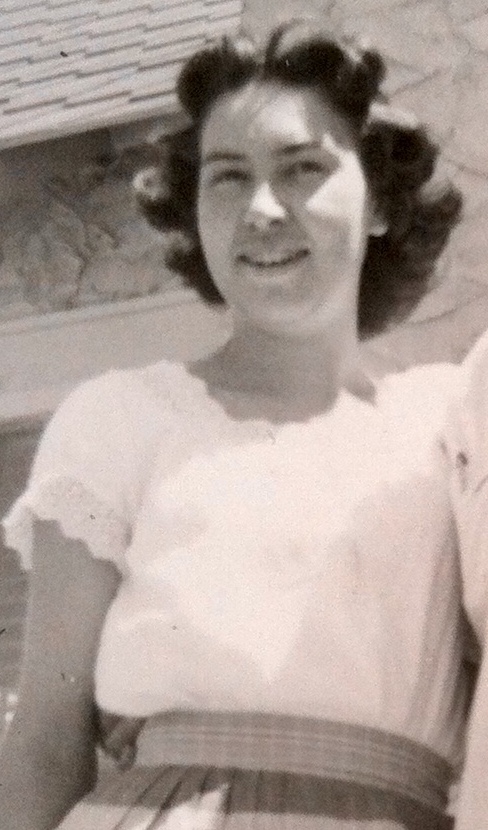
I am grateful to have had this memory, spurred by the sounds of stunning classical music emanating into the open summer air from inelegant speakers. Most of my recent memories of my mother have come from her in her later, end years, when she was confused and so frail. But I got a lucky picture in my mind of my 1987 mother — her friendly ghost. I began to imagine her at different ages. She was younger, surer, sound, and healthy. And I got a clear glimpse of a morning from my past when my mother and I found several calm moments together, quietly connecting, each forgiving the other of our fleeting fears while our lives underwent their separate violent evolutions.
It all worked out.
21 August 2019
__________________________________________________
Vanishing Twin
It’s time to embrace some witchy summertime grooves. Vanishing Twin is a project based in London, but whose members include French, Italian, Japanese, and British musicians. This variety of nationalities and backgrounds has certainly contributed to the wild diversity of influences and sounds that can be enjoyed on the group’s new release, The Age of Immunology. Beyond calling this music experimental, it is nearly impossible to classify.

As happens repeatedly on this page, it is not a reach to compare Vanishing Twin to Stereolab. The group likewise pulls from the same bag of tricks that Stereolab successfully used to combine everything from jazz to French yé-yé to swoony Bacharach-styled lounge music. Another clear influence is Broadcast. (One of the members of Vanishing Twinis Phil MFU, [Man From Uranus,] who worked with Broadcast.) Both acts share a super-cinematic, deeply psychedelic vibe with the spacy, noisy sensibility of kosmische Musik.
Cathy Lucas is the main vocalist and our contextual guide through these songs. She also plays violin and mandolin as well as other instruments. She started Vanishing Twin as a solo project in 2015 after working with other bands including Fanfarlo and Innerspace Orchestra. Now she has grown the outfit into its current cosmopolitan form.

She is also a survivor of a medical syndrome called vanishing twin. At around age 12, Lucas learned that before her birth, her mother had been pregnant with twins. As happens in roughly one out of every eight multiple pregnancies, either the mother or the other fetus resorbed the other fetus(es) when it/they discontinued developing. As a result, a single surviving baby is born, and for some of these people, there is a sense of survivor’s guilt. The name for her project comes from her very fascination, and her existence in this light seems to provide Lucas with ample material for meditating the implications of ‘what might have been….’
Nearly everyone at some time entertains thoughts of what might have been. Those meditations can, in some cases, land one in a great imaginative playground of memory. What might have happened if I had actually made a move to such and such city? What if I had pursued this dream, or that one? How might my life have played out, if only… In other cases, those meditations can place one in a battle zone of mental anguish and regret.
You will hear new things upon each listening. One haunting aspect of hearing much of Vanishing Twin’s music is how much Lucas’s voice reminds of the great Trish Keenan who died in 2011 and created so many masterpieces with her band Broadcast.
This is somehow dark and bubbly at the same time. Give these tunes a try and let the groovy séance begin.

Magician’s Success and KRK (At Home in Strange Places) from The Age of Immunology by Vanishing Twin (June 2019 Fire Records).
Come On Let’s Go by Broadcast from The Noise Made By People (2000 Warp Records).
And of course – here is this.
Coming Down and Hard Coming Love by The United States of America from their self-titled record (1968 Columbia).
23 june 2019
____________________________________________________
Have a Good Summer
The friendly old refrain is very much alive on America’s campuses: “Have a good summer.” I was working this sunny spring week at a big university in the middle of the country, and those words were in the air a lot. There are friends and acquaintances, over 30,000 of them, who lived, worked, and played together for eight or nine months during the academic year, who said goodbye for a spell as they finished exams and split off from each other.
As we interacted briefly, a few kids, (strangers to me,) even gave me, “Have a good summer,” as a pleasant goodbye. It is a nostalgic phrase to hear, and my mind floods with images of fresh young faces — long-ago friends engaged in smiley handshakes and hugs — memories from 35 years ago.
Well, I intend to have a good summer, and I will need a proper soundtrack for the season. Mine will begin with lots of songs from the recent self-titled release by Sasami Ashworth, who performs as SASAMI.

She is new to me. SASAMI is a music school graduate and multi-instrumentalist. Until recently she was the keyboard player for the rock outfit, Cherry Glazerr. A little over a year ago, she left the group to pursue her own career as a solo artist. In addition to playing keys she is a wonderfully straightforward and expressive singer. Her vocals sometimes carry an unaffected quaver that matches the woozy synth melodies. The combo’s guitarist is Sasami’s brother, JooJoo, who plays his instrument with the aural equivalent of someone wielding a beautiful kaleidoscope.
Fans of early shoegaze music, (think Cocteau Twins,) and fans of the un-bright, Bacharach-styled, 60s-influenced jazz/pop of groups like Broadcast and Stereolab will find lots to love.
Here are a four songs to get you started. Keep them in your back pocket for playing some night soon when the sun sets late, and the sun-warmed earth radiates its insistent heat upward after dark.
Not The Time; Morning Comes; Jealousy; and on the quieter side: Free by SASAMI from SASAMI (2019 Domino Records).
12 May 2019
_____________________________________________
Quiet Signs
Her voice sounds as if it is travelling across a great distance to reach you. There is not only a sense of exaggerated physical space between Jessica Pratt’s voice and our ears, she also summons the feelings on her masterful new album, Quiet Signs, that her songs have travelled through the distance of many years.

At times Pratt sounds as if she sang a song while standing on the breezy parapet of a castle at sunrise during a cool medieval morning — she sang through a pleasant swirl of fog and wood smoke — and her song has been making its way gently toward you, finally having arrived through the mist of centuries.
At other times her quiet voice and her simply plucked guitar seem to be floating through the very dimly lit air of a low-ceilinged bar in California during the middle 1960s. There is Pratt standing with her guitar, singing from a corner stage — you can feel the nighttime outside, and along with the faint smell of beer, coffee, and cigarettes, the room is peppered with scents of patchouli, cinnamon, vanilla, and cloves.
Quiet Signs is Pratt’s third full-length release, and it is brief — just nine songs presented in less than half an hour. Pratt’s nimble voice and straightforward guitar are front-and-center, with subtle atmospherics perfectly provided by flute, piano, organ, and string synths. The record is a sprightly marvel.
How casually, almost effortlessly, Pratt delivers her pure, witchy magic. Here are two songs to check out by Los Angeles artist Jessica Pratt from Quiet Signs (out 8 Feb 2019 on Mexican Summer Records.)
9 February 2019
_________________________________________________________________
As Easy as Breathing
Sometimes only hyperbole will do.

Adrianne Lenker has made abysskiss, the greatest, most timeless sounding guitar folk record since Nick Drake’s Pink Moon. Lenker recorded her new masterpiece, abysskiss, in one week. (She sometimes performs as the singer and guitarist of Brooklyn band Big Thief.)
Dripping with glorious minor keys and chords, the songs are delivered as easily as breathing. There are ten jewels to wonder at, given in 34 minutes. Upon finishing listening, the feeling one gets while rushing to restart the whole enterprise is that someone has just spent a half an hour sharing with you her most beautiful secrets, her most marvelous observations.
Nothing Lenker presents us with seems remotely forced, rushed, or insincere. In addition to Nick Drake, there are pleasant reminders of other artists. She invokes Mark Kozelek when he is at his kindest, Elliot Smith at his breeziest, Suzanne Vega at her barest, most stripped-down confessional.
Incredible playing and singing. The song’s effects are heavenly; almost sacred. But the effects are formed by this generous artist’s acute observations of the earth, and her stunning willingness to lay them open to us.
How could a better set of songs have come to us in autumn, when the spinning world turns crisp and colorful and we contemplate the plays of light and shadow between bright days and long nights?
Here are two to try by Adrianne Lenker from abysskiss (2018 Saddle Creek Records):
23 october 2018
_______________________________________________________
Slow Screaming Bewilderment
I welcome the nihilism. Message received. Just these four words and a link. Sent from my friend Jeff, I clicked the link. The band’s name: Frigs. The first few seconds of sound sent me back in time to the days of post punk at their darkest and most glorious fringes.
The song Jeff sent is Talking Pictures (linked below.) It announces itself with a fast ringing guitar that is quickly joined by a thick, urgent drumbeat and clear bass. Frigs use their instruments like weapons, and the band’s atomic bomb is the voice of Bria Salmena. Her singing combines the best of rock and roll theatricality with sincere rage and desperation.

Basic Behaviour is Frigs first full-length release and it’s a really great listen. It is filled with lots of intensity and lots of two-and-a-half to three-minute songs. There really is a strong whiff of nihilism hovering over this enterprise – and it is strangely purposeful and super satisfying.

The group can take a tender turn, too. Songs like the beautiful and dreamy Gemini are keyboard driven and brimming with a spaced-out longing. There are also meltdowns like Trashyard, a tune that starts with a warm and assured bass groove and marches through its six plus minutes swirling into slow, screaming bewilderment.

Frigs are based in Toronto, and have shared bills with the likes of Lydia Lunch, Protomartyr, and Deerhoof. They will support SUUNS for the Canadian leg of their North American tour this autumn. After that, a British tour with a couple of dates possible in Europe. I imagine that as a live act, Frigs are savagely affecting. Catch them if you can.
Take a few listens. From Basic Behaviour by Frigs (2018 Arts & Crafts):
13 September 2018
_____________________________________________________
Twinkly
Hopefully you had one too – a dark summertime place that you could go to – an isolated country place where you could lay on the hood of a car at midnight and take in the perfect sky and its impossible thickness of stars.

We had a place east of town that we called Sleepy Hollow, far enough from the city to support the magical blackness of a rural summer night, and close enough that we could see the orangey glow of our city lights spread on the distant horizon.
A couple of times each week we’d drive to Sleepy Hollow. We rode with windows down and music filling our ears. The Smiths, R.E.M., or Siouxsie and the Banshees. Simon and Garfunkel or The Beatles. By the edge of town, the volume would creep up. By the turn off the highway to a dirt road that led us through miles of cornfields, music roared from the speakers, wind spilling in, filling us with whooshing sound.
We’d stop on the dirt road on a low railroad bridge and wait for one of the frequent, mile-long freight trains to rush under us to push up the summer heat and dust. Then northward to the gentle hills on the dirt road where sometimes the fields sparkled with thousands of fireflies, mirroring the sky.
Then a preserved stand of a dozen Cottonwood trees at the edge of a cornfield provided our Sleepy Hollow. We’d park at the far edge of the trees so we could see the full flickering sky. Time slowed. We would stalk along the road and trade stories of our day, sorting out our passions. Eventually we would land on the car hood and sip beers and smoke cigarettes and get lost in silence. We would cast our individual twinkly eyes up to the unimaginable points of glistening stars.
Night inspires. My friend, Amy Plettner, an award-winning Nebraska poet, used a nighttime drive, music, and a great artist to inspire her to strike a feverish and sensuous tone with her poem:
Nebraska Road Trip With Tom Waits
Highway sixty-six, Sunday, early morn,
churches still dark, steeples shrouded with fog.
Streetlights flash yellow. We take no caution,
whiskey gone from our breath,
headed west into a thick drizzle. It’s April,
a Christmas star atop the grain elevators,
corn the true Savior, and the path to salvation’s
an iron rail guiding us past Tuxedo Park,
Avengers playing at the Isis Theatre,
and every hour’s happy hour at the Someplace Else bar.
The streets are all named after trees, though this is prairie,
and I’m still living on the alimony.
You’re wearing your wedding ring,
cut diamonds and garnets in a swirl of silver-gold.
You find your way beneath my skirt.
We’re cruising in the red Galaxie.
I close my eyes, move to the slap of wipers,
the rain getting harder.
(Originally published in Misbehaving Nebraskans 2018, and reprinted with permission of the poet.)
Here is a great new song by some kids who are now about 20 – the age now that we were then:
Twinkle by Sorry from the single Showgirl (2018 Domino).
The Man:
I Beg Your Pardon by Tom Waits from One from the Heart (1982 CBS Records).

Disintegrating:
Christine by Siouxsie and the Banshees from Kaleidoscope (1980 Polydor).
Then we’d go get donuts and coffee.
Ain’t Even Done With the Night by John Mellencamp from Nothin’ Matters and What If It Did (1980 Universal).
14 june 2018
_______________________________________________________
Place of Memory
Languages die surprisingly often, and for a multitude of reasons. It is probable that most of the languages that die are so remote that they do so unrecorded, and so will be forever lost. According to a 2015 article in The New Republic, of the roughly 7,000 diverse languages now in existence, linguists predict that half will die over the next century. More aggressive forecasters assert that 80 to 90 percent of existing languages will die in roughly the same amount of time. A National Geographic (2012) article claimed that a discreet language dies about every 14 days.
Some languages are relatively rare, but they hang in there. For example, in Great Britain, some 5,000 people claim to be conversational in Cornish, one of three Brythonic (Celtic) languages. (Welsh and Breton are the other two.) But Cornish may boast fewer than a thousand fluent speakers, and perhaps far fewer — only 400-500. (By comparison, about 6,000 people are fluent in the Lakota language.)

The artist Gwenno has released a wonderful new record called Le Kov, sung entirely in Cornish. You may be sure that its pleasures will not be missed because of a language barrier. Gwenno Saunders was a member of the 2000s pop group The Pipettes. She then released a debut solo record as Gwenno called Y Dydd Olaf (2014) sung mainly in Welsh, with one song in Cornish. Le Kov is her second record.
Her influences enjoy a broad range, and there is a pervasive wooziness to the production that compliments all these stylistic influences. Piano is up front on some songs, with tidy string orchestrations and horns joining the act, so there is a distinct and groovy Bacharach vibe.
Fans of Broadcast and Stereolab will be rewarded by the confident and laid back la-la vocals. Some of the more dedicated electronic instrumental backing would be right at home on a Boards of Canada record.
Welsh singer Gruff Rhys, who fronted the marvelous Super Furry Animals, joins Gwenno on a song, and several of the rhythmic elements on Le Kov are reminiscent of SFA, with driving bass and drums.
I love it when an artist can mix so many influences and come up with something that still sounds so original. The title means “place of memory.” This page obsesses with memory and music’s ability to act as a portal both for remembrances, and the building of new memories. There is much here to set us free in our memory, despite the lack of lyrical understanding. It is just beautiful and it is a testimony to the power of music to transcend the sometimes confining nature of language. Its passion shines. Below is a link to a song from the record, called Jynn-amontya:

Le Kov by Gwenno (2018 Heavenly Recordings).
Slow Life from Phantom Power by Super Furry Animals (2003 Epic).
9 March 2018
_______________________________________________
The Loss of Dear Things
This has been going on for months – maybe even years. I think I am losing my hearing. Certain voices have become hard to hear – it is almost like the sounds don’t register even as I see words being formed on lips, and it is especially hard to hear some voices when there is a noticeable bit of background noise. So, I made an appointment to have a hearing evaluation.

As I anticipated the evaluation, I thought of reasons that may have contributed to hearing loss.
I suffered from repeated ear infections when I was younger. One ear infection episode in my mid-20s was so protracted and painful (multiple steroid and antibiotic courses) that I was damn near ready to turn in my ears for good. Just be done with them.
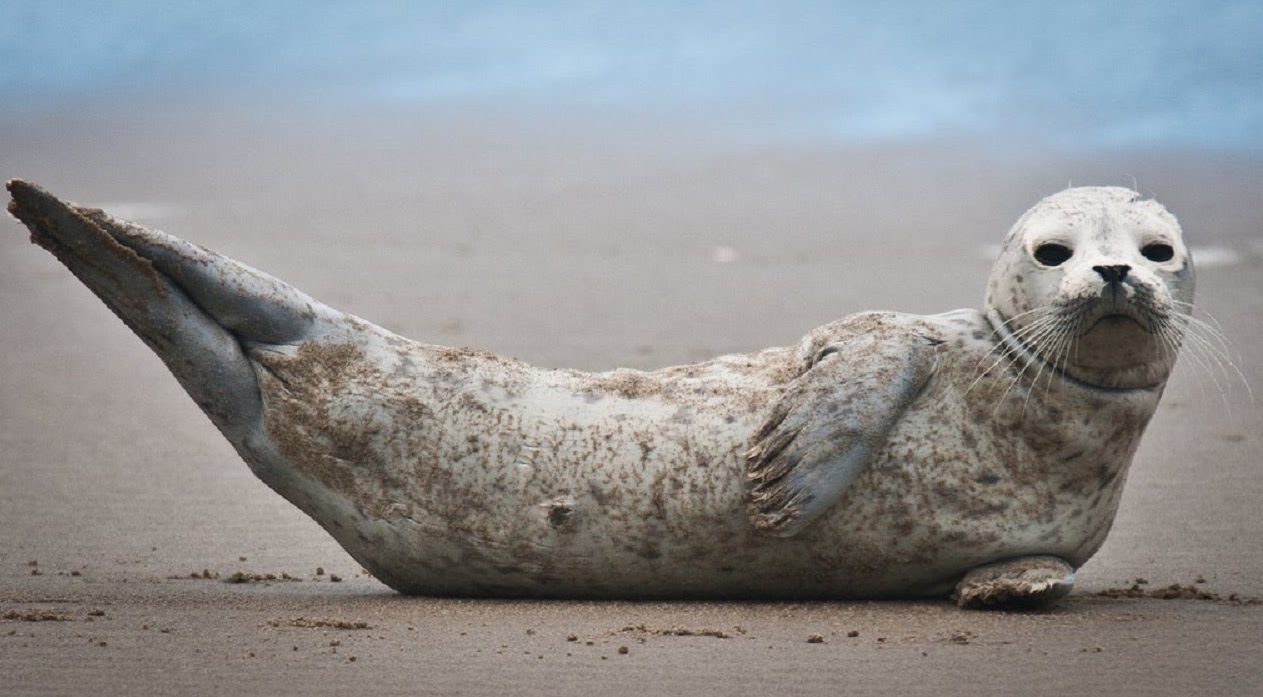
Could an ear infection from half a lifetime ago – one that lasted for several weeks – have tipped the balance toward a slow hearing loss?
Through the years I have worked at some super loud jobs, but have often worn ear protection. Would the times I did not wear ear protection have created a crack in the armor to contribute to some permanent hearing loss?
And then there are these.

These tickets stubs represent a fraction of the live music concerts I have attended over the years – mostly without ear protection. There would certainly have been a negative cumulative effect on my hearing from all the beautiful (and very loud) music I heard through the years. Could it have been a single incident? Was it Deerhunter in 2010? Stereolab several times in the 90s and 2000s? Metallica in 1989? Dead Kennedys in 1984? One of the half dozen or so times I got to see the Flaming Lips?
The evaluation was this morning. I have been thinking for weeks about what hearing loss would really mean to me. What would it be like to lose something so dear?
Then, last night, I learned that someone who was very special to me had died. (She was special to everyone who knew her, by the way.) My friend, my Dear Steffanie, had an incandescent smile and an easy laugh. She also had a very cruel disease, (as well as punishing complications that followed her disease,) that she dealt with in an almost superhuman way. A truly brave way.
We became friends in junior high school and became closer in high school. We went to the same college, and perhaps it was there especially, as we matured and our lives became more complicated – even though the trajectories of our individual lives continued to diverge – we became closer still. Our friendship, (even just thinking about our friendship,) acted throughout my adult life as a placeholder for returning to a time when things were blessedly simpler.
Learning that Steffanie had died made me want to listen to music. Music was her default mode, and she was herself a talented, joyful singer. At first, I thought of listening to sad, pretty songs sung by women. I listened to Teardrop and Song to the Siren sung by Elizabeth Fraser.
But I quickly concentrated on the news that Steffanie had died at peace, on her terms, and surrounded by family and with her friend Jon. I decided to find some upbeat songs from the time when we were young. I wanted songs that would represent youthful abandon. I disregarded the lyrics or found instrumental songs that would make me close my eyes and bob my head. Songs that I would want to play very loudly. Songs to remember times when my friend was young and healthy. Here are a few.
You, The Night, and The Music by Tones on Tail from Burning Skies EP (1983).
I’ve never felt better in my life…. The Classical by The Fall from Hex Enduction Hour (1982).
Magic, magic, magic… Every Little Thing She Does Is Magic by The Police from Ghost in the Machine (A&M 1981).
Ladybird by XTC from Mummer (1983).
Windout by R.E.M. from Dead Letter Office (IRS recorded 1984 – released 1987).
I “passed” the hearing test this morning, which is good news. I get to keep exploring what is going on there, but for now the assessment is that my hearing is normal, and, of course, the whole thing seems pretty insignificant in light of Steffanie’s passing. So I have let that go for now and instead I have been thinking about how lucky I have been to have had such friendships. Even when we’d drift apart sometimes, we could pick back up where we left off with a shared language.
I have been thinking of all the people whose lives my friend touched. I have been thinking about losing dear things. And I have been thinking that there are some things that you never lose.
Dear Steffanie, goodbye. Among other things, you were a proud redhead with a blinding grin. A teacher, a singer, mother, daughter, sister, and friend. There was no one else like you. Your very presence was cheering. You were easy to love. Thank you for the memories, dear things I will never lose. Goodbye, Dear Steffanie.
Barramundi by This Mortal Coil from It’ll End in Tears (4AD 1984).
Rest… Ma Soeur by Tindersticks from Nénette et Boni.
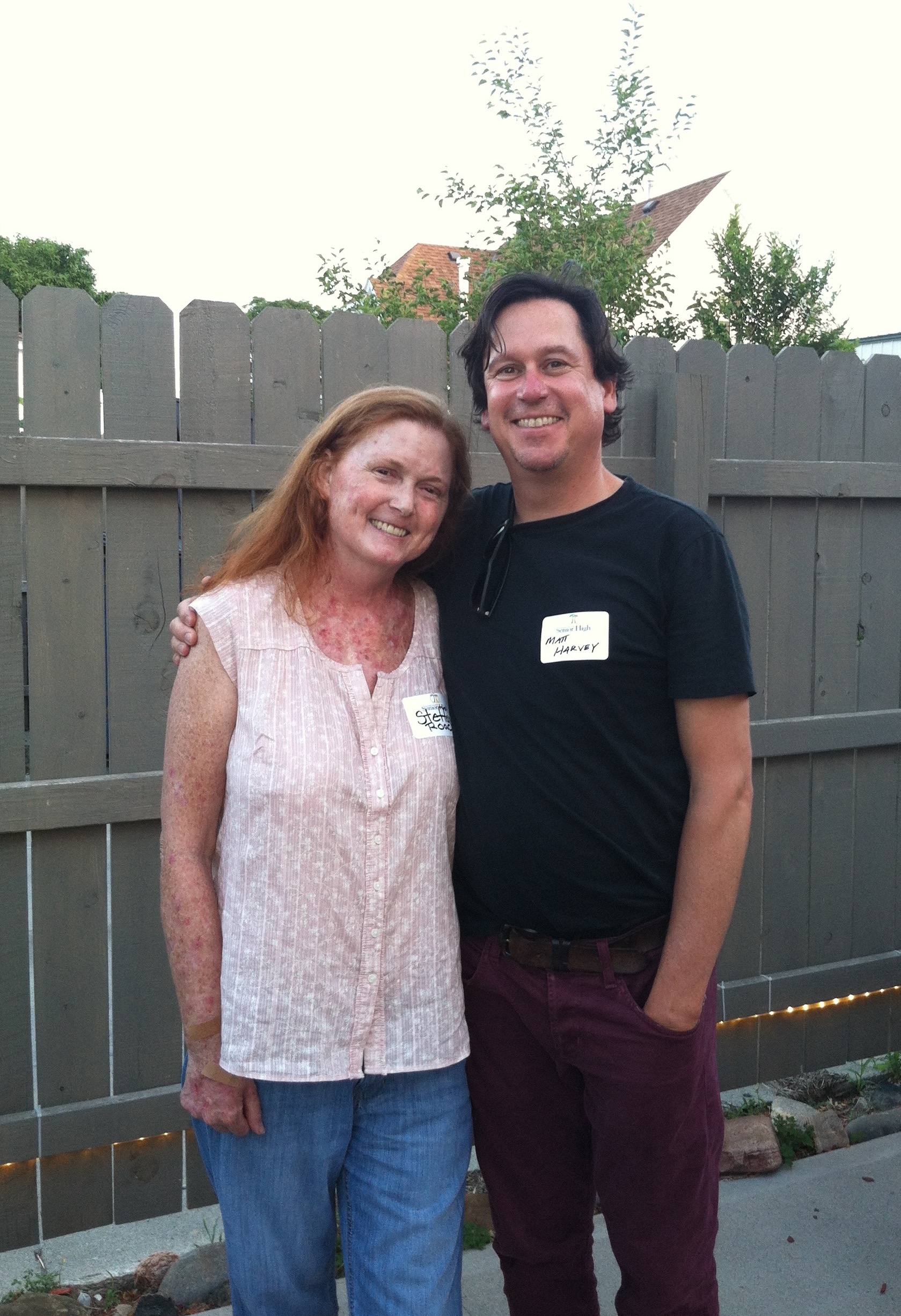
28 Feb 2018
________________________________________________
This is Not a Rabbit
Sometimes the old world feels a little wobbly – half a click off its axis – and our comforting routines evaporate. Things are not as they seem. On a walk this morning, the “feels like” temperature was -11. The ground was covered in still white snow. Tall bare trees crackled on either side of the trail, and in the distance ahead of me I watched a brave and fluffy rabbit take twenty or so hops steadily forward. My rabbit then leaped on a tree trunk and scramble up to its limbs. My rabbit was a squirrel. Weird.

If you are lucky like me, routines take a hit because of positive life changes. In addition to other things that have taken my attention, I’ve happily had extra work this year, and we moved to a new home – so my off-kilterness is both explainable and manageable.
I gravitate towards songs to help me find some balance, and this year has provided bountiful musical treasures that were beyond my ability to harvest and bank them. All that I have missed listening to greatly outweighs what I have caught. But these are a few of note, including a couple of **recaps from earlier in the year.
**The lasting power of punk is evident here — Priests are not satisfied to simply build graceful songs from the rubble of musical bedlam. They are also taking the next step by making their sound essential. This music has consequences – the band wants you to (for the love of god!) feel something. Artistic rebellion takes the form of making beauty from chaos. Nothing Feels Natural is the title track from this year’s release by Priests (2017 Sister Polygon Records).

I love Fleet Foxes Crack Up, and one of 2017’s musical highlights was when Jude and I got to see them perform an outstanding concert supporting their new record. (The link will take you to the full album, released on Nonesuch.)
**Through luxuriously layered vocals and crafty instrumentations Moses Sumney investigates intimacy, isolation, and existence. Experience a journey inward with his deeply introspective recent release, Aromanticism (Jagjaguwar.) Try Make Out in My Car.

I keep going back to Mac DeMarco‘s This Old Dog (2017 Captured Tracks.) Chilled out and thoughtful beyond its simplistic surface, this is a great representative tune: My Old Man.
Off the beaten trails, Simon Raymonde, co-founder of Bella Union Records, and bassist of my beloved Cocteau Twins, formed a new band called Lost Horizons with former Dif Juz percussionist, Richie Thomas. The new release is Ojalá, and I learned about his new project from an interview he did with Bob Boilen of NPR. It is linkable here, AND you can listen to a beautiful song from it with vocals by Karen Peris called, I Saw The Days Go By, with barely a scroll.
**RTJ3 by Run the Jewels (self-released) probably logged the most headphone time for me this year. Killer Mike and El-P pack so many ideas and such power into 14 songs that I often found myself hitting replay at the end of one listening to begin another. This one really moves: Call Ticketron.
There is one special release from this year that has occupied my thoughts a lot. I have been concentrating on it, and here are a few ideas:
My friend Tama is a dedicated meditator. She compared the feeling of going a day without meditating to the icky-ness of going a day without brushing one’s teeth. I feel that way on days when I don’t get to take a walk. I guess it is my form of meditation. Even when walking with a companion, or with headphones on, I get the sense of clearing my mind, and I have loved taking regular walks since I was a little kid.
Fairly often, I return to the town of my boyhood. Sometimes when I make these visits I carve out a few minutes to drive familiar roads and lay eyes upon some cherished old sites. When I re-explore my hometown it seems each time to have shrunk.
For instance, I recently drove roughly the route from the house I grew up in to my old elementary school, a trip taken on foot many hundreds of times. At age eight or nine it seemed far, and in my memory the walk almost always provided at least a bit of an adventure. In fact, though, it would take perhaps six or seven minutes to walk that distance now, over 40 years later.
I think this is not uncommon. The world seems huge when you’re a kid. And to me, in memory it seems nearly paradisiacal. Returning as an adult, the un-hugeness of my own remembered world is disorienting.
Sometimes one craves the possibilities of a big world. Driving around my old town gets me thinking of all my years growing up there, when the world seemed larger. I think of fights and friendships; exploring fields and ponds on the edge of town; crushes, romances, and the little heartbreaks that did not seem little at the time.
As I drove around on that recent visit, I thought especially of the summers I used to spend there between college semesters. And I thought of a particular work of art, a movie, that inspired and helped to inform my aesthetic. When I was about 19, Jim Jarmusch’s deliberately slow and wonderful film, Stranger Than Paradise, appeared. (Click on this for a summary of Stranger Than Paradise.) It was a movie I watched repeatedly and studied. For a few of my friends and me it was a formative movie that featured characters that were extremely different from us, but they were people we recognized and related to. Jarmusch had a vision — in his strange paradise, the mundanity of everyday existence was given an exotic sheen; life’s inevitable boredoms were studied and cool.

Like those adventurous walks to and from elementary school as a child, Stranger Than Paradise made the world seem huge, and the movie was something I wanted to be as familiar with as the steps covering the blocks that I walked each day as a little kid.
All this is to say, sometimes when we are not looking, we get lucky and are provided with new art work that inspires and helps to re-inform our aesthetics. In 2017, such was The Ooz by King Krule. There is no kooler kat than King Krule, and his unclassifiable music makes my wobbly world seem pleasantly bigger and full of possibility.

There are elements here of jazz, rockabilly, rap, and ambient. I think I will be listening to this for a long time – and I certainly do not tire of this tune — check out Dum Surfer.
It sure wasn’t perfect, but I will look back on 2017 with some special fondness. Here is hoping that 2018 provides everyone great memories, and lots more good music. Enjoy!
27 December 2017
_____________________________________________________
September Roses
Ways of expressing how music makes us feel are as limitless as our own imaginations. Recently, my friend Cathy described the experience of seeing a concert in this way:

“September roses from the yard … an image of what Fleet Foxes’ show sounded like last night.”
That’s really good, isn’t it? You get the message of natural beauty immediately – even if you don’t know the band – and especially if you are familiar with the sometimes soaring, sometimes intimate, and always pretty music of Fleet Foxes.
Music can be, music is, much more than just the arrangements of notes or sounds. The image of a bouquet or a mountain forest in flames; the aroma of rich baking chocolate or a cloud of sweat; a slant of light that forces you suddenly into a squint, or the shiver of waking from a dream: these are music, too, in their simple or complicated evocations.
Music inspires us to our own expression through forms as varied as romantic dance and violent protest. Music influences personal styles as far flung as Ellington-style elegance, the pleasant messiness of neo-hippie chic, or torn up and raggedy punk.
Sometimes, though, music takes us inward – often straight into our own heads – and we focus on things like the disparities of our own self-perceptions. We may ask big questions like, “What is my place in the world?” or “What is my place in the universe?” These questions may arise from insecurities or from healthy and continual self-discovery, and the very asking of them may help us to learn about how we relate to others.
Experience the journey inward with the recent music of Moses Sumney whose newest release Aromanticism, is deeply introspective. (Out 22 September 2017 on the Jagjaguwar label.)

Through luxuriously layered vocals and crafty instrumentations Sumney investigates intimacy, isolation, and existence. The 36-minute record took three years to make, and while the sounds are often light, dreamy, and ethereal, the thoughts that Moses Sumney provokes are heavy. The music weave guitars and pianos with unexpected live instrumentation like clarinets and flutes, and there is a mass of electronic musical mastery used through beats and looping.
At its least adorned, Sumney‘s music can remind you of the plainest (and maybe the greatest,) songs of Johnny Mathis – distilled to feature almost miraculous vocal ability. At its most complex, there is in Sumney‘s music Radiohead‘s gorgeous and dreamy saturation of minor chords. And dreams are to be desired here. In an interview with NPR, Sumney said the record took a long time to make because he was, “…sculpting the sound to … be like a dream … I hope people will fall asleep [when they listen to it.]”

Check it out – these are gentle, confessional songs. Sumney describes Aromanticism as, “a concept album about lovelessness as a sonic dreamscape. It seeks to interrogate the social constructions around romance.” Headphones suggested. Italicized titles below are linkable to hear songs by Moses Sumney from Aromanticism (2017 Jagjaguwar):
His Web site, for concert dates and links to purchase his music:
Here’s Johnny:
An Open Fire and Tenderly by Johnny Mathis from Open Fire, Two Guitars (1959 Columbia).
27 September 2017
__________________________________________________________
The Sky’s Gone Out

Grasses low and tall, particolored petals, and lush leaves bent to strong breezes. In the warmth of the summer morning, cottonwood canopies made their watery wind songs. Bright and muted greens and umbers were below and all around us; a saturated azure sky above with wisps and blots of white and pretty grays in the clouds. We’d come to a tallgrass prairie after the dawn of a lovely Monday, 21 August 2017, and we walked half a mile to a hilltop to spend a couple of carefree hours.
There was a joy in gathering. We were hundreds strong at our specific location, folks laying out blankets and dotting the landscape in picnicky clusters, with sodas, beer, and wine. At the same time across the United States there were millions gathering in a roughly 70-mile narrow swath, having left behind jobs and other cares of their individual and collective worlds to witness a solar, lunar, and earthly pageant.
We shared positive motivations to come together; in addition to wanting to see a fascinating and rare spectacle there was an unmistakable vibe that was both invigorating and comforting. The vibe is currently also fascinating and rare; it was an incorruptible feeling that something wonderful would occur, and that nothing controversial was at stake.
A glorious convergence of the spinning, hurtling earth with the majestic moon would give us steady glimpses of our movement as we float in space, and eventually the moon would obliterate all but a spectacular corona of our sun.
When the blockage was total, we heard and contributed to a strange and welcome new music, a music that was not conscious of itself. Organic, impulsive, sincere, and wondrous, it was the human and natural sound of music coming from simple exhalations, or murmuring words, (Oh my goodness!) or whooping in a cheer. There was music of confused animals swirling in the newly cooled and darkened air.
We made music for a couple of moments based upon a crazy shared feeling: together we were small, or huge, or at peace. Together we were awed and simply at ease. Some thought in that moment of loved ones, or of the future of their children, or of the future of the earth, or of the solar system.
It can be reported with certainty that one humbled witness thought of his fortunate life with his wife, of his dear friends and sisters, and he thought of his moon-loving, deceased mother.
Not only was the sun eclipsed from our view, but cynicism and worry were eclipsed, too. We were looking up. And we were looking at each other.
“Life is but a dream …. The sky’s gone out.”
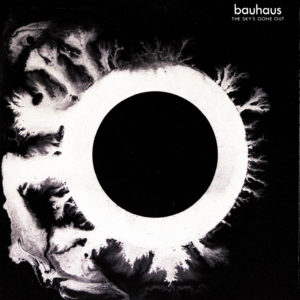
Exquisite Corpse and All We Ever Wanted Was Everything by Bauhaus from The Sky’s Gone Out (1982 Beggars Banquet.)
Ladies and Gentlemen We Are Floating in Space, the title track by Spiritualized (1997 Arista.)
Many thanks to my friend, Andy Agena, who captured the panoramic view presented above. There we were, with hundreds, millions of others, watching the sun set and rise again in the afternoon. The total eclipse at Spring Creek Prairie Audubon Center, one of my favorite places on this tiny planet. A few inspiring moments, a treasured memory.
27 August 2017
______________________________________________________
More Sun-warmed Skin
Every season needs a soundtrack. Summer is a favorite, with its joyful hazy nights and its stupefying bright, hot days. Here are a couple of new things to check out that will help you fill in spots on your summer soundtrack.

— Good god, Hundred Waters makes beautiful songs — perfectly formed sweets for the mind and ears. The amazing vocals, the skill of the music, and the meticulous craftsmanship of production come together to distill a very particular energy. The song linked below is a good example from a group that constantly seeks to lift listeners up. The result is the fulfillment of a simple promise to wrap you in hyper-pleasant sound.
Blanket Me by Hundred Waters, from the forthcoming release Communicating (OWSLA Autumn 2017).
— David Kenneth Nance is a fascinating artist on the other side of the spectrum. Nance is more interested in spraying energy than distilling it, and the result is consistently successful and always super-vibey. Check this one-minute promo from Nance’s label, Ba Da Bing Records, for his 2016 release More Than Enough. Bring on the glorious noise!

The prolific spiritual brother of Ty Segall, Nance is also channeling Brian Jones, Lou Reed, and Anton Newcombe. There is a lot of music that you can track down on his bandcamp page: davidnance.bandcamp.
His songs are little meals, and as Nance cooks them up, they are mostly meat and spuds, (guitar/bass/drums rock and roll,) but the dishes are clearly coming out of the kitchen of an eager omnivore. The influences are too numerous to count, but that is part of the pleasure of listening to Nance. That, and the cat just plain goes for it. All the time. Check out a new one linkable below.
 Negative Boogie is the title track from the new release by David Nance (2017 Ba Da Bing).
Negative Boogie is the title track from the new release by David Nance (2017 Ba Da Bing).
— Cool, dark basements in the summer are heavenly havens. The Montreal duo, She Devils conjure up the summery feel of both a suburban home’s basement on a blazing afternoon, and a basement nightclub on a warm night. Here are sultry songs formed with samples and voice that feature the groovy, early-60s French Yé-yé feel.

Hey Boy by She Devils from She Devils (Secretly Canadian 2017).
Come by She Devils from She Devils EP (2016).
As fun as it is to find new music, sometimes you must go back and listen to older music. A sparkling example is the 2015 full-length release by Montreal band No Joy called More Faithful. The record fairly screams “SUMMER!” Its songs explore all the dazzling excitements of blistering summer days as well as the ravishing thrills of youthful summer nights.
No Joy construct sonic walls that feature muscular, rhythmic bricks held together with a sweet mortar of swirling fuzz. Jasamine White-Gluz takes care of the lyrics, and hers are often rich with straightforward adult desire. She treats sexuality like hunger and need, both nutritional and epicurean – there is the kind of healthy expectation that sex feeds, restores, and satisfies as readily, and as often, as a snack or a meal.

Hollywood Teeth packs a lot into 2 minutes, and has some wicked time signature shifts that will make your body buzz. There are also three more titles linkable below for you to enjoy. I never get tired of listening to this record.
Hollywood Teeth; Moon In My Mouth; Everything New; and Remember Nothing by No Joy from More Faithful (2015 Mexican Summer).
20 july 2017
(Parts of the No Joy section were adapted from an earlier post.)
______________________________________________________
Intoxicating Spring
intoxicating
spring, swirling breeze-whipped blossoms,
color rioting

A walk on a windy spring day can make you feel like you’re half in the bag. You get tipsy on the beautiful twinkling sunlight and the plays of shadow dancing on leaves, on branches, on particolored blooms. Pollen motes form ghoulish specters, visibly shifting shapes in the air, and flower dust goes to your head to haunt you like a potent-proofed shot. Gusts move the tree limbs and with your eyes closed will make them sing in a staggering imitation of the rolling sea.
Like a walk on a spring day, listening to some of the best shoegaze music can make you feel half drunk, too. There is a mental modulation and you begin to hear and feel things a little differently. Electronically generated sounds undergo massive manipulation and distortion yet come to feel as if they are purely organic.
Weed, an outfit from Vancouver, Canada, will release their third LP later this month. They conjure the type of shoegaze magic that I mean with this brand new song:

Are We Cool by Weed from Born Wrong Love due 28 April 2017.
In the “old dog – new tricks” category, here is a song from a Chicago shoegaze band called Airiel. This group has been around for over a dozen years, but only recently revealed themselves to me through the Pandora service. What a treat to find something like this, falling on fresh ears after having been available for a long time.
Sharron Apple by Airiel from Winks and Kisses: Melted (2004 Clairecords).
Spread intoxicating loveliness.

26 April 2017
___________________________________________
Demented Elf
My Old Man loved my Mom and she loved him. It showed. That it showed was instructive, and I believe that their love for one another may be what makes me think of them both often. Sometimes I dream of them, and distant joys and pains are resurrected by the crafty old Sandman’s mysterious impulse.

I like to look at pictures of them from long ago and imagine their lives before I was around. And I like to look at pictures of them from their healthy adult years, before they were brought low by ill health and infirmity. Like this one:

Several people have said how much I look like my Dad. I suppose that’s right, but in photographs my Dad always looks dignified — even in pictures from when he was a little kid or a very young man, there is a confidence and a sense that he felt he was at the exact right place at the exact right time. The cast of dignity is especially clear in photos of him from adulthood, say, when he was around my current age. At 51 he had three grown daughters and a 13 year-old son.

In photographs, I clearly don’t always look dignified. As a matter of ice-cold fact, in photographs I often look like a deranged, if somewhat tallish, elf.

I have been thinking of my old man especially often – most especially about the fact that over half my time on earth has been spent without him physically in it. Lately I have also wondered if, when he was 51, he thought much of his own father. I have been reflecting on Dad’s appetite for music, and how that influenced me. If I didn’t inherit his sense of being at the right place at the right time, or what I regard as his photogenic quality, at least I got that hunger and thirst for music.
I have been thinking about his taste in music. It ran toward big band, ragtime, and Dixieland jazz on the lively side, and on the more contemplative side, toward traditional- and folk music, and some American jazz from the late-1950s and the 1960s. He liked big choral music and orchestral music. He liked Sinatra and Crosby. As I have noted more than once on this page, he liked to sing and was not afraid to range in the land of the sentimental.
He could definitely have got behind this simple and sincere new number from Mac DeMarco, and you should, too. It is beautiful and I love it.
My Old Man by Mac DeMarco from This Old Dog (due May 2017 Captured Tracks).

Song For My Father by The Horace Silver Quintet (1965 Blue Note).
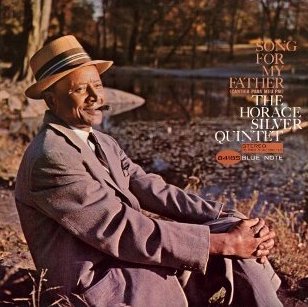
Swinging On A Star and Too-Ra-Loo-Ra-Loo-Ral by Bing Crosby from Going My Way (1944).
Wish you were here.

17 March 2017
____________________________________________________
No Vision Whatsoever
“Memorial Device were the greatest group ever to come out of Lanarkshire (Scotland) and for three brief years — 1983/84/85 — nothing else mattered. They sounded like an unholy amalgam of Pärson Sound and Joy Division, with a frontman who has been compared to Ian Curtis.”
—David Keenan, This Is Memorial Device

You thought you were paying attention to music in the 1980s, so how did you ever miss the legendary experimental rock group Memorial Device? Indeed, how did you miss the whole Lanarkshirescene? There the scene was, percolating in “empty and echoing” small towns like Airdrie and Coatbridge — rising up splendid and green from Scotland’s rich euphonious soil, alongside some of your most beloved and essential groups, (the dreamy Cocteau Twins, the poetic Lloyd Cole and the Commotions, and the jangly Aztec Camera.)
You never knew the music of MemorialDevice, nor the proto-industrial duo GlassSarcophagus. You didn’t know the mod group The Clarkston Parks. How about punk no-counts The Whinhall Starvers, or the wasteland-edge proponents Cold Stars? You didn’t know them either, did you? Why not?
What if some of your favorite bands of the 1980s never existed? What if they were, rather, pure inventions of author David Keenan in his new novel, This Is Memorial Device: An Hallucinated Oral History of the Post-Punk Music Scene in Airdrie, Coatbridge and Environs 1978-1986 (2017 Faber & Faber). A wonderful promotional Web site is clickable above. The Web site looks and feels like an old 1980s fanzine, and I encourage any lover of fanzines, experimental fiction, modern British literature, post-punk, or what we now loosely call indie/experimental music, to click the link, too.

Within the Web site there are colorful “interviews” with the fictional band members from the Lanarkshire scene, recounting their formative days and early gigs, proudly spouting their musical influences. From the cover page: “Keenan conjures a cast of misfits, artists, drop-outs, small town visionaries and musicians in a time where anything seemed possible. A moment where art and the demands it made were as serious as your life.” There are articles about the region’s filmmakers and its artists of the post-punk era. There are also additional links within the page to access music attributed to the bands.
A highly detailed and weird world begins to form. Through the fanzine’s use of images of actual (Airdrie/Coatbridge) locales, the attributed music, and the made up interviews and the articles, a realistic and magical vision appears of Lanarkshire and its people between the late-1970s and the mid-1980s. It is a “scorched earth, post-industrial, auraless” county that lies just east of Glasgow. And it turns out to be extremely fertile landscape for a post-punk art scene.
It reads like a miniature testimonial to the power of inspiration. These are people who feel that their own isolation and the bleakness of their surroundings could never lead to artistic vision. They forge on anyway. That should be familiar thematic territory to any fans of post-punk, and it is well done here. Checking out this site is like a form of time travel. Many thanks are due to Guy Reynolds, post-punk encyclopedia, defender of the outré, and great lover of literature, for hipping me to Keenan’s project.
Based upon checking out the Web site, Keenan’s greatest tricks are manifold. First, he is distilling and preserving this beautiful moment in time — a bountiful artistic and cultural moment. It is a moment that the involved players could not have identified as beautiful or important at the time they were living it. But remember, the involved players were not real. It is hard to believe this is fiction — it is all so reliably conceived. To give context and points of reference, he weaves in actual history, citing real bands and plunking down real artists’ names. This makes it all seem like a true series of fascinating episodes in British music that we simply missed learning about until now, and not at all like an invention.
In a recent interview the musician and performance artist Laurie Anderson made an observation that, “We are collapsing under the weight of our stories,” she said. She noted that the sheer volume of information we take in at such speed (checking our phones 150 times per day!) leaves us unable to function because reference points are confused or impossible to find. We simply seek out too much information to be able to analyze so quickly.
Things are moving fast. “What’s next?!” In our devotion to “next,” we are often blinded to the precious past, and to the now. We leave ourselves room for no vision whatsoever. In such a world, it is a pleasure to come across a story like This Is Memorial Device. Here we are given documents that create a whole picture of a community, a wide-ranging series of interconnected stories and people. These stories drill down and fabricate such believable minutia that they fulfill their purpose of preserving a beautiful period of time in an important place. (Beautiful and important, even if, maybe especially if, it never existed.)
Here are some actual songs from some actual bands. Each of these would have been right at home spinning on a Lanarkshire turntable. This is a mix of Scottish acts, acts that might have influenced the Lanarkshire music scene, and a couple that the bands of Airdrie, Coatbridge, and environs may have inspired, had they existed at all.
Vitamin C by Can from Ege Bamyasi (1972 United Artists).

I Am Damo Suzuki by The Fall from This Nation’s Saving Grace (1985 PVC Records).
Beachy Head by Throbbing Gristle from 20 Jazz Funk Greats (1979 The Gray Area).
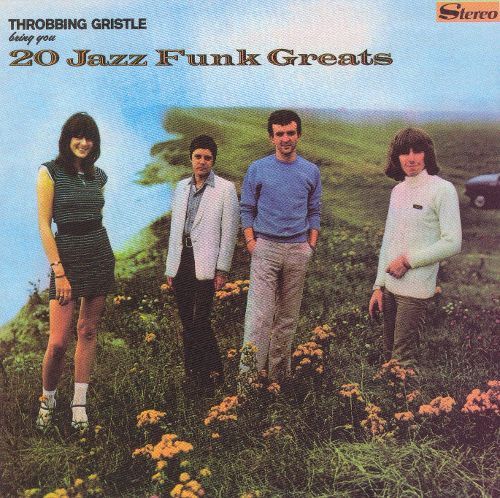
Head On by Loop from Heaven’s End (1986 Reactor).
Taste the Floor by The Jesus and Mary Chain from Psychocandy (1985 Rhino).
Shallow Then Halo by Cocteau Twins from Garlands (1982 4 AD).
Static Gravity by Chrome from Red Exposure (1980 Cleopatra).
20th Century Promised Land by Simple Minds from Sister Feelings Call (1981 Virgin).
Zeichnungen des Patienten O.T. the title track by Einstürzende Neubauten (1983 Some Bizarre).
Leaders of Men by Joy Division from the EP An Ideal For Living (1978 Enigma).
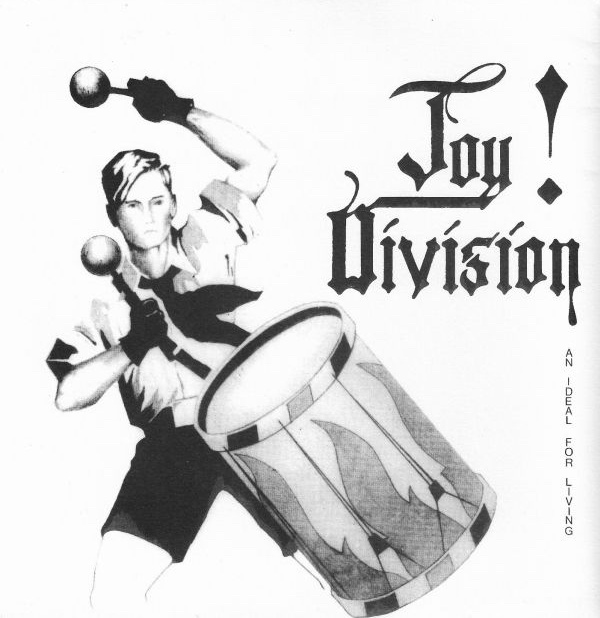
Cigarette In Your Bed by My Bloody Valentine from You Made Me Realize (1987 Creation).

I keep thinking of this book, too: Please Kill Me:The Uncensored Oral History of Punk, by Legs McNeil and Gillian McCain (1996 Grove Press). This is an actual documentary oral history focusing more U.S. (especially NYC) punk, starting from the 1960s. It is definitely worth a look.
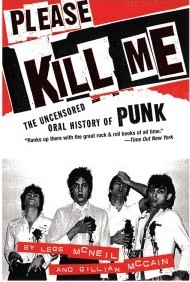
Be loveliness.
21 Feb 2017
_________________________________________________
I Must Not Think Bad Thoughts
Rebellion takes many forms, and the results vary wildly. For example, much of punk’s messy ethos, and its rebellious legacy, seem in hindsight to be meaningless – shambling, loud, fast, and out of control.

At its worst, that’s all “punk” was, a screeching distraction. But at its best it inspired kids to take up a savage lens and look through it at the world around them. For instance, the songs of The Dead Kennedys and X helped expose the bloated inner workings and sometimes demonic colonial influences of the U.S. during Reagan. Those songs still have power.
In hindsight, though, many, (and maybe even most,) rebellions that seemed potent at the time they occurred now seem relatively tame. There are some you can look back at and think to yourself, “I would have supported that.” Of course, there are causes worth fighting for — civil rights during the middle of the 20th century, women’s rights right now — and there are countless rebels to admire — but some rebellions are simply mystifying because of their pointlessness.

In The Wild One, a leathery biker gang movie from 1953 that was based on actual incidents, Marlon Brando plays Johnny, incendiary leader of the Black Rebels Motorcycle Club. The club rides into a quiet community and with their abrasive attitudes and their loud, menacing engines, they disrupt the flow of life. Why do they do it? Because they can.

With jazz music playing in the background, a town girl asks Brando, “What are you rebelling against, Johnny?” Without hesitation, he famously responds, “Whaddaya got?” In ten seconds, a film snippet effectively dissects, inspects, and reports on 70+ years of American generation gaps: “It doesn’t much matter what I feel, as long as I get to feel Something.” That was pretty “punk.”
Viewed now, The Wild One seems toothless and kind of corny, but the story and the film caused real people to be terrified of agitators coming in and mucking up the rhythms of their small town lives.
Here’s a recent puzzler of a rebellion: This American Life featured a story after the 2017 presidential inauguration about young social media and Internet trolls. (Trolls are disrupters, [kind of like Brando’s motorcycle gang,] who post extraneous, off-topic, and usually inflammatory messages in an online community, mainly intending to provoke readers into an emotional response or of otherwise scuttling normal on-topic discussion.) Because they kept people distracted and off-balance, trolls were hugely influential in in creating the surprising result of the 2016 presidential election. The troll’s rebellion had teeth, but their “cause” was baffling – to stir up reactions by promoting ideas they didn’t even agree with.
Why do it? “Because we can.” It is not about getting a specific response, it is about provoking any response. It is about feeling Something. It doesn’t much matter what. “Waddaya got?” They thought it was funny. It wasn’t. It isn’t. Kind of like this cynical old joke:
Q: Why are you pounding your head against a wall?
A: Because it feels so good when I stop.
The climate is right for incendiaries — things are moving fast. Some of the results of current disruptions are surely meant to distract and confuse people. Many of the results may eventually come to seem benign or even be forgotten. Surely though, a great deal of real and lasting harm is being wrought. It will feel so good when it stops.
Welcome distractions, cont’d: Listening to Wax Idols, Priests, and No Joy.
The lasting power of punk is evident in several recent and upcoming releases. This is an artistic rebellion you can get behind: making beauty from chaos. Washington D.C. band Priests are currently doing just that – not satisfied to simply build graceful songs from the rubble of musical bedlam, they are also taking the next step by making their sound essential. This music has consequences – the band wants you to (for the love of god!) feel something.
They access an impressive array of tricks from their predecessors, shaking it up, and then delivering an original sound that evokes great punk. You will hear lots of musical influences from late-70s through the mid-80s from Sonic Youth to The B-52’s – there is even boogie-woogie piano and saxophone thrown in the mix. Bow down and kneel before the awesome power of Priests.

Nothing Feels Natural by Priests from Nothing Feels Natural (2017 Sister Polygon Records).
J.J. by Priests from Nothing Feels Natural (2017 Sister Polygon Records).
One of my favorite bands has a new release set for next week. Loud and lovely, the Canadian outfit No Joy will release Creep on 24 February 2017, and here is a link to the first tune:
Califone by No Joy from Creep (2017 Grey Market).

No Joy have few peers when it comes to making beauty from chaos. Here is their latest EP from a few months ago. You will be glad you clicked:
Drool Sucker by No Joy (Mexican Summer 2016).

Hether Fortune is a time machine. She leads the Bay Area group Wax Idols, and while sounding exciting and new she also channels 70s/80s rock heroines Chrissie Hynde, Debbie Harry, and Siouxsie Sioux. Check out the urgent, beautiful echoes of Tones on Tail, Banshees, and The Cure in this great tune:
Deborah by Wax Idols from American Tragic (2016 Collect Records /cassette reissue due 17 Mar 2017 Etruscan Gold Records).
Conflagrations leap out of every poor furnace. What is this world coming to?
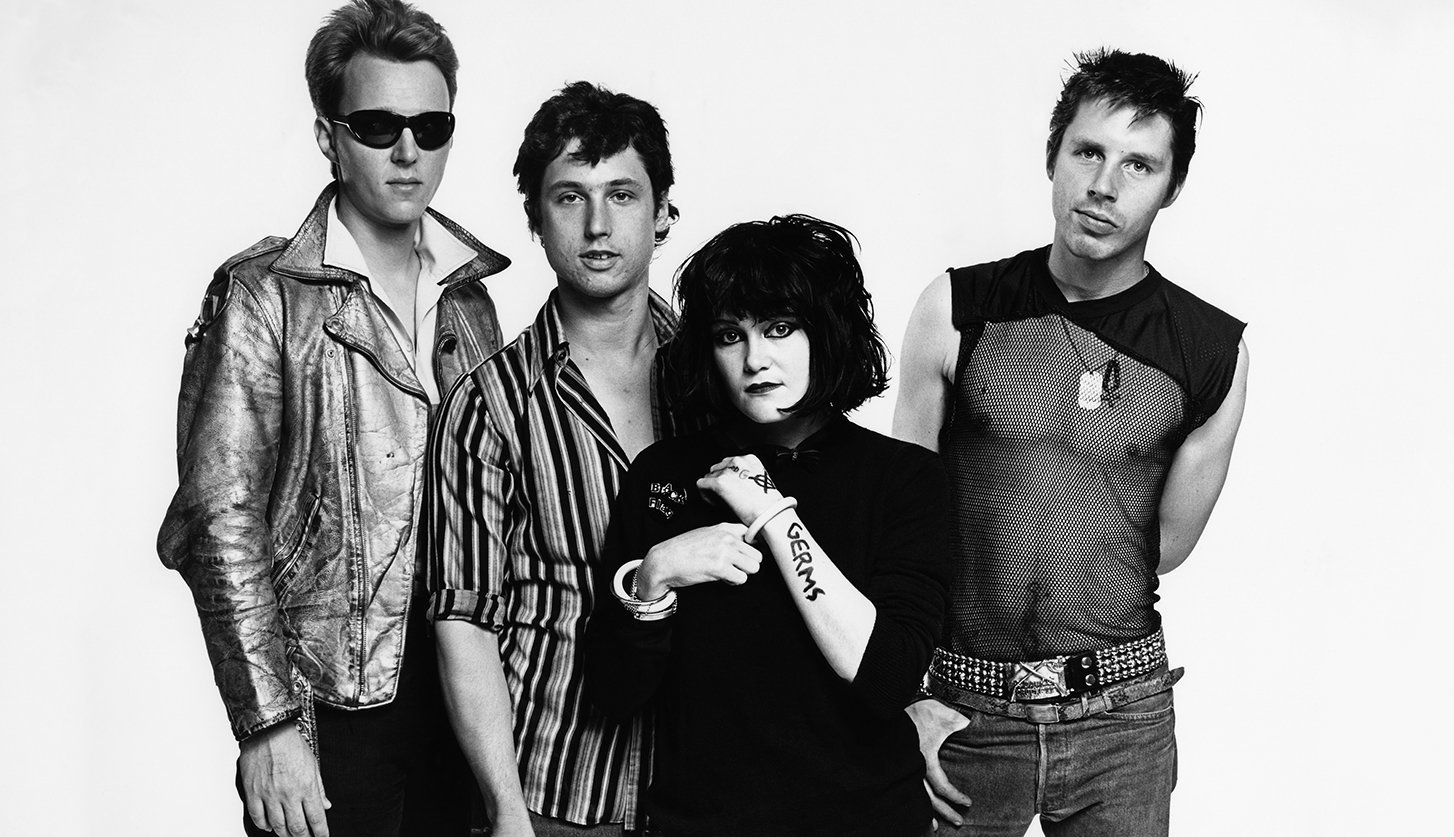
I Must Not Think Bad Thoughts by X from More Fun in the New World (1983 Elektra).
Confront the facts we hate. Try not to get distracted. Increase loveliness.
10 Feb 2017
_____________________________________________________
Welcome Distractions
Distractions are often very welcome, aren’t they? Quite often lately, I simply beg for distractions. Likeminded readers will know why. Nightmarish state and national political scenarios have us almost constantly either shaking or scratching our heads in painfully confused and irritated wonder.

Everything is moving so quickly – everything’s a bit of a blur.
So it is a welcome distraction to enjoy the anticipation of new work from two of my musical favorites: Alison Goldfrapp (my very English Queen!) is releasing a new record in March with band mate, Will Gregory; and the group, Real Estate, will likewise release a new record in March.

Of course, I have written here before about Goldfrapp, (and my obsession with the band’s vocalist and namesake, Alison Goldfrapp.) Most recently there was a post at the end of 2013 when the band slotted this page’s top selection of that entire year with the brilliant record, Tales of Us. Looking back at it, that post contained some thoughts on loveliness that seem timely and still very relevant. Resistance in not futile; differences are not to be feared, but treasured. Here are a few of the words from that post:
Tales of Us is “… Magical. Sometimes being just exactly who you are is an act of defiance. [Being oneself] is not easy for everyone, and the simple act of your own expression is courageous. Tales of Us is made up of ten songs, each a distinctive journey of self-expression. The song titles are names, (Jo, Annabel, Drew, Simone, Clay, etc.,) and in each song, Alison Goldfrapp either presents us with, or bravely inhabits, a different persona. All of them (quietly, defiantly, courageously) being exactly who they are….
“Fantastic and liberating, deeply private and still somehow seductively inclusive, the record successfully plays both ends against the middle. Simple acoustic guitar songs trade time with hugely wrought symphonic pieces, slow jazz, and tripped out electronica. The binding element of Tales of Us is her exquisite voice. Breathily playing out through the dreamy range of the songs, she draws me in absolutely. Alison Goldfrapp does not merely sing, she occupies her songs, and she transports her listeners. The beauty, the elegance of her, the certainty – she makes me lightheaded. She is delivering her art from a castle on a cloud, and I want to be where she is.”
Clearly, I am enthralled by this artist and her group, (I still listen to Tales of Us regularly,) and had hoped that when Goldfrapp returned with new music that it would be in the same intrepid vein of introspection and emotion. If the first single is an indication, it appears that will not be the case. The band dislikes repeating themselves, though they may have elected to go back a bit further in their career to investigate and mine some fresh ideas from dancier periods.
However, Goldfrapp is forgiven — I think this single is thoroughly excellent. The album will be called Silver Eye, and features the work of the trusty American producer John Congleton, and darkish, London-based Haxan Cloak. This music, my friends, is about urgency. Queen Alison can do whatever she wants. I can’t wait…
Anymore by Goldfrapp from Silver Eye, due 31 Mar (2017 Mute).
I have also written on this page about Real Estate, most recently about the jangly observations that they made on the terrific album Atlas that ranked as my number one selection for 2014. I wrote:
“There is an unforced earnestness to each beat, note, and syllable that makes this collection of songs feel not only brand new, but also somehow like an album that’s been around a while. Along with the rest of their catalogue I will continue to enjoy it for years. All three of the band’s records have a wistful summery feeling that I think a lot of people pick up on and dig. What it is: That feeling that something wonderful is happening, and you have not processed how important it will be to you in the future. You know that something wonderful is going to end – soon – and that the freedom that comes with that something wonderful is evaporating.”

The band has released a single and it indicates that Real Estatewill be building on their fine ideas of low key, richly examined, (and, yes, summery,) guitar driven pop.
Darling by Real Estate from In Mind, due 17 Mar (2017 Domino).
What else is good from this young year? Well….
Since everything is moving so fast, thank goodness for Missy Elliott. She has the sense to slow it down a little here, giving us some blessed space and a delicious taste of her special flow. As ever, sick.

I’m Better by Missy Elliott w/ Lamb (2017 Atlantic/Goldmine).
And check this:
Run the Jewels 3, (this link leads to a free download of what is easily the best record of 2017 so far.) It has been on the old headphones about four times a week, and each time I listen I marvel anew at the lyrical genius, the brilliance of the music, and especially the strong personal bond shared by the insanely gifted musicians and rappers Killer Mike and El-P.

This is the lead track:
Down by Run the Jewels from RTJ3 (2017 Run the Jewels, Inc).
Fear not. Increase loveliness.
31 Jan 2017
__________________________________________________
Increasing Loveliness
The Chiara String Quartet and Dave Hall
“There’s a way of playing safe… and there’s the way I like to play which is dangerously –
where you’re going to take a chance on making mistakes
in order to create something you haven’t created before.”
—Dave Brubeck

While others are compiling their year-end lists, I have been looking for some music that is completely out of the ordinary and also reflecting on a musical year that has left me mostly cold. I loved Jeff Runnings’ Primitives and Smalls, David Bowie’s Blackstar, and Radiohead’s monumental A Moon Shaped Pool; each of these and a few other favorites from the year have space on this page and can be found by scrolling. But I have not been inspired to recap 2016.
Are there times in your life during which only something new and unusual will satisfy you? A craving for a cuisine you have never tasted? I get that way about music, and I had mostly been in a droughty season – listening to lots of music but finding nothing to latch onto. Until something happened at a recent concert at Kimball Recital Hall on the campus of the University of Nebraska, Lincoln. Since then, I have been giving a lot of thought to the creation of art that is truly original.
Behind the creation of difficult artistic work there is massive toil. The ability to mask that toil by making it all look effortless is a form of sorcery. Nearly everyone has had the experience of overhearing some dragged-to-the-museum cynic underestimate the talent needed to make fine abstract art: Falling low and breathily from the mouth of such a caviling, clueless grump: “I could do that,” while standing before, say, a magnificent Mark Rothko, or Jackson Pollock painting.

O, Jackson Pollock, the wizard who, with his energetically flung and dripped liquid paint on canvas, created an entirely new way to make art – something original and wildly innovative – a form often imitated and never matched. But, in addition to being a master of abstraction, Jackson Pollock was also an amazing realistic draftsman who could draw expertly from life. He developed under the mentorship of the artist Thomas Hart Benton, and for years before Pollock conceived his groundbreaking drip methods for merging color-and-light chaos with the nuances of shadow-and-balance, he worked to perfect his ability to simply draw. You must learn to crawl before being able to walk, run, and dance.

Take just a small analogous leap from visual art to music — consider and compare the countless hours of pencil-and-paper work of drawing to the hours of repeating passages and scales in the rehearsal room. And then, to make the artwork and one’s own mastery seem effortless – to take all those hours of slavish practice and hide them away from the listener, well, it is wizardry.
Such witchcraft was recently on display at Kimball Recital Hall in Lincoln. On the final Tuesday of November this year, Chiara String Quartet, (my favorite Lincoln group, and the city’s finest resident musicians,) took the stage with their colleague, composer, percussionist, and jazz musician Dave Hall, and it was on. They launched into a performance of a new work, Andy Akiho’s 2016 composition LIgNEouS for Marimba and String Quartet, and an unexpected and energetic journey was underway.
I mean to directly compare the talents of these musicians with the talent of Pollock – they are all artists who devote themselves to increasing loveliness in the world. I really wish I could show you, because the performance mainly defies my ability to describe it. I contacted the members of The Chiara Quartet and Dave Hall to ask for any video or audio they may have to share on this page from their extremely jarring recent concert. The piece was so complex and even bizarre. The players appeared to be equally riveted by their own duties and to be having a blast. It would be best to just let it speak for itself. The musicians contacted me to say that no video or audio from the concert is available yet.
For now I have picked a couple of pieces to share of each act performing separately with the hope and intention of turning you on to them, and a dear hope that sometime soon I may be able to supplement the links below with something from that special night.

–Stupendous. There is such a depth of feeling in their playing, and it is always evident. I think this is about perfect, and there is something very stirring about the performances Chiara does from memory and instinct, with no sheet music:
Chiara String Quartet Plays Ravel by Heart – Maurice Ravel’s String Quartet in F Major, 1st movement (1903). Performed live in 2013 by Rebecca Fischer and Hyeyung Julie Yoon, violins; Gregory Beaver, cello; Jonah Sirota, viola.
–And check this out! Athletic and cerebral – second-to-second excitement and mystery:
DisArchitecture (2011) by Dave Hall. Performed live at the University of North Texas in 2012 by Matt Penland, Chris McWilliams, Ryan Kilgore, and Dave Hall.

More on this soon, I do hope! You should attend the next Lincoln performance of The Chiara String Quartet on Wednesday 1 February 2017 at Kimball Recital Hall.
–Of course, during droughts we hope for rain, and I have still been searching with hope for great music. For the best sounds I have been hearing lately on the pop/indie front, Radio 3 from the Canadian Broadcast Corporation (Sirius XM 162) has provided delightful little cloudbursts in an otherwise dry musical world. There is something liberating about listening to so much music and so many artists with whom I am unfamiliar. The context is limited. For one thing, all, or very nearly all of the artists on Radio 3 are Canadian, so while there are some acts I am familiar with (like Grimes, The New Pornographers, Arcade Fire) sprinkled in the mix, most of the acts are new to me.
The band names themselves often bring a little smile to my face, like His Clancyness below. Here are two super inventive songs from a group of Canadian ex-pats who are now living in Italy. These have really grabbed me during repeated listens:
Uranium and Pale Fear by His Clancyness from Isolation Culture (2016 Maple Death Records).
–We should always be grateful for a few old songs that we can revisit that are so far out, and so groundbreaking, that somehow they seem brand new. I love everything about the song and video linked below. Clearly borne from the kind of dangerous playing and improvisation that marked Brubeck’s greatest work, there is effortlessness in the performance of surely difficult music. There are the unfakeable smiles on the faces of the players, (never calling attention to the complicated rhythms and the sustained, freaky time signatures,) and there is the super cool atmosphere of the room, (check out the smoky audience surrounding the Quartet.) This can make a fellow feel born out of his time:
Blue Rondo à la Turk performed live by The Dave Brubeck Quartet, from the album Time Out (1959 Columbia Records).
–And mentioning the masking of effort, Jon Brion is a composer and producer whose breadth of abilities as a player and conceiver of music are staggering. This seems simple, and it is not:
Little Person by Jon Brion and Deanna Storey from Synechoche, New York (2008 Lakeshore Records).
–And then there is Merle Haggard. You think things came easily for Merle? It is not as easy as we imagine sometimes to just say a thing plainly. This cat could do that and he was so cool doing it he made it look effortless:
Wishing All These Old Things Were New by Merle Haggard from If Only I Could Fly (2000 ANTI-Epitaph).
Be good to one another, increase loveliness, and treasure originality!
13 December 2016
______________________________________________________________
What a Difference a Day Makes
Matters of Perspective
For some today brings feelings of elation. For many, the day brings feelings of almost total devastation. Individual matters of perspective are at work. For me, on this exquisite autumn morning, walking in a neighborhood I love, in a city I love, things were just somehow less beautiful – and for the time being, loveliness is diminished.

But perspective is hard at work. I thought of President Obama on my walk, and of how differently people have viewed him. How beloved he has been by many – a distinguished, dignified, intelligent, and reasoned man. Others have despised and vilified him. Baffling.
And today on my neighborhood walk, I thought of the puzzling modernist story In A Grove, by Ryūnosuke Akutagawa. (Akira Kurosawa adapted In A Grove into the landmark 1950 film Rashōmon.)

The story is very short and filled with violence. There are three characters – a young man and young woman are traveling through a wood where they meet another man who abducts them. The young woman is raped, and the young man dies. There is a trial, and each of the three characters retells the story from their own perspective, none of which agree.
Again, objectively, there occur abduction, multiple assaults, theft, and the story in the wood ends with a death. But what is the truth about how the events played out? Each story is different. For instance, the death is retold variously as a brutal murder, a matter of honor, and a suicide. Matters of perspective are at work, but there is objective truth.
Right? Isn’t there objective truth?
Here is a good lesson on perspective from Peanuts.

It’s nice to have songs to help us experience things – to celebrate or to heal. Fall is great for finding new songs.
This is new and I just love the vibe, the young woman’s voice, and the simplicity of the song.
Song 36 by Alexia Avina (2016).
And for perspective, she reminds me of this artist who was an enormous favorite from over thirty years ago.
Some Journey by Suzanne Vega from Suzanne Vega (1985 A&M Records).
Here is another pair of similar songs I love that are thirty years apart.
To Know You by Wild Nothing from Life of Pause (2016 Captured Tracks).
It’s My Life by Talk Talk from the album It’s My Life (1984 Manhattan Records).
How much has changed! How much has remained the same…
What a Diff’rence a Day Makes by Dinah Washington from What a Diff’rence a Day Makes. (1959 Mercury).
Drinking Again by Dinah Washington from Drinking Again (1962 Roullette).

Bottoms up. Be good to one another. Take deep breaths. Increase loveliness.
9 November 2016
________________________________________________________________
Party Like It’s 1909
for Halloween…
Jude and I were recent guests of the gifted hosts, (and our very dear friends,) Diane and Howard Coffin. They held a dinner party for 14 at the historic Brandeis Mansion in Omaha, and on a warm Friday evening in October we arrived as directed – just at dusk and in “semi-formal, macabre” attire.

Beethoven was playing softly as we walked through the yard’s gates, up the wide stone stairway and through the two sets of heavy double doors. Inside, we were greeted with hugs, Chambord Kir-Royales, and the spectacle of an exquisitely decorated and ornate wonder of marble, dark wood, porcelain, silver, crystal, and silk.
In keeping with the period of the incredible and opulent 1904 home, (and, of course, with the Halloween season,) guests were invited to secretly prepare and share “parlor entertainment.” After more Champagne, a delicious dinner, and festive punch cocktails, we wrote our names on slips of paper and dropped them into a decorative goblet. When it was time for the performances to begin, Howard and Diane made sure our glasses were full then arranged us comfortably in one of the mansion’s parlors.

Standing in lamplight before an intricately carved, giant fireplace mantle, Howard announced that he would draw our names to perform at random. In between our individual parlor entertainments, Howard kept things moving along by giving us a few of the spooky traditions and interesting histories of a variety of cultural festivals of the fall and harvest seasons. These traditions have evolved into what we celebrate now as Halloween.
Among the many performances: Some people told ghost stories – our friend Denise recounted an eerie one set in Maine, and our hostess Diane did a wonderfully mysterious reading from C.P. Gilman’s spirit-tinged The Yellow Wallpaper. Friends Bob, Claudia, Denise, and Diane enacted the witchy scene of the Weird Sisters from Act IV of Macbeth. Our friend Steve brought passion to E.A. Poe’s freaked-out narrator, Roderick Usher. Pal Bob conjured a tight and angry paranoia for the Tom Waits number, What’s He Building In There? Jude spoke calmly as the woman Death from the introduction of John O’Hara’s novel Appointment In Samarra. New friends Rod and John donned top hats for their fun soft-shoe version of Dem Bones. Friends Gary and Diane filled the parlor with violent tension while adapting Stephen King.
Together, Bob and I resurrected an old song, written by myself and Pete Acheson, called Rats. It was fun to dust off the lyrics and hear Bob’s guitar version of the song. And it was probably as scary as anything else during the night to hear me attempt singing. To introduce the song, we remarked that it was a tune neither publicly performed nor requested in some thirty years. Since we live in different cities, it was a tune that we had not rehearsed, either. It was a blast.
A Tom Waits number also inspired the main piece that I performed, (a strange coincidence with what Bob had prepared.) From the opera Alice, co-written by Waits with his wife, Kathleen Brennan, I rewrote and freely adapted the lyrics of a song called Watch Her Disappear. I love Tom Waits, and it is challenging to try improving on his great writing. I was crazy about the seed of the idea, but really needed to change the context of the piece, and to re-set it in autumn for the occasion of the dinner party. I was pretty happy with what I came up with, and I used the beautiful music of the song Barramundi by This Mortal Coil as the background from It’ll End In Tears (1984 / 4AD).
From the opera Alice, with lyrics by Kathleen Brennan and Thomas Alan Waits, and directed by Robert Wilson. Here is my finished adaptation from…
Watch Her Disappear
Last night I dreamed that I was dreaming of you
Dusk’s descending pluck and strum
And from a window across the lawn
I watched you undress
Wearing an amethyst sunset tightly woven around your hair
That rose in strangled ebony curls
Moving in a pale yellow bedroom light
The air was wet with sound
The faraway bark of a puzzled dog
The ground somewhere drinking a dark, slow, swirling leak
Your room is so soft and
Fading as it soaks autumn’s last golden heat
A light goes on and the door opens
An amber cat runs out
On the lemon stream of hall light and into the yard
A wooden apple scent is faintly breathing the air
The sunless air goes suddenly cool
I hear your champagne laugh
You wear two lavender orchids in your hair and
A string of saffron carnival lights comes on with the dusk
A tender swaying constellation
Circling the lake with a slowly dipping halo
The wind-washed waves nipping the sand
And I hear a frolicking calliope
And you dance into the shadow of a black poplar tree
And I watched you as you disappeared
I watched you as you disappeared
I watched you as you disappeared
I watched you
* * * * * * *

It was the best party! We are so grateful for our creative friends and the cool idea that our dear Coffins conceived of and …. executed! Happy Halloween…
Laughing With A Mouth Of Blood by St. Vincent from Actor (2009 4AD).

(The Tom Waits version can be found here: Watch Her Disappear from Alice [2002 Epitaph Records]).
30 October 2016
____________________________________________________
Standing at the Edge
Some things we love almost too much, don’t we? We are struck stupidly silent by our own fascination. We are so close to some things we love that describing them, well – our ability to communicate effectively is nearly defied. It is as if one is standing at the edge of a beautifully mysterious, staggering chasm, and can’t come up with the word, “deep.”

I have been trying to express the greatness and importance of Radiohead, and I am just not getting quite there. Perhaps it is time for another technical graph to help explain this obsession:

Got that? Are you with me so far? Well, I will make this brief, but here goes (at least a bit more) to try and explain something that I may love too much.
The members of the group Radiohead have dipped into their bottomless pouch of tricks to compose and record the transcendent A Moon Shaped Pool. With it, they retain their status as the world’s greatest band. The new record is as rooted in musical traditions as it is innovative. Strong elements of British folk, classical, straight-up rock and roll, and even subtle tinges of jazz coalesce with Radiohead’s beautiful electronic and sweeping experimental/art music. In case you missed the May release of A Moon Shaped Pool, please check it out.

And if you checked it out only briefly, please give it another listen. Or ten. The band’s approach can be appreciated as literary and painterly as well as musical and cinematic, and spending time with their songs enhances the listener’s rewards. This is Art. (A best comparison to absorbing the meaning and pleasure of this music comes from the times when I was taught to read and tease out the mysteries of McCullers, Joyce, and Faulkner; to understand Sylvia Plath and T.S. Eliot; or when I finally cracked the code on the abstract works of some twentieth century painters like Rothko.)
Radiohead’s guitarist/multi-instrumentalist, Jonny Greenwood, has spent time as a resident composer for the Warsaw Symphony and scoring films for P.T. Anderson. These experiences seem to have delivered to him a renewable gift for conjuring visuals with his compositions – the sounds undulating at times and gently swirling like colors. Somehow the very spare can sound lush and full. And vice versa, big, complicated sections of songs are somehow distilled into simple messages of feeling.
Thom Yorke’s vocal delivery, (its variety; its subtle modulations pure evocations of longing, regret, hope; the headshaking beauty of its rising and falling; its sheer universal expression of anxiety; its terrible striving to be understood,) has found its full flower, and it has always been great.
Some things we love almost too much, don’t we? Minor chords. Whole-tone scales. Modes of limited transposition. Things we cannot explain, but are willing to stab at. Like this: As separate songs, and taken all in all, A Moon Shaped Pool taps a feeling of endings, or expectations of endings. Or maybe it taps a feeling of resolutions – is that more accurate? I guess you just need to listen for yourself. These are songs full of wonder. Listening can be at times like teetering at the edge of an enormous chasm – wondering if you need to fall in (or jump) to come up with the word, “deep.”
Three songs by Radiohead from A Moon Shaped Pool (2016 XL).
Present Tense (live version).
Desert Island Disk (live version).
Radiohead has received and acknowledged influence from plenty of sources. One rich source of influence was the twentieth century French master, Olivier Messiaen, (who was synesthetic – he perceived music as color – and he was also a bird lover who, fascinated by birdsong, transposed birdsongs into composed music.)

Quartet for the End of Time (Fifth Movement) by Olivier Messiaen – composed 1940-41.
17 September 2016
___________________________________________________________________
The Beginning of Something

Late summer’s shadows and light fall distinctively. Their angles start to sharpen keenly around the middle of August, and they are deeply ingrained as portents from childhood. In their way, shadows provide a natural warning while light holds a natural promise, (oh, delicious anticipation!) They combine to signal the ending of summertime’s freedoms and the beginning of something else.
Didn’t you always love the summer? The way the light touches the trees and flowers in the mornings, almost begging to be thanked – “I think you are sensational, Tree. Thank you for smiling back at me.”
I always have loved summer, but I loved school too, especially the beginning of a new grade, (except the second grade – that can be another story.) There was wistfulness in saying goodbye to summer that was tempered by all the possibilities that a “new year” hinted at. We take our new beginnings where we can find them and I always get a new beginning from late summer’s intoxicating concoction of abandon and restraint – it gets to me, and I appreciate that I am still rumbling forward, slightly lightheaded.

The experimental music of the band Stereolab is perfect for this time of year, accentuating the electrifying assimilation of sounds that come from combining restraint and abandon. And for me, they also captured the sound of the beginning of something. It is art approached with urgency and patience — structure, discipline, and improvisation, (think of an aerialist running at full speed on a tightrope across a mountain chasm.) The result is music for the beginning of something at any season and for many occasions.

The band has been a gigantic favorite for 20+ years. It is surprising to find how little has been written about them on this page, and how few of their great songs have been featured here. But Stereolab has been back in heavy rotation through speakers and headphones recently. Ideal music for a late summer walk.
Stereolab’s sound evolved and was always unmistakable. They managed somehow to make original rock that was hugely referential and incorporated broad influences across multiple genres and eras. There are elements of 1970s German electronica, 1950s and 60s Mexican lounge, French and English chanteuses, and American pop ranging from Bacharach to the Beach Boys to The Velvet Underground.
They strived to constantly refresh their music, to sound new and different from anyone else. In doing so, they amassed an ambitious list of collaborators. These collaborations along with a wealth of ideas led to a prolific outpouring of music, not only from their main project as Stereolab, but also from a fantastic bunch of guest artist appearances (with Atlas Sound, Blur, and Mouse on Mars, to name a few,) side projects (like Monade and Cavern of Anti-Matter,) and offshoots (the tremendous High Llamas). And Stereolab’s influence on other bands is difficult of overestimate.
Multi-instrumentalists Laeticia Sadier and Mary Hansen were right up front, anchoring the band’s signature vocal sound, providing dreamy counterparts and harmonies with plentifully sung “la las”, and lyrics in French and English. Guitarist Tim Gane was instrumental in developing and pushing their innovations forward, but stayed in the background when they played their explosive, sometimes deafening live shows. One of the great rock concert thrills in my memory is watching Gane break a couple of his guitar strings during a feverish ascent into white noise. The strings cut open a gash on his hand, yet he never hesitated and continued to play at max effort and volume with a bloodied paw. Likewise, Andy Ramsay’s propulsive and precise live drumming comes back to me when I listen to the studio recordings.
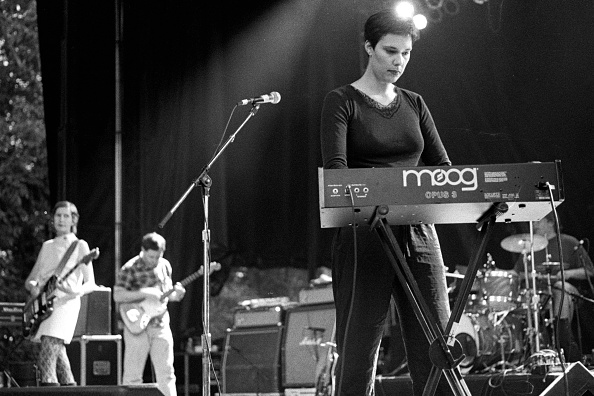
So here we are, at the beginning of something. Embrace the precious promise — soak in and store the pouring light of the late summer’s sun — and take a listen to some great tunes below — whether they are new to you or if you are revisiting this hugely influential band. All songs by Stereolab. As usual, italicized underlined song titles below are clickable to listen to and to view.
Among their many great releases, the LP Dots and Loops especially always sounded to me like the beginning of something….

Brakhage from Dots and Loops (1997 Elektra).
International Colouring Contest from Mars Audiac Quintet (1994 Elektra).
Wow and Flutter from Mars Audiac Quintet (1994 Elektra).
Nothing To Do With Me from Sound Dust (2001 Elektra).
Orgiastic from Peng! (1992 Too Pure).
Percolator from Emperor Tomato Ketchup (1996 Elektra).
Pack Yr Romantic Mind from Transient Random-Noise Bursts with Announcements (1993 Elektra).
Avant Garde M.O.R. from The Groop Played Space Age Bachelor Pad Music (1993 Too Pure).
Ronco Symphony from The Groop Played Space Age Bachelor Pad Music (1993 Too Pure).
Stereolab has been on an indefinite hiatus for years. Meanwhile, the members pursue their various other projects. The songs above are from what I think is their best vintage, from their inception through the years with Sean O’Hagan, and Mary Hansen.

21 August 2016
_______________________________________________________________
Distant Fires
Isn’t it interesting when you discover, (sometimes five, or ten, or even twenty years later,) that you missed an entire revolutionary pop-culture movement? For example, I missed the musician Moby and the whole dance/rave moment that surrounded him in the U.S.

Moby sold tens of millions of records, became the “face of techno music,” and was HUGE, but I own not one recorded second of his music, and simply don’t know much about him. Of course, some of his music was unavoidable and it kind of registers as familiar because it permeated the mainstream. And I was also familiar with many of the sounds that came from the subcultures that fed the genre he was working in. But still – I missed a big moment.
What got me thinking about this? Well, Moby wrote a memoir called Porcelain that details (mostly) his pre-fame life, feelings, and surroundings leading up to the release of his monstrously successful 1999 album, Play. Moby was interviewed recently on the fine WBEZ radio podcast, Sound Opinions, (the show’s hosts both loved the book, I haven’t read it,) and during their excellent interview, while speaking specifically about himself and his own situations, he made some fantastic, universal observations about things that are discussed fairly often on this page. He really captured my attention and I wondered, “What else have I missed?”
I certainly didn’t log right in to iTunes and load up a bunch of old Moby, but I did love listening to what the guy had to say. Especially because he spoke so well and plainly about certain themes that are explored on this page, and that often recur here.
On Nostalgia – We long for those old days sometimes, don’t we? Me especially. We look past the disadvantages and the downright grime of them to savor memories of days that seemed supercharged with possibility and creativity and even simplicity. Commenting on his happiness and excitement during youthful days in New York City, (when he was part of a deep underground musical movement that integrated house music and hip hop to propel a new and larger rave culture,) he was just scraping by and the atmosphere of the city was gritty, dangerous, and sometimes squalid.
Moby said, basically that maybe it is just a self-evident function of youth – as a person gets older and becomes nostalgic for the past, partially those are times and places that don’t exist anymore, but maybe it is just nostalgia for not being old.

On Relevancy and Success – Moby seemed to be genuinely delighted and surprised to have sold over twenty million records, and to have come to define what was known for a while as electronic dance music (EDM). But mass appeal was emphatically not his standard for success, and he had some particularly heartening things to say about what should be a standard of success.
He said, more or less, that success should not be measured by the size of an audience. He stated the obvious – that there are billions of [works of art] available to investigate, and it is amazing that even one person will take the time and energy to check out and appreciate something that you have created. It is unhealthy and kind of sick to think that a musician or a writer could only have legitimacy if he or she is reaching mass numbers of people. You have legitimacy if you love what you’re doing and one other person loves it, too. That’s success.

On Music’sMagic – Moby worked with the late Dr. Oliver Sacks, who created the Institute for Music and Neurological Function. During the interview, Moby was asked about current music’s ability to change lives and form identities in the context of the music that formed him. He spoke precisely, intelligently, and passionately about music’s ethereal ability to fundamentally change people. I loved this…
He said that through scientific research at the Institute it has been shown that music affects the brain and the endocrine system and changes people, not just anecdotally, it actually alters neurochemistry, promotes neurogenesis, decreases stress hormones, and promotes growth hormones. Music is a magic pill, and yet it doesn’t even exist. It is ethereal.

Music and sound are just weird air molecules – nitrogen and oxygen – hitting the eardrum a little differently. A person with a jackhammer, and YoYo Ma with his cello, are creating essentially the same thing – just pushing air molecules a little differently – but one makes you weep and the other annoys you. The power of music that is ineffable and makes people do things: dance, march into war, cut their hair, move across the country, have sex – it does all this profoundly and it does this over and over again. How is it that something with no clear evolutionary consequences can be so powerful and make us cry or make us joyful?
And then he discussed, in his own way, how the subculture fringes become the mainstream. There is some disappointment and wistfulness in his voice that his movement, (EDM and rave culture,) are firmly in the mainstream now. What was born in warehouses and small sweaty nightclubs, (what was once being invented as it went along – was once secret and conspiratorial,) now attracts festival crowds of 50,000 people to stadiums.
Long-timers and oldsters remember the days when the industrial, funk, and hip hop music samples that nourished their beat-driven bacchanals were obscure outside of their scene – so when they hear the DJ play Katy Perry remixes or insert other such Top 40 uniformity into their sets instead of playing some obscure musician, they feel a natural ruing. (Remember those tears you shed when you heard Nick Drake’s music played in a Volkswagen ad?)
I think about this all the time – how the fringes of creative [sub]cultures sometimes blaze for a bit, sending a warm and promising light flickering toward a bland, homogeneous center. Then, these fringe movements, they mainly fizzle and die. Sometimes though, they evolve and find the fuel they need for their fires to feed the popular mainstream. If they do the result is at best an exciting distillation of that creative culture’s finest components. Usually though, if some fringe phenomenon catches and burns toward the middle, the results form a tepid, diluted, and ashy slurry, barely recognizable to the original early adopters of a cultural sensation.
But that’s the deal, rave culture, such as it is, (never my thing, but once a vibrant fringe sensation,) is now the mainstream. It is just one example among many that you are welcome to insert. The thing to remember though is that the fringes are still out there on fire. They are hiding their light from you somewhere else, somewhere in the distance, and you don’t know where. Are you willing to open your ears and eyes to search for the next big thing?
Could this be it? Merging blippiness and African-inspired guitar from Atlanta via Brooklyn. Good and fun, try any of these three tracks….
Too Far Out, Stabilized Waves, and Spanish Leather by Shy Layers from the album 2 (2016 Growing Bin).
Anyway, all this got me looking back at some of what would have been in our home’s rotation around 1998 – 2001, when rave was ascendant in the mainstream. Maybe you missed these. Just the barest sample here…
Bacharach and The Beach Boys influenced the wonderful Sean O’Hagan’s outfit. I couldn’t get enough. From England:

Get Into the Galley Shop by The High Llamas from Buzzle Bee (2000 Drag City).
Three of Chicago’s post-rock and ambient wonders:
Not Sport, Martial Art by Jim O’Rourke from the EP Halfway to a Threeway (1999 Domino Records).
TNT by Tortoise from TNT (1998 Thrill Jockey).
A Blur in Your Vision by The Aluminum Group from Pedals (1999 Minty Fresh).
Oh, Air! French band…
Casanova 70 by Air from Premiers Symptomes (1997 Virgin).
Back to England for the beautiful chamber rock mastery of Tindersticks:
Ma Soeur by Tindersticks from the soundtrack of the film Nénette et Boni by Claire Denis (1997 This Way Up).
And you may have missed this, too, if you gave up too early on these wizards of pop music, XTC:
I Can’t Own Her from Apple Venusvolume 1 by XTC (1999 Canyon International).
What else did I miss?
5 August 2016
____________________________________________________________________
My Old Man
a few thoughts …
“Gee, I could listen to my old man talk by the hour.”
— Ernest Hemingway – In Our Time

Everyone loved my dad. Phil was a great guy. Not handy in any traditional “tool shop” way that lots of dads are – he was rather a builder of sturdy and handsome relationships and a meticulous mender of the sometimes inexplicably tattered or torn fabrics of individual lives. He helped people in ways that changed them fundamentally for the better, and in some cases, I have no doubt, he saved lives.
He was thoughtful in the way of someone who genuinely treated others the way that he wanted to be treated. This meant that all of the advantages of his intellect, money, and even sway – things that he had worked very hard to attain – would be put into play for those he sought to help. The intangible commodity was his time – and as generous as he was with his cash, smarts, and influence, he was purely selfless with his time.
For several years after he died it was not uncommon for me to meet someone – a stranger to me – whom he had helped out in some significant way, and who seemed thrilled to recount his or her relationship with my dad to me. But he was no horn-honking self-promoter, so he kept these matters to himself. And he was austerely private so people trusted him to keep their secrets – a man both judicious and discreet.
Here is a personal example: Not long ago I came across a photo album in my parent’s basement. When I was about twelve my dad and I had looked together through those photos from his service days in Germany during 1945/1946. Sitting in our bright basement, looking through the album together was eye-opening and formative. (Both of my parents made the effort to emphasize to me that they were very much more than just my parents.) Seeing my dad in that context was influential and kind of thrilling – a perspective shifter. Here he was young, dashing, single, and far from his home. I thought he was cool, and here was reinforcement — he looked cool.


There were plenty of photos missing from the album, though, and below the dark, blank spaces, the same name appeared in white ink in my father’s tidy handwriting: Delores – Dolly. It became clear pretty quickly that he’d had a Bavarian girlfriend and all her photos were absent. Dolly, I later learned, was for a time my father’s fiancé. Dolly and Phil in the Black Forest; …Phil with Dolly in Zugzpitz Mountains; …in the Valley below Hohenschwangau; … picnicking with Dolly and friends Inge, Holda, Mirinna; … at castle; … swimming at Lake etc.

“Where are these pictures?” Man, did I want to see what Delores looked like.
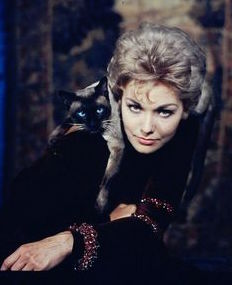
“I took them out when your mom and I got married.”
“Yeah, where are they?”

“They’re gone.”
“I want to see them.”
“They’re gone.”
“Why did you do that?” I was baffled. Who was this exotic person?
A wordless, steady stare was his response to my last question, and my father’s message was clear. Even though those pictures were from years before my parents ever even met, those pictures were gone for many good reasons. Here was a man both judicious and discreet.
****
I am just rereading the one sentence messages my dad wrote on the backs of stacks of German postcards as a 20 year-old noncom. It is like rediscovering the words of a monkish Haiku master like Bashō or Issa. From Berlin, a street scene: “The three statues on the right represent three stages of German life, from childhood to old age.” From Garmisch-Partenkirchen, a mountain lake scene: “The hotel on Lake Riessersee is the best place to stay if you are in Garmisch as you can get everything from a shoe shine to a manicure.” Betraying his nascent fascination with a Mad King, from Rosenheim:
“Right near this town is / Chiemsee, where another of / Ludwig’s castles sits.”
Shortly after he died I came across one of his many notebooks. On a few of the central pages of the book, he had listed and written the definitions of different cloud formations: Cirrus, cumulous, nimbus, stratus. Seeing the beautiful cloud definitions in his handwriting – I thought I had discovered a secret collection of his personal poetry. Few people in my life have matched my dad’s gift for finding a little magic in mundanity. And believe me, the guy liked paddling in smooth water – simplicity and directness were treasured by him and these qualities equated to goodness. But for Phil, even the commonplace contained abracadabra shades that could be discovered and explored.
My dad liked to drive around in the country, and sometimes would hit the road on a Saturday or Sunday with no special ambition beyond driving through a couple of small towns near our bigger one, seeing what we could see, and maybe meeting a couple of new folks. Sometimes he went alone or with my mother, but mostly he took me along. As a kid it was great just being around him, and to see him really relax and indulge in pleasant wandering was an instructive treat. He might stop at a shop on the paved block or two afforded these little towns and buy something – maybe chat a while with some locals – then hit the road again.
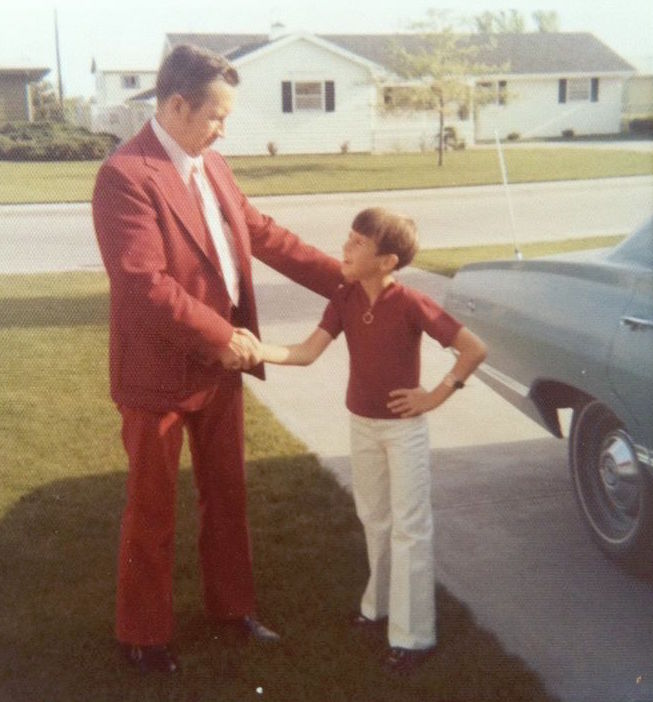
Sometimes in the late summers we would stop at one or another of the produce stands that popped up sporadically on the pretty, undulating highways of central Nebraska. He would select different types of melons, sweet corn, and tomatoes. When they were available he would buy grapes and as we drove along he would have me pluck a few from their stems and place them on the angled air conditioner vents in the dash. Then the old waiting game was on, “How many miles until you think those babies will be cold enough to enjoy?” A master of delayed gratification.
He was not much for the radio – especially in the car. On the rare occasions that he tuned in to something, it would be a baseball game, or if there was some particular news or weather he wanted to learn about. But there was music. He would sing or hum, and he could whistle beautifully. On car rides I would alternate between looking around at the countryside and wedging my nose in a book – Jack London, Kipling, Peanuts, Archie, Casper the Friendly Ghost – and as we cruised along, floating through the pale yellow cabin of the 1973 Impala would be the sounds of my dad singing Sinatra, humming Dixieland Jazz or Nelson Riddle, whistling Sousa or Seventy-six Trombones.

It was my dad who taught me the importance of variety, the value of learning lots of things. Music was a big part of his life growing up, (especially with his brothers – all of them could play and sing,) so appreciating music became a big part of my life too.
Much of the music that was meaningful to me in 1970s and early 1980s continues to be meaningful. Likewise for my dad, the music of his childhood and his young adult years stayed important to him. In their vintage, those mid-70s to mid-80s songs are currently as far removed from today’s new music as they were to the big band and show tune dominated pop music of the World War II era. (Thanks to friend Rich for this thought-bender.) So there was that same separation for my dad. As he’s been on my mind a lot lately, I have tried to think of some music that was made since he died in 1991 that he could get behind. A couple of tunes he wouldn’t have minded singing along with – whistling or humming as he headed down a summer road.
— He would have liked the clear-voiced storytelling and the terrific, complicated melodies. He would have loved the harmonizing – I can imagine him singing along to these.
Meadowlarks from the self-titled debut by Fleet Foxes (2008 Sub Pop).
Lorelai by Fleet Foxes from Helplessness Blues (2011 Sub Pop).
— Nice strings and pretty orchestration with another clear-voiced storyteller. Kind of swinging.
Wonderful from Subtitulo by Josh Rouse (2006 Nettwerk Music Group).
— Phil’s wheelhouse – this slays.
Slave To Love from The Jazz Age by Bryan Ferry (2012 BMG).
— My dad would have liked the piano on this and the lyrical sentiment of living true to oneself.
Jane from Ben Folds Live by Ben Folds (2002 Epic).
— I have seen her work well described as “songs of romance, possession, and psychological horror.” Allison Goldfrapp and her group, Goldfrapp, would have perplexed Phil with their insistent dissonances and repetitions. But the elegant restraint, the simplicity, and the effortless charisma of the vocalist and her songs – he could have got behind all that. This is a live version of a song from one of my all-time top ten records.
Alvar from Tales of Us by Goldfrapp (2013 Mute).
— This one is older. He would sing this one in the car from time to time – and I am sure he sang it to my sisters. For me, he changed the lyric to “Where are you going my little man?”
Turn Around from Time To Think by the Kingston Trio (1963 Capitol).
14 July 2016
____________________________________________________________________
Transistor
I don’t get many voicemails, and it had been a long time since I last looked at my phone’s log. Apparently, about two years. At the log’s end were three voicemails from July 2014 – messages from my mother, who died six months ago at 87. I listened to the oldest message today, from 24 July 2014 – she sang me ‘Happy Birthday.’ I would have been turning 49 that day but in her voice is the transporting gentleness of someone singing a lullaby to a child.

My mom reserved her singing voice chiefly for birthdays and had a great sense of humor about it. She knew it was poor but wouldn’t have realized how much she was able to make up for with its very beautiful sincerity. Each birthday my sisters and I would look forward to being charmed by a singularly quiet and straightforward version of the birthday song, either preceded or followed by her own wide-eyed and funny deprecations regarding her skill level.
In a ‘meta-meta’ moment, I was taken back nearly two years to the time she left that voicemail – and also back to the sounds of the summer of 1971 when I turned six. In the 1970s the orderly kitchen of our house would echo with the anemic sounds of KRGI, a local AM radio station. Metallic strains pinged out from my mom’s small, inexpensive, single speaker transistor – often playing top 40 songs.
I looked back and that summer of 1971 had a fair share of fine top 40 hits that were songs of unrequited love, like I Don’t Know How To Love Him by Yvonne Elliman, Ain’t No Sunshine by Bill Withers, and It’s Too Late by Carole King. But perhaps the best of the lot came later that summer. With its lonely opening melody, a solitary oboe giving way to strings, The Carpenters had a massive top ten hit in 1971 about a young woman and her obsession with a musician. The song transcends its specific topic and becomes something more – a potent capsule of universal yearning and loneliness.
Written in 1969 by Bonnie Bramlett with Leon Russell, ‘Superstar’ has been performed by a host of singers including Vicki Carr, Cher, Rita Coolidge, Peggy Lee, and Bette Midler. (Delaney and Bonnie recorded the original 1970 version.)

This version is most powerful, and it is a great example of the clarity and beautiful sincerity of Karen Carpenter’s voice.
Superstar by The Carpenters from Carpenters (1971 A&M Records).
Late summer of 1971 my sister Beth would have been entering her senior year of school, and The Carpenters (along with maybe Joni Mitchell, Blood, Sweat, and Tears, Fifth Dimension, and others,) would have made tens of thousands of revolutions on her record player that summer.
I got a text from Beth last week during a PBS documentary about The Carpenters that we both happened to be watching in our separate cities. She messaged a memory from when she was 14 or 15, “I remember sitting on the curb listening to the radio & hearing We’ve Only Just Begun & thinking that I had found the next big thing.” She had, indeed.

Carpenters fans, my sisters Andrea and Beth.
Circa 1977.
We’ve Only Just Begun by The Carpenters from Close To You (1970 A&M Records).
The old kitchen transistor led a double life. Away from its tidy daytime home in the burnt orange and bronze mid-western kitchen of my mother, it also entertained us in the evenings from the pale curb of our bleached out, summertime street corner. After my sister Beth graduated and while my sister Andrea was in high school, my neighborhood friends and I would gather in evenings from April through October, and the little transistor frequently made the scene, spilling out tinny hits.

Circa 1975.
On Sundays Casey Kasem presided. American Top 40 was the soundtrack to many twilight games of kick the can and neighborhood track meets or bike races. Pretty much throughout my elementary school years – The Carpenters were just…around. They had forty-six singles over about a dozen years – Christmas songs – television appearances and specials – 1970s ubiquity. Anyone could like them and most everyone did – from my mom, to my sisters and myself, to tastemakers at Rolling Stone Magazine.

Things really change. Probably around the time I went to junior high, I didn’t pay much attention to them anymore. My tastes were evolving. By the time I was in high school and college their squeaky clean conventionality, their homogeneity, their perceived lack of any edge … well, it would have put me off.
But man, now when I hear some of the songs – I am right back on East Phoenix Street in old Grand Island – a little kid chowing a bowl of Quisp in the kitchen with my sisters – the transistor playing good stuff that bounced off all the hard surfaces and landed upon our ears. I allow myself to be unselfconsciously sentimental now and I also hear the incredible craftsmanship of Richard Carpenter’s arrangements and the great playing – the effortlessness of Karen Carpenter’s sterling vocals – all of these, for a time, mistaken by myself as fogyish, mushy drivel. I was just wrong then.
Kim Gordon is a fan, and her band Sonic Youth not only covered ‘Superstar’, she also wrote and sang a wonderful tribute, ‘Tunic’. Both are clickable below.

Superstar by Sonic Youth from If I Were A Carpenter (1994 A&M Records).
Tunic (Song For Karen) by Sonic Youth from Goo (1990 DGC Records).
Andrea was the first of us to have to celebrate a birthday without a serenade from mom, but we’ll each take a turn now in the coming months. So will our spouses, our nephews and nieces, our cousins. I saved her voicemail, so I can bust it out if I feel like it next month when I turn 51. I’ll play it for you sometime if you want.
Close To You by The Carpenters from Close To You (1970 A&M Records).
16 June 2016
_____________________________________________________________
You Bring The Summer
Music was all around us – carrying thinly through the still, humid air – bright sun blazing down as we splashed in the Platte River. Clear, insistent beats oscillating in cool, dimly-lit bars and basements. All the windows down – wind surging through the car – furry melodies, whipping, aswirl, as we’d tear down country roads sending up diaphanous, starlit walls of dust in the twinkling night.
Happy songs, sad songs, and love songs – summertime rules, and summer tunes work to lift us up, to even us out, and to send us into quiet contemplation. For me, the formative summers of the early- and mid-1980s are easy to revisit through the time machine of music.

I am always on the lookout for something new, and still love those songs that gave my young summer world its shape. Here is a sample of a few new and a few old songs for summer.
I love Drew Citron’s voice and her guitar power pop band Beverly. They recently released one of my favorite records of the year, The Blue Swell. This dreamy music is mostly light and it shimmers around the edges, but there is heft and darkness to be found at its core. Strong lyrically and melodically, Beverly provides great hooks and beats with this superior summer music.
Lake House & Don’t Wanna Fight by Beverly from The Blue Swell (2016 Kanine Records).
All Songs Considered does it again – the weekly NPR show is great for turning me on to new music and artists. Recently they featured the terrific summer song linked directly below by Esmé Patterson, a musician from Portland, OR. This tune put me in the mind of some of my friends’ and my favorites from college summers in the early- and mid-1980s, like Oh-OK, R.E.M., and Let’s Active. Enter the time machine here:
Feel Right by Esmé Patterson from We Were Wild (2016 Grand Jury).

Here they come … celebrating fifty years, the trippy, fun 1960s television phenoms The Monkees are back! Good Times is their new album and it features each of the ‘prefab’ four (yes, even the late Davy Jones is represented with some vocals.) The album includes songs written by Harry Nilsson, Neil Diamond, Paul Weller, and many others. This bubbly track was written for the boys by XTC’s Andy Partridge.
You Bring the Summer by The Monkees from Good Times (2016 Rhino).

The marvelous shapeshifterKristin Welchez shed her post-punk Dum Dum Girls persona, Dee Dee, and has embraced synth-pop. She now performs as Kristin Kontrol, and this tune would not have been out of place pulsing from the basement ‘boom box’ in 1984. Her new album was released last week.
(Don’t) Wannabe by Kristin Kontrol from X-Communicate (2016 Sub Pop).
My favorite record of 2015 came from the Montreal quartet No Joy. They are back mid-July with more of their killer, summer sounds. Here is a ripping tune that picks up where they left off:
A Thorn In Garland’s Side by No Joy from the forthcoming EP Drool Sucker (due 15 July 2016 Topshelf Records).
What would the Romantic, minor key and chord geniuses Claude Debussy and Erik Satie have made of Radiohead? The Oxford lads delivered another masterpiece recently called A Moon Shaped Pool. Below are two links. First, a live version of a song that is perfect for a sultry evening on the patio. Share it with someone you can sit and be quiet with, and have a glass of something cold and strong. The second song is perfect listening for floating alone in the pool at the blinding, blistering end of a summer afternoon.
Present Tense & Daydreaming by Radiohead from A Moon Shaped Pool (2016 XL Recordings).
Here are a few ‘summery’ songs from the early-80s vault.
They were sublime….from Georgia,Oh-OK:
Such N Such & Straight by Oh-OK from the 12” Furthermore What (1983 DB Records).

They were sparkling….from North Carolina, Let’s Active:
Every Word Means No & Make Up With Me by Let’s Active from Afoot (1983 I.R.S.).
Irreplaceable, masterful – Prince:
Take Me With U by Prince and The Revolution (w/ Apollonia) from Purple Rain (1984 Warner Bros.).
Fall in love… – The Psychedelic Furs:
She Is Mine by The Psychedelic Furs from Talk Talk Talk (1981 Columbia).
30 May 2016
________________________________________________________________
William, Bill for short
A couple of sketches and some songs, with gratitude.
You wanted to hug him when he was around. And he was a guy who would link arms with you while you walked, or he would take your hand and hold it while you chatted together. You can see his pale pillowy fingers on top of yours, both your palm and his facing down on the tabletop. He leans in to listen, his eyes narrow a bit – sometimes he pats the top of your hand. Like a gently smiling prophet or a benevolent Mafia don – a character, and yet thoroughly himself.

You wanted to make him laugh and smile. You craved his approval. But you also wanted to hear the wonderful variety of sounds he would make. The breathy machine gun bursts of ‘heh heh heh’ popping out of a tight smile to betray his instant, unfakeable delight. Or the reflective, sighing chuckle – his hands upon his broad belly, working to keep it steady. The hilarious, full-throated roar that seemed somehow to come from his wide-open eyes as much as from his round mouth. His little teeth. His laughing-moon face tilted to the sky, like a modern day Falstaff or Tevye – a character but completely himself.
You wanted to get him alone. He was among the finest listeners you will ever know and he always elevated the conversation with his taste and opinion. His voice assured. He was an alloy – blending the sensible, unbendable metal of ranch-town boy with the assured and shining precious metal of city sophisticate – a fusion of so many things, and yet absolutely singular.
You wanted him to live longer. Though you surely spent many hundreds of hours together over scores of evenings, in theatres and bars, basements and living rooms, you would like an hour more.
His sensibility. His sensitivity. His style.
It is now nearly three years ago that he died and you cannot believe it. You hope and perhaps you even believe that he has not so much gone away from you – gone away from us – as he has gone toward something else. To be a most generously memorable fellow – beyond. Oh, Bill.
Fortunately, music can act as a time machine, and you will have the chance when you listen to these songs that he loved, (that you were thrilled to introduce him to, that you just knew he would love…) to close your eyes and be in his company again.
From Portugal, combining transcendent vocals with elements of classical, folk, and chamber music – the incredible Madredeus.

O Paraiso the complete album by Madredeus (1997 Metro Blue).

Ainda the complete album by Madredeus (1995 Metro Blue).

Anseio (fugo apressado) by Madredeus from Movimento (2001 Metro Blue).
Oh, William, these thoughts are put down quickly and with great gratitude. It was a pleasure. You were a treat.
12 May 2016
__________________________________________________________
A Big Heart in Africa
Who could question music’s life-changing, transformative power? Music is memory. Nearly anyone can recall a time that a song brought on a comfortable smile; conjured tears of sadness; or when the pulse of an album shared at top volume in a dorm room created a cement bond. Sometimes the stakes are higher. Songs may prove to be the weight in the balance that can tip an entire culture toward survival. Likewise, the absence of songs may create a vacuum capable of bringing on a culture’s eventual destruction.
Paul Chandler is an American ex-patriot who co-founded and runs Instruments for Africa, (i4africa,) with his wife, Tama Wali.

Since 2007 the non-profit organization has pursued goals toward cultural preservation, education, and reconciliation in the West African nation of Mali. For i4africa, the stakes are extremely high. They organize events that bring people together to share artistic expression, culture, and history, emphasizing Malian’s similarities and their long-standing tradition of tolerance. i4africa‘s recent work has special relevancy due to the influence of extremist ideologies which threaten Mali, especially in the north of the country.
Chandler grew up in Nebraska, living there until his early-20s. He then traveled widely in Central America, South America, Europe, and Asia, while living mostly in California, Texas, and British Columbia. He has lived in Mali since 2003, initially working as a teacher at the American School in the capital city, Bamako.
Chandler, who is a fine musician, was exploring his own fascination with the expertise, worldwide influences, and deep traditions that are found in Malian music. While improving his skills on guitar, he also began producing concerts in his newly adopted city. Soon after settling in Mali, Chandler opened a recording studio, started a record label, (Studio Mali,) and he has worked to develop deep-rooted relationships with many of Mali’s most accomplished musicians.
Chandler’s devotion to music and his enchantment at Mali’s many rich musical traditions propelled him and he seized the chance to synthesize his Studio Mali work with the work of his non-profit organization.

The scope and reach of Chandler’s work is impressive. From the i4africa website:
“We work to empower [people] through academic and cultural educational opportunities. We organize events and create spaces that bring people together with the common goal of mending the social fabric of today’s Mali through shared artistic expression, culture, and history, emphasizing Malian’s similarities and their long-standing tradition of tolerance. [Chandler] has produced events and organized projects in Mali for National Geographic, NY Times, Carnegie Hall, USAID, Johns Hopkins/Bloomberg School of Public Health, US Department of State, UNICEF, APE Artists Project Earth, ABC, National Museum of Mali, Ministry of Culture (Mali), ICRISAT, and BONO’s non-profit organization DATA.”
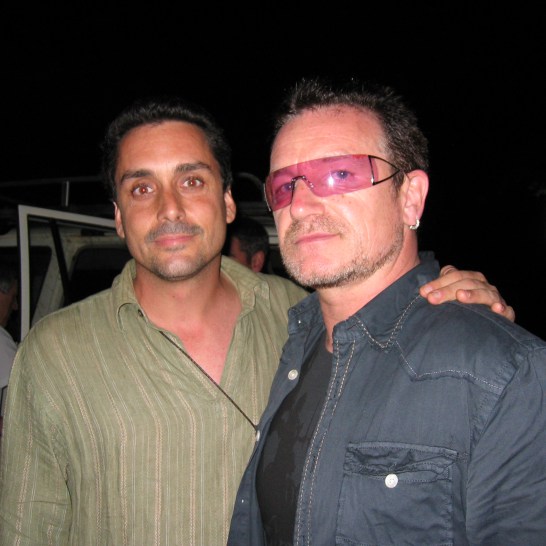
Mali is home to nearly 15 million souls, it is landlocked, and desert landscapes predominate the nation’s north. The Niger River is Mali’s bloodline, it cuts the shape of a scythe across the center of the country and creates a de facto border – northeast of the Niger River few towns dot the map, indicating the harsh dry conditions for living.
The bulk of the population is found in the southwest, closer to the capital city. Bamako is an ancient river community; now a growing, cosmopolitan city, (home to about 2 million people,) located at a critical division of the Niger River’s upper and middle valleys.
About 90% of Malians practice Islam, and of those a majority are non-denominational Muslims. The country’s cultural traditions are closely tied to music and dance, and, as noted earlier, Mali enjoyed a longstanding reputation of tolerance and peace among its diverse peoples.
A number of complicated political, social, and economic factors have conspired in recent years to change the cultural landscape and erode the ethos of tolerance. These factors include population growth; regime change in neighboring Libya; the availability of inexpensive goods from China – and especially the proliferation of religious extremism. Conditions are considered less stable and more dangerous, and extremism threatens the flow and continuity of people’s lives by censuring the practice of the nation’s cultural and musical traditions.

After about ten years of teaching, Chandler left his position at the American School in Bamako to focus even more on promoting and producing cultural festivals and the other work i4africa was undertaking. In 2011 the Bureau of Cultural and Education Affairs awarded Paul Chandler a research grant titled: Preservation of Endangered Musical Traditions and Essential Related Art Forms in Mali. In 2013 he was awarded a grant to produce peace and reconciliation cultural festivals in the northern regions of Mali.
He has also made a documentary film called It Must Make Peace. The preview (linkable below) is absorbing and beautiful. In it, Chandler and his fellow filmmakers highlight and explore the unifying magic of music. Winnipeg-based Director of Photography, Brian David Melnyk, creates gorgeous frames for the shots of the musicians. The filmmakers lend the proceedings a mature and patient gravity; they demonstrate that the nations’ songs and dances provide cultural traditions so rich that they are essential to life’s rhythms and continuity in Mali – from its cities to its tribal villages. One interview subject explains that by looking back and learning traditions, people can find a way forward:
“If our children know their culture, they won’t get lost…. If you follow the footsteps of your forefathers you can’t get lost…”
It Must Make Peace Trailer (2016 – Directed and Produced by Paul R. Chandler.)
The clip directly below features a passionate and revealing interview with musician Afel Bocoum. It helps to paint a picture of the general conditions for traditionalist musicians in Mali, and in addition to Bocoum’s guitar playing, you can also see and hear a variety of Malian players perform with traditional instruments:
I Sang a Lot for Mali-Afel Bocoum (2015 – Directed and Produced by Paul R. Chandler.)
i4africa’s work serves multiple purposes. First, the festivals themselves offer people a gathering place to perform their rituals and traditions. Additionally, they continue to teach younger generations the songs and dances of their people. And they give those gathered to perform at the festival, but who are otherwise unfamiliar with other musical and dance forms that may exist in their home country, a chance to witness Mali’s spectacular variety of dance and song. These traditions can be expected to help people understand one another and ultimately keep peace.

The festivals also support youth and women’s associations and hold peacemaking, community-building workshops.
It Must Make Peace debuted in Geneva, Switzerland in February 2016. It has been screened recently in Bamako, and also at the Festival International de Djenne, (which i4africa helped to plan and hold.) Plans for making the film available for world/U.S. audiences are underway.
If you would like to learn more or would like to make a contribution, link to i4africa’s Web site here: http://i4africa.org
20 April 2016
___________________________________________________________
All the Things You Wanted and All the Plans You Made

Jeff Runnings has amassed a catalog that now spans nine full-length releases. With his first solo record, Primitives and Smalls, (due 6 May 2016 from Saint Marie Records,) he has managed to synthesize not only an incredible variety of new musical tones, ideas, and moods; he has somehow also integrated his own completely distinctive sound with a lifetime rooted in meaningful musical influences. (Runnings has exerted his own musical influence that can be heard in the music of Weekend and DIIV.)
Primitives and Smalls may be his most deeply romantic and soul mining effort, and it is a soaring success. Runnings wrote every word and note, plays all the instruments, and as usual, his singing is confident and conspiratorial. While being strong rhythmically and melodically, the lyrical terrain that Runnings covers is no less fertile for being familiar. He explores heady universal themes with acid and wit – ranging from emotional torment, the psychologically destructive powers of resentment and obsession, the inevitability of regret, and ultimately, the combined powers of love and time to heal and transform us.
It is a wonder that something can sound so original, fresh, and new while also harkening flashes of the very best 1970s and 1980s post punk. Every note, every vibe, every juxtaposition sounds distinctly his own, yet Runnings gives us masterful and clever references to Killing Joke, Felt, The The, early Psychedelic Furs, as well as Duritti Column and other Factory acts of early vintage.
It is perhaps because Runnings has managed through the years to do something very elusive – he’s created his own musical language to build what is really an ethos – something that is wholly of his invention, but to which you are invited to participate. (You always know when you are listening to a Jeff Runnings song, in the same way you always know you are listening to a Cure song, or a Smiths song.)

While leading his band For Against over the past three decades, he has consistently been able to perpetrate a powerful form of refreshment, and even when necessary, reinvention. He’s accomplished this by erecting an incredibly broad and strong foundation of interesting sound and feeling that gives him lots of space to work in and add to.
That power is on display with Primitives and Smalls. Runnings uses a key-heavy approach layered with guitars and bass. In the way that Wire has been able to constantly refresh their sound by modulating degrees of rock, punk, and pop; or the way that XTC used jazz and heavy psychedelia to mix things up, Runnings’ music here stirs in classical piano, and, using the description found on Saint Marie’s Web site, he creates, “music driven by Cocteau drums and Factory synths, it’s like being pulled under the ice by your own tormented thoughts.”
Perhaps most impressive is the amount of restraint Runnings shows with brilliant hooks and super catchy strokes of sound. At times the way he is able to simply toss off and understate wonderful ideas fairly makes the listener ache – think of it like waiting for a massive explosion whose bright light and shattering sounds are somehow rather made all the more spectacular and satisfying by unexpectedly imploding.
As one example, the record’s closer, My Cheerleader, washes along beautifully – evocative bells, guitar trills, and woodblocks calmly driving the song. The number waits until its final seconds to pause then blast the listener with a brief and gorgeous spray of open chord guitar. Just a blissful handful of seconds that a less savvy artist would have (and could have!) overused. The listener almost hopes for the pretty guitar to continue, but then the song and the record dissolve into dreamy synth and fade out.
Saint Marie did a killer job with design and packaging. Here is a link to terrific write up on their Web site, with a track list and information for preordering: saintmarierecords.com – jeffrunnings.
Here are two songs to check out — Maze opens the record, and Travelogue.
Maze by Jeff Runnings From Primitives and Smalls (Saint Marie Records 2016).
Travelogue by Jeff Runnings From Primitives and Smalls (Saint Marie Records 2016).
7 April 2016
_____________________________________________________
Forgive Me For Giving Up
I may have given up winter for good. Forgive me, because springtime comes full of promises, like a cold martini sliding gently toward you across a low-lit bar. Spring brings freedom of movement; it dots and washes the world with color; it fills the air with warmth, scent, light, and sound.

As a side note, spring also means baseball.

Unquestionably the worst all around player on any team that I ever belonged to, I may also have been the worst hitter in the entire league. When I wasn’t riding the old pine, I logged time in shallow right field checking the leather knots on my mitt for tightness, and I was only ever ninth on the lineup card.
I loved the game, though – still do – and I would have given nearly anything to excel at it. But I didn’t and I gave it up. Easy to forgive me – as with many things, when it’s time for giving up, you know. So now I follow the Major Leagues pretty closely, and even pay some attention to the college game. When the springtime rolls around, I am ready for shedding layers, getting outdoors more, and watching baseball.
Anyway, enough on the side note ….
OH, Spring! You mean so many things! One of those things is great new music, though lately I have had a number of old tunes playing. Many of these old tunes are new to me, and have come through suggestions from friends – stuff that I had missed through the years. So I wanted to return the favor. Here is a mix, suitable for the springtime, of things you may have missed – and also some brand new sounds.

In a year-end favorites post from 2014 I wrote very briefly about Hundred Waters, a brilliant electronic/ambient-folk group: “Absolutely beautiful. Fans of Bjork, Cocteau Twins, and Hammock – plug in. [Listening is] like looking down from a great height through the clouds at the rolling ocean.”
I remember clearly the writing of that short recommendation. It was quite early on a December Saturday morning and I was listening to the band’s second album, The Moon Rang Like a Bell, through headphones. I was in an airplane, looking down from a great height through the clouds at the Gulf of Mexico. I had spent six nights in a hotel room – was heading home for one night – then would be off to another hotel for five more nights. I usually have trouble sleeping in hotels, and I was so grateful to have discovered Hundred Waters, because their beautiful music helped me to relax in the room and sleep well.
Something about the new spring season has Hundred Waters back on my mind, and they have a welcome, newish single, (a tribute to David Bowie,) that is a fabulous jazz-inflected number. It incorporates more straight instrumentation than usual with their electronica – saturated strings, simple jazz drums, and minor chord piano all work to accompany the absolutely fucking incredible voice of singer and lyricist Nicole Miglis.
Forgive Me For Giving Up by Hundred Waters (2016 OWSLA).

What a voice. These, too…
Out Alee from The Moon Rang Like a Bell by Hundred Waters (2014 OWSLA).
Boreal from Hundred Waters by Hundred Waters (2012 Elestial Sound).
And speaking of great voices, it is time to feature something long overdue on this page: Jenna Morrison’s singing and the lustrous talents of the Omaha band Conduits. All the band did in 2012 was to give us 40+ recorded minutes of near perfect dream pop, tour Europe, then …. What happened? Did they give up? They have been quiet ever since. Maybe they knew it was time, but that they have gone away with no follow-up is hard to forgive. The sound on the self-titled release is so mature and fully realized that it’s hard to believe it is a debut. They should have been massive.
This is a live version of the song, recorded at The Slowdown in Omaha for Hear Nebraska’s Love Drunk video series.
The Wonder from Conduits by Conduits (2012 Team Love).

Also recorded live in Omaha:
Limbs and Leaves from Conduits by Conduits (2012 Team Love).
Blood from Conduits by Conduits (2012 Team Love).
And from Nashville, the wildly original two-piece, Hammock, has a new release due 1 April 2016. This band is good in spring or any season at all – and they don’t sound like anyone else. (Comparisons to Sigur Rós and Robin Guthrie get close – and they are meant as high praise – the band’s members, Marc Byrd and Andrew Thompson, are fans of both.) Here is an early single from the upcoming full-length:
Dissonance from Everything and Nothing by Hammock (2016 Hammock Music).

This song from ten years ago sounds as fresh as the day I first spun it. Fans of For Against, especially the fantastic lyrical and melodic sensibilities of Jeff Runnings, will dig this.
Raising Your Voice … Trying To Stop An Echo the title song from the album by Hammock (2006 Darla).
I have forgiven you.
29 March 2016
_____________________________________
The Potency of Symbols
Man, the South is strange. I have not spent too much time down there, and want to be careful not to paint the people and collective judgments of thousands of square miles with the same brush – but man, it’s strange.
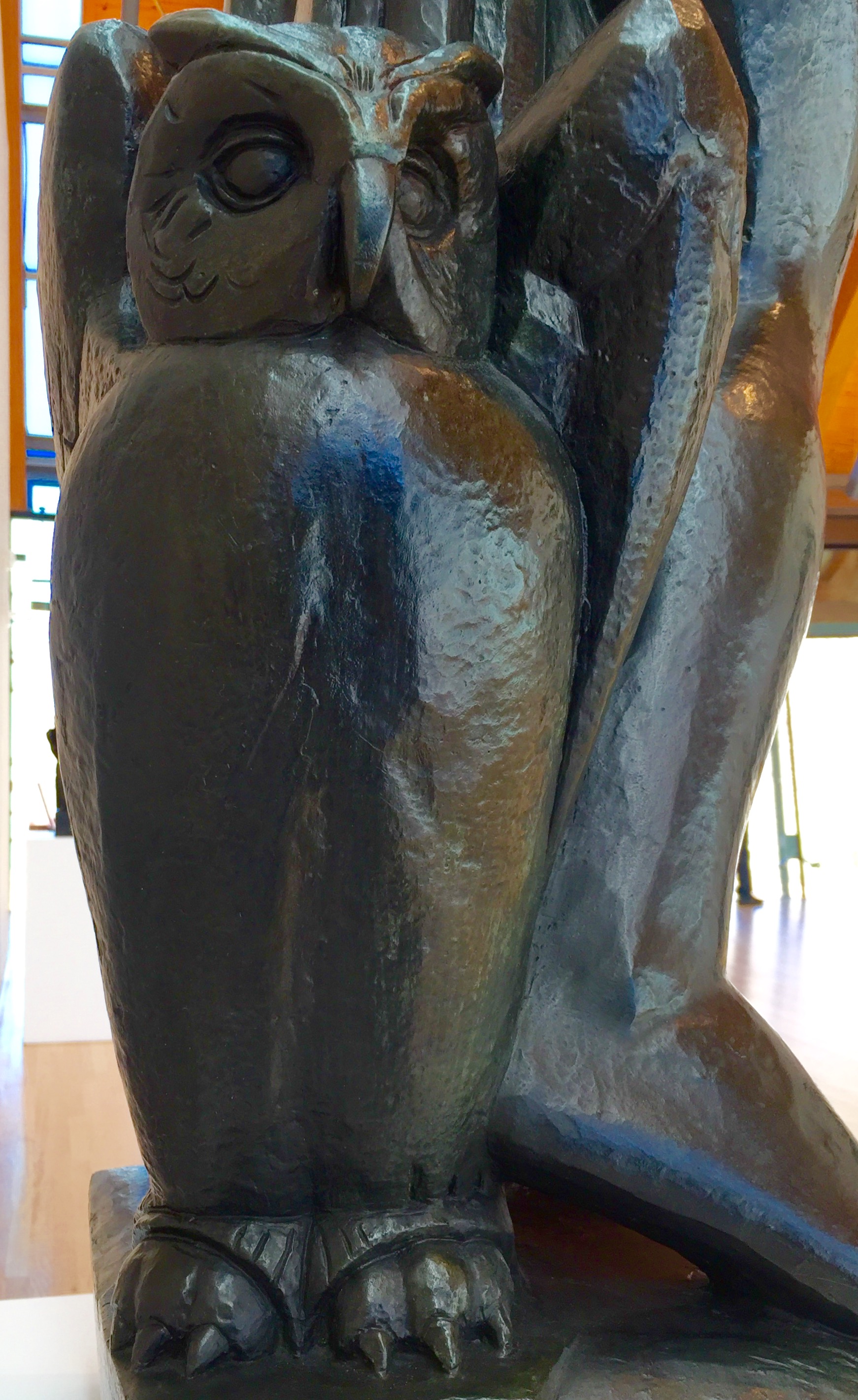
Judy and I were just down in Arkansas with a couple of our dearest friends, Diane and Howard, and we were having a great time – a really fun short getaway. Because, the South is not only strange, there is also lots of upside in the South, like great food and sweet warm weather. And there are curious, charming specifics of regions, like a comfortable pace for instance, and being called ‘Mr. Matt’ by people to whom I have only just been introduced as ‘Matt.’
But the South, boy – there are things that make me pretty uneasy, too.
With our friends, we rented a cool old house in a compact, tidy town – we were walking nearly everywhere. In the center of the old business district was an open block town square with handsome sculpted gardens and symmetrical walkways. For some reason we had not walked through the town square until the final night when Howard suggested that we do so.
Ugh. In the center of the square was a largish circular fountain, and in the center of the fountain was a tall stone sculpture of a Confederate soldier mounted on a pedestal. In bold block font on each of the pedestal’s four sides was the word CONFEDERACY. The vibe cast by this town square’s memorial shook all four of us simultaneously. Then …
Double ugh. As we stood in the lamplit square, not really saying anything to one another, along the pretty main street came rumbling one of those tricked-out pickups – jacked up with gigantic tires, etc. The truck’s very loudness caused us to turn and look. There in the breeze of a nice warm night – flapping on a pole that was secured in the bed of the truck – an oversized Confederate flag.
Oh South, you are strange. Compared to the statue, my reaction to the flag was more intense – it was internal, visceral, and spooked – the potency of the symbol nearly put this Yank off of his catfish and fatback grits.
One of the kindest favors music can do for us is help us to travel in time. In my recent case, I wanted some music that would improve or erase the temporary poor impression of the South. So I traveled back to a time that I associate with growth, happiness, light hearts, and some simplicity. This year marks the thirtieth anniversary of two records that influenced my listening heavily and that I have enjoyed over and over. I thought these two deserved new serious listens, and might be just the things to rid me of the ugly taste of celebrated Confederacy. I was rewarded, and I generated a few new thoughts after revisiting the following music.
First, Skylarking by XTC (1986 Geffen/Virgin Records). Some of my friends and I probably never expected to hear a better record than Skylarking. We were fans of the earlier records, and I think now that I like the five that directly precede Skylarking best: Drums and Wires, Black Sea, The English Settlement, Mummer, and The Big Express. But at the time, and for years after, the sounds of Skylarking came to symbolize a whole time for me – a time of rich personal inspiration and ambition. Skylarking was more grown up. It was lyrically brilliant, discussing big existential and philosophical ideas, and asking questions about how how to function in the world – taking on religion and class, life and death.
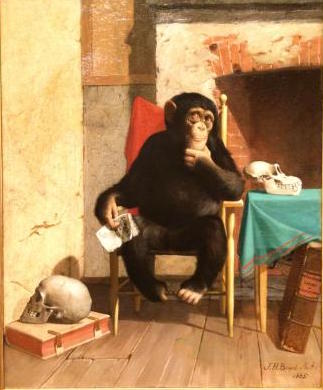
I found its broad range of ideas and styles, and its musical sophistication enthralling – and the band had never been afraid of being a little daffy in the name of fun.
The two bands’ stories and trajectories are different, and certainly XTC never was going to dominate the world in the way that the Beatles did, but I think there are strong cases for comparison. Both bands had the ability to cut quickly and decisively from light, boyish goofing to dropping deeply introspective nuclear bombs – they could both go from pastoral lushness to explosive pop/rock in a convincing snap. Certainly both bands were wildly imaginative and unafraid of experimentation and expanding on ideas that had been set down before them.
All of this holds up so beautifully…

The Man Who Sailed Around His Soul
The song below was originally on the UK release of Skylarking. The U.S. release instead featured the b-side for the song Grass, called Dear God.
And then, good old Graceland by Paul Simon, (1986 Warner Brothers).
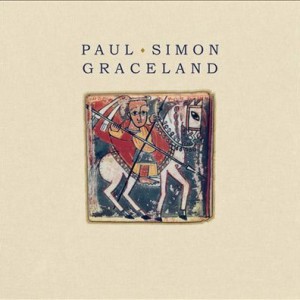
Like most people at the time that Graceland was released, I suppose, I had limited experience hearing Western pop music integrated in that way with African music. (Peter Gabriel released the gigantic-sounding, African-influenced hit So that same year.) The album gave listeners an unusual balance by combining the exotic rhythms of Tex/Mex, Latin, zydeco, and multiple African cultural sounds, with the iconic, familiar voice and heady confessional poetry of Paul Simon. His ability to make these things work together had the effect of making us feel smart.
This album played in super-heavy rotation during most of my senior undergraduate year, and became so habituated that it is a bit strange to listen to it anew now. As a whole, I still very much enjoyed it, but the songs that became hits, (especially the silly You Can Call Me Al,) register almost automatically as simple background music – nothing wrong with that.
Accusations of cultural appropriation and genre-tourism bedeviled Simon at the time of the record’s release. There was even a case related to a song on Graceland, where the band Los Lobos called Simon a straight up thief. Some of this seems quaint in light of the explosion of hip-hop – many of whose very best artists function as thieves and appropriators. It is interesting to note these social and cultural matters inasmuch as social and cultural political matters were the impetus for me to re-listen.
There are still a couple of real stunners. He is, of course, incredible with duets:
Under African Skies Paul Simon with Linda Ronstadt.
And he can be darkly funny, too:
Certain things stick around – they become so familiar that they fall away into the environmental ambience. We become so used to songs, or streets, or statues, that they are hardly noticeable. Some of these things are mostly benign, some can still rise up occasionally and thrill us. Some come rumbling down the pretty street to confuse and even disgust.
Be thrilling, occasionally.
16 March 2016
_____________________________________________________________
A Little Help From My Friends
A lifetime of collecting music to love is a bit like a lifetime of saving money – when times are tough and you can’t come up with any new tunes to enjoy, you need an “account” of old music to draw upon to get you through. But you always want to be sticking a little more into the old bank. I’m constantly on the hunt for holy money: the sweet rewards of new music – or more accurately, music that is new to me.
Regular readers may remember that a consistent theme threading through these posts is the experience of music as a form of time travel. With a little help from my friends, I recently got hipped to two great things worth sharing – and both of them fit right in for experiencing music as time travel.
First, thanks to my friend Amy Farnstrom. She and I have exchanged opinions on music from time to time since we were at college together. Our tastes run close so it is no big surprise that when we would catch up to exchange suggestions with one another, (sometimes after long stretches of being out of touch,) we’d discover that we had picked flowers from the same musical garden. She helped turn me on to one of my all-time faves, Belle and Sebastian; she was always a huge fan of David Bowie; and she championed wailing guitar gods like Johnny Marr and Pete Townshend.
She recently sent me the link for the self-titled first record of the band Heron Oblivion. I got a chance to listen to the whole thing once through this morning. There were immediately “grabbing” elements that Amy knew would be in my wheelhouse – especially the wonderful female vocals and the psychedelic rock aspects of the songs. I could also tell that the record will be a “grower” and that there will be much to pull out and appreciate on repeat listens.

The expansive sound percolates with fantastic rhythm provided by great 60s/70s style rock and folk drumming, and by creative bass flows. Throughout the record you can depend on the sweet, dull roars and resounding flickers of psychedelic guitar. And the big star for me here is singer Meg Baird – her vocals fairly sparkle.
The time travel machine invoked by Heron Oblivion can take you back to any of the prior five decades. The opener, Beneath Fields, has the assured trippy psych-folk quality that I would associate with a smoky subterranean San Francisco bar in the mid-1960s. My immediate favorite song, Faro, conjures the late-80s and the 90s with a driving, insistent, wildly experimental pluck and flow of sound that is straight out of Sonic Youth’s playbook – including the freaky guitar tunings and the breathy lyrical delivery that Kim Gordon mastered – a mixture of spoken and sung words that convey simultaneous vulnerability and confidence.
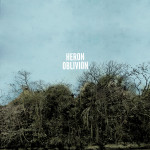
The record is due 4 March 2016 on the Sub Pop label. You can hear individual songs, or the whole thing here, now:
Heron Oblivion – NPR First Listen
Thanks also to friend Scott Lewandowski for his recent ‘reco’. Sweet Lew and I were boys together, and have stayed in close touch ever since. He has always had a great ability to sniff out cool sounds – and he recently unearthed a band that we had missed from the early 1980s – ESG – Emerald Sapphire Gold. (They recorded 1980-1985, and again for a time after 1991 – their music was reissued in 2010 on the Fire label.) I have just been poking around on YouTube to sample the band’s tunes and every click leads to a delightful new find for me.

It turns out that we have all probably heard lots of ESG’s music because so many great bands, including Public Enemy and Beastie Boys, have sampled it. Their influence on the original music of bands like Luscious Jackson is easy to hear, too. What is so crazy is that the Factory Records’ sound guru, Martin Hannett who is associated with Joy Division, produced the band’s first EP.
ESG’s main drivers were the Scroggins sisters from the south Bronx. They created a pretty stripped down and original music that is remarkable for its variety – from weirdly dark to just funky and fun.
Lew suggests checking out this one because, “the chorus sounds like dogs barking,” and he, “loves the tambourine.”
Dance by ESG from Dance to the Best of ESG (reissued in 2010 Fire Records).
This should be familiar:
UFO by ESG from the EP ESG (1981 Factory/99 Records).

Naked Eye by Luscious Jackson from Fever In Fever Out (1996 Grand Royal).
New Town Velocity by Johnny Marr from The Messenger (2013 Sire Records).
Get in touch with an old friend.
27 Feb 2016
___________________________________________________________
Prophetess of Spiritual Apocalypse
My mother annotated her environment. Florence was mainly a homebody and as we’ve been cleaning out her house, my sisters and I keep finding little handwritten notes – hundreds of them – often in nearly microscopic but always beautifully legible cursive. She made notes in expected places like book margins, on the edges of photographs, and on calendars.

But she also wrote highly detailed, sometimes florid notes on un-special pieces of scrap paper. She would then tape them to the bottoms of delicate china, or sturdy silver trays. She tucked them between the colorful folds of fancy silk scarves, in jewelry boxes, in the labels of long unworn clothing. I found an old, pale yellow Pepsodent toothbrush holder with a tidy little reminder slipped inside that it had been, “Used only three nights in Las Vegas.” Her sacred and lucky toothbrush case.

All of this would be hilarious if it were not also heartbreaking. There is a soulful quality to the endeavor of cataloging one’s surroundings – something generous that is close to being spiritual. Some of her commentary is delightful and lighthearted – charming reminders of the origins of her keepsakes. Many of her notes are simple, straightforward, and descriptive. But a few individual scraps of paper betray the quivering hand of a writer who set down each careful word with anguish, squinting, and with her eyes full with tears.

She was determined to get her story down and began writing little notes early in her life – we have found her memories recorded and attached to items dating from her girlhood days in the 1930s and 1940s. She was fiercely devoted to her parents and dearly loved her family. But the frequency and the urgency of her existential footnotes reached new levels during crises – for instance, after my dad died – and then especially in later years when she was developing signs of dementia. Most of her notes from that time are clearly meant for dual purposes – first, to remind herself of herself; and also, to tell others of the significance of her important things and the people who populated her life. Taped to the clapper of a ceramic handbell: “From Phil, My Dear Husband, Our children’s Daddy – Berlin, Germany – 1983 – He LOVED you. Great Guy!”
Combined with the practical necessities of tying up loose ends at the end of a loved-one’s life – these little notes have made cleaning out our mother’s home a form of emotional anthropology for my sisters and me. During our times spent together going through mom’s things, there is a mixture of joy and sorrow that we feel, both individually and as a sibling group. There is banality, mystery, and gratitude in our work – respect and confusion. It makes me sorry for anyone who must do such things alone, because it is exhausting. Each detail, each story, and each shred of paper is really a plea: “Please remember me.”
These are matters that also have me thinking about how other people tell their stories and the importance of doing so. Recently I learned about a fascinating Ukrainian artist named Mariana Sadovska, (thanks to coverage by NPR’s All Songs Considered of globalFEST 2016 at Webster Hall in New York City.) Writer Rob Weisberg’s summary of her is very fine: “… a charismatic and adventurous musical and theatrical performer. She began her career in avant garde theater, but also traveled across Ukraine, her home country, to learn songs from village women. She combines these influences and uses an array of traditional and non-traditional vocal techniques to create some of the most distinctive interpretations of traditional song you’ll hear anywhere.”

I will add that I first heard Sadovska while driving my car ninety minutes from my home to my mother’s. I was alone, and by the end of the first song I was so moved – so shaken – that I impulsively growled out a loud, “WOW!” when the song’s last notes faded away. Her singing infused me with a shock of adrenaline and emotion. I am unaware of any Eastern European heritage in my family, but this music hits me the way blues must hit others. I immediately replayed the song and my reaction was the same.
There are centuries contained in Mariana Sadovska’s voice, and multitudes. It is as if she has the ability to gather up into her body the events of years, and the anxieties, grief, and joys of souls from the past, then unloose them in displays of spectacular primal vocal variety. Her voice is at times otherworldly but always distinctly human, like the crying of a single soul echoing out from a thousand-year old tomb, or a curious and soothing sound riding to you on a breeze from the heavens. At times it is as dark as the inside of a closed coffin. And at other times her voice is an eruption of fire, while she embodies a witchy prophetess of volcanic spiritual apocalypse.

Although the methods and the scales are poles apart, it strikes me that this wonderful artist, (with the devastating notes of her songs,) is making the same essential plea that my mother made with her notes: “Please remember me.”
I cannot decipher the lyrics of most of this song – her incantations are in Ukrainian, Russian, or Polish – but a chill will almost certainly rush over you when she sings a few words in English and you realize that the intensity of her tone and attitude are products of an undeniable universal affliction – the desolate torments of reflecting upon lost time and wasted youth.

Modern and ageless simultaneously, here is a link to a perfectly titled song:
Spell by Mariana Sadovska recorded live at globalFest 2016.
And this one:
After You’ve Gone by Marion Harris (1918 Victor).
Please remember me.
13 Feb 2016
______________________________________________________
You Can Leave Your Cares Behind
With nearly a month under our belts 2016 is shaping up to be a nice year. Today the sun is shining cheerfully and I had a nice walk and chat with my friend, Mary. Every few weeks we take an hour to circle around the lake that she lives on with her husband, Jim. It was great today, bright and cool and windy. Geese and hawks were swooping around, and the two of us threaded our way through the muddy trails and trees while catching up. It is wonderful to talk with someone about the things you care about, and to discover that in so doing, you can leave your cares behind.
Something else to be happy about – DIIV has a new release due next week that will feature 17 tracks. In case you are new to DIIV, the band’s front man, multi-instrumentalist Zachary Cole Smith, has a proclivity for loose-fitting clothing and mind bending, complex, shoegaze pop.

Thanks to the folks at The Guardian, who have put up an exclusive live stream to the entire piece, you don’t need to wait another minute to hear Is The Is Are, DIIV’s follow up to their brilliant 2012 debut album Oshin.
You can link to Is The Is Are by DIIV (due 5 Feb 2016 Captured Tracks) here:

I am about halfway through the first listen and have loved every second so far. Go ahead, link to it and then you can dance if you want to. Like its predecessor, Oshin, this new DIIV release, Is The Is Are, will be in extra heavy rotation around here, and will show up on many best of the year lists.

Be kind to each other.
29 jan 2016
_____________________________________________________________________
New and Delicious 2016
Finding and hearing new music is one of the great sensory pleasures of life – as satisfying as stroking a purring cat or eating a wonderful meal. There are scads of very rewarding places to find new music, (some are discussed briefly at the end of this post,) and lately there’s been a spate of fine new tunes to discover – including music from this fine fellow.

Listen to this song from The Arcs. It was released late last week and I must have played it a twenty times already – I seriously can’t get enough of it. It was inspired by the case of a Wisconsin man who spent 18 years in prison for a crime he didn’t commit. Beyond the lyrics, it has beautiful minor chords and a tempo that puts me in the mind of a slightly rocked up version of Jobim’s Girl from Ipanema. It is dreamy and addictive – simply slaying. It is as if the guitars are programmed to make you sway and swoon. I am going to listen to it again right now.

Lake Superior by The Arcs.
Thanks to pal Andy Agena for hipping me to this: Tim Gane of Stereolab formed an exciting new collaborative project called Cavern of Anti-Matter in 2013. A triple LP is due next month and guests include Deerhunter’s Bradford Cox and Sonic Boom from Spacemen 3. They’ve offered up over twelve minutes of new material that has the same propulsive and varied electronic invention that Stereolab delivered for about two decades.
The piece linkable below is all instrumental, (the multi-signature sound of Stereolab was wedded to the inimitable vox of Laeticia Sadier, and the dear, late Mary Hansen,) but Gane mines the gamut of instruments and apparatus to satisfy your craving for groovy syncopation and hooky drone.

Tardis Cymbals by Cavern of Anti-Matter from the upcoming full-length void beats / invocation trex (due 19 February 2016 Duophonic).
The four-piece band Savages are the answer to the question, “Where has the intensity gone?” Three English players and an almost unbelievably ferocious French singer deliver a thoroughly potent mix of post punk that channels Joy Division. I am so eager for their new release that is expected later this month.
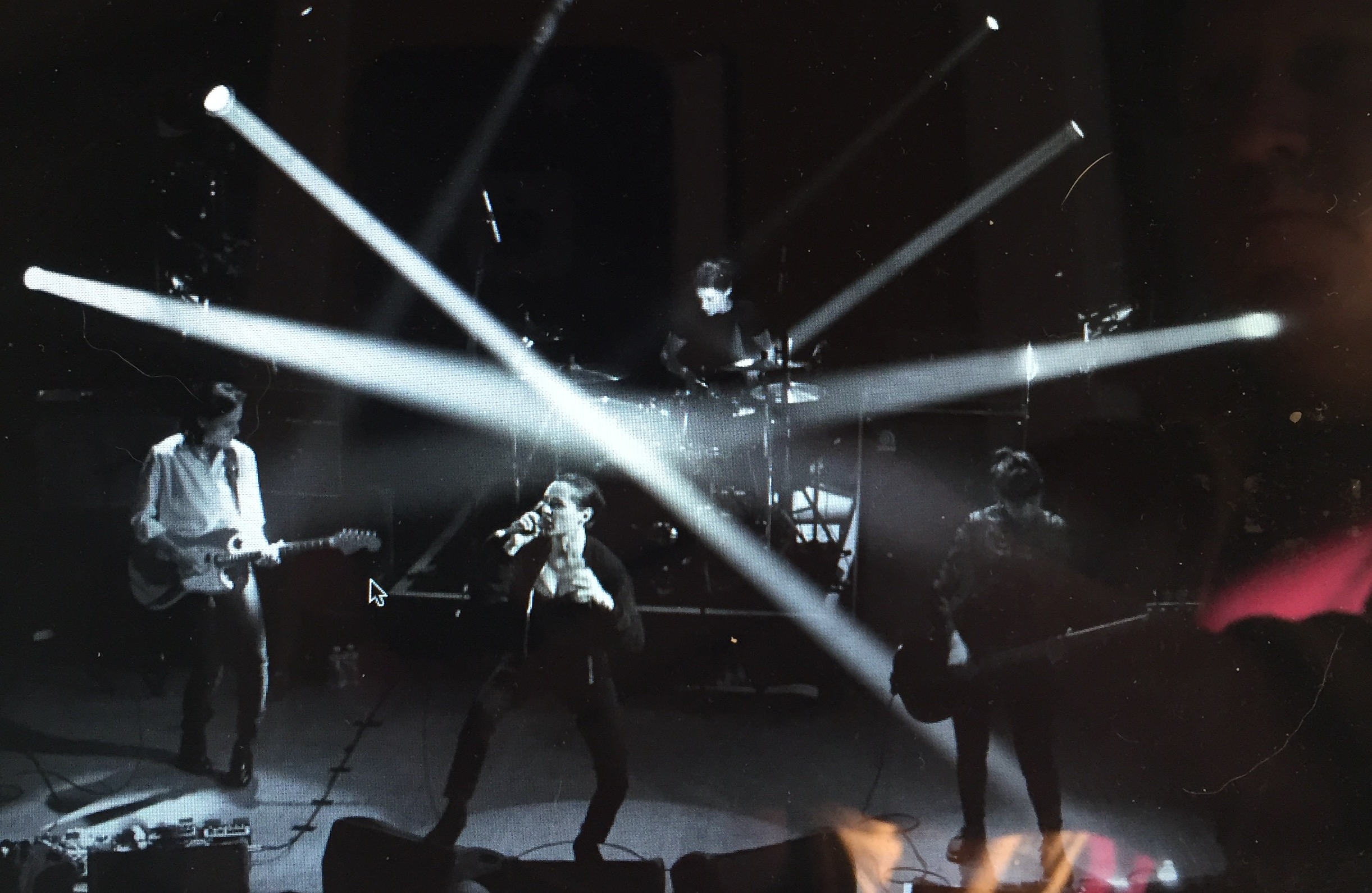
The Answer by Savages from Adore Life (due 22 January 2016 Matador).
The artist whose name appears most frequently on this blog is David Bowie’s. His broad range of magical, seemingly limitless talents have influenced, awed, delighted, and educated me as much as any artist. He is responsible for forming my musical taste as much as anyone else, and his music has given me so much pleasure. I owe him enormous gratitude. His new project with producer Tony Visconti is called Blackstar, and it is a jazz/rock masterpiece – extraordinarily challenging and innovative. It was released only several days before his demise at age 69.
He was always fascinating. There was no one like him. I wish safe travelling for him into the stardust. Thank you, and please rest in peace.

Lazarus and Blackstar by David Bowie from Blackstar (2016 Columbia).
Here is precedent for the mad, jazz mastery of David Bowie and his cohorts that was recorded over 40 years ago. It still sounds brand new. Bonkers. This will leave you shaking your head in wonder and joy.
Aladdin Sane by David Bowie from Aladdin Sane (1973 RCA).
Note:
I am really thankful to some of the outlets at my disposal for the collection of new music, and for learning about things I may have missed along the way. The question comes often: “Where do you find out about all this music? First, I have great friends with great taste who have taught me throughout the years. Jeff Runnings, Peter Palermo, Cathy McBride, Robert G. Bennett, and Peter Acheson all come immediately to mind and get big nods – and there are lots of others whose names will rocket into my mind the second I post this. Thanks all. I am indebted in ways big and small to the people, programs, and sites that help me learn about, and turn me on to music. This is an incomplete list, but it’s a start. I endorse the following
I never miss a podcast episode of All Songs Considered. I have been a longtime fan of the criticism of Bob Boilen and Robin Hilton and their colleagues at NPR. They almost always seem to “get there first!” They play a mix of established and obscure musicians and combine criticism with interviews, stories, and live performance. The focus is on new music, and while I don’t always agree with their tastes or takes, I do always listen.
Sound Opinions is a weekly podcast from radio station WBEZ hosted by Chicago-based writers, Jim DeRogatis and Greg Kot. They feature lots of live performances, interviews, and breakdowns, as well as reviews. The focus is on providing musical context, and while they primarily feature new music, there are healthy doses of exposition to historical and multi-genre music. Again, I don’t always agree with them, but I do always listen.
I look at Pitchfork a few times a week. A comprehensive service to lovers of lots of new music, they post news, reviews, and links to music. Pitchfork Media is considered an iconic tastemaker by many, and considered overreaching, insufferable, and ubiquitous by many others. I like it.
There are tons of cool (and much less hyped) outlets, too. Hardly anything is as cool as Jack Rabid’s project The Big Takeover that started examining and championing the underground of new music as a classic zine in 1980.
I learn about so much great music by listening to Sirius/XM’s satellite radio station SIRIUS/XMU. Highlights include:
-D.J. Jenny Eliscu.
-The featured weekly show called Download 15 (the fifteen most frequently downloaded songs of the week.)
-Access to specialty shows from music bloggers like Brooklyn Vegan, Carles, gorilla vs. bear, and even monthly treats like Serious Boredom hosted by Patrick Carney (and as a tidy bookend, Carney is the Black Keys bandmate of Dan Auerbach – who led this post off with his side project The Arcs…)
I have to admit it is a mixed bag and change the channel often to get away from some of the dreck that is played on SIRIUS/XMU, too.
Phew – lots of info there! Be good.
11 january 2016
__________________________________________________________________
2015
Joy / No Joy

Night. You are driving alone and nearing your destination. A great song is playing through the car speakers. You turn up the volume. You have arrived but love the song too much to stop so you drive around the block to hear the end. Or maybe you stop, put the car in park, and sit listening in the driveway with the car running.
I have had years like that, too. Ones that were so great I would want them not to end. Years I’d like to take around the block one more time, or just sit with a little while longer in the driveway.
Not this year, though. Not 2015. A really weird year. It has flung grief, injury, and illness around like parade confetti. It has amplified little cruelties. Its lens has focused sharply on the bizarre misbehavior and stupefying hurtfulness of a few friends. All forgiven now.
And 2015 certainly shined its bright lights on my own actions, too, when I was cutting, stupid, or mean. All forgiven now?
SMDH. GMT. Yes, I am shakin’ my damn head – grindin’ my teeth at 2015 and eager to put this bastard in the rearview mirror.
Sure, there have been good times – I am a lucky person. I have had great times with friends and family, most of whom continue to daze and dazzle me with displays of breathtaking generosity and thoughtfulness. The great takeaways for 2015 are these: first, there are surprising little treasures around each corner to remind us life is worth living – like a kind word or a song; and there are huge treasures to be found in the way that friends and family can pull together to get through some real bullshit, doing their best to take care of one another.
I’m lucky. Still, Goddamn 2015.
Anyway, be decent to one another. Let stuff go. Remember the old one: “… always be kind because everyone you encounter is fighting a battle you know nothing about.”
Kind of sappy – and perfectly true.
Enough.
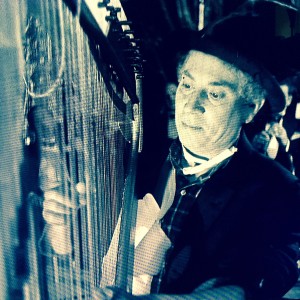
So, music. There have been some real bright spots this year – but I haven’t been able to keep up. From an incomplete list, these are highly recommended:
(As always, clickable links to songs are underlined in italics.)
***Favorite records of the year:
No Joy – More Faithful. Urgent, raw, and beautiful. This record is super summery and works to conjure memories of happy old days while sounding brand new at the same time. Music as time machine, and played as if there is nothing to lose.

Hollywood Teeth and Everything New by No Joy from More Faithful (2015 Mexican Summer).
Beach House is now nearing the towering sonic realm of Cocteau Twins. I am madly attracted to this music and I LOVE both of their new releases.

Released in August, Sparks by Beach House from Depression Cherry; and released in October, Majorette from Thank Your Lucky Stars (2015 Sub Pop).
Sufjan Stevens made an all-timer this year that I also loved called Carrie and Lowell. It is a love letter to his complicated boyhood, and in a way, it is a requiem for his mother, from whom he was estranged for most of his life.
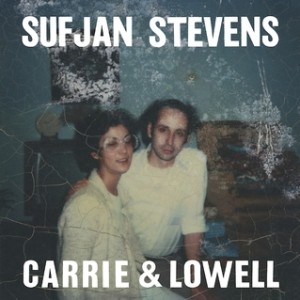
Death With Dignity and All of Me Wants All of You by Sufjan Stevens from Carrie & Lowell (2015 Asthmatic Kitty).
***Favorite songs of the year:
Life Like This by Kurt Vile from b’lieve i’m going down (2015 Matador). More music as time machine – this sounds like my tenth and fiftieth birthdays simultaneously.

Boxing Day Blues by Courtney Barnett from Sometimes I Sit and Think, and Sometimes I Just Sit (2015 Milk! Records).
WTF (Where They From) by Missy Elliot featuring Pharrell Williams.
Perfect Couples performed live by Belle and Sebastian from Girls in Peacetime Want to Dance (2015 Matador).
King Kunta by Kendrick Lamar from To Pimp a Butterfly (2015 Interscope).
21 december 2015
____________________________________________________________
Proximity, the Breadth of Distance, and Triangulation
Reluctant leaves began yielding to stout chilly breezes during this last week or so. Finally they are falling in pretty bronze and yellow masses. October and November have mostly been extensions of summer, but recently the season locked in, and on a wonderfully rainy autumn day, I took a solo walk.

You’ve done this, too, I hope, on a windy fall day — tried to pluck from mid-air a drunkenly descending leaf. It is, on its surface, a frivolous thing to do – a little kid thing – and I am for it.
It can happen like this: first, you see the leaf tightly zigzagging down twenty feet or so ahead of you, and perhaps about that high in the air. Next, you begin a horizontal approach – trying to time your arrival at the spot where the leaf will be in its fluttery vertical descent.
Then you take your chance and clutch at the leaf. Of course, you don’t catch it – you just barely miss – you had no more chance catching it than you would have catching a wisp of smoke. And still, there is a thrill. Actually, an undiminished thrill – you were so close. You want to try again and begin immediately to scan the foreground for the right opportunity to triangulate.
The approach and the near miss of contact can be as exhilarating and sometimes stronger than actual contact. There is sometimes a value in sheer, delicious proximity; often there is a cherished respect for that narrow breadth of distance that makes up the spaces between us; and of course, there is the luxurious pleasure of reflecting upon the courses of events that bring us together – or almost together – the triangulation.
The songs of the brilliant band Beach House make me feel that same exhilaration. Their music celebrates the space between tones, chords, and notes as much as it revels in its ravishing sounds. It is music that proclaims its own silence and breath. It acknowledges the precious difference of closeness as it is opposed to contact – and for me it translates the often very complicated language that communicates the understanding and appreciation of that difference.

I am madly attracted to this music. Beach House is now nearing the towering sonic realm of Cocteau Twins. There are two particular and magnetic things that both these bands do to pull me into their spacious worlds:
First, in an intellectual way, there is a pervasive artifice of the work – this music acts upon me like my favorite European and British art and literature of the late-19th century – there is a delightful ‘meta’ quality – where the work recognizes and rejoices in itself, (is conscious of itself,) as a beautiful (or an ugly) artificial construct.
Second, from my heart and guts, this music makes me conscious and happy about the people and the things that I have been close to.
They have two new LP’s this year – released within two months of each other. Depression Cherry came in August and was featured briefly on this page in July, and Thank Your Lucky Stars came in October.
At the top of their game.
Majorette by Beach House from Thank Your Lucky Stars (2015 Sub Pop).
This is a live version from The Late Show. Jude and I have caught them in concert a couple of times and they are haunting live. Here they are gloriously imperfect and throw their vibe mightily past Stephen Colbert’s goofy introduction. Witchy.
One Thing by Beach House from Thank Your Lucky Stars (2015 Sub Pop).
Best of the year?
Elegy To The Void by Beach House from Thank Your Lucky Stars (2015 Sub Pop).

Best ever.
Dear Heart by Cocteau Twins from Garlands (1982 4AD).
Violaine by Cocteau Twins from Milk & Kisses (1996 Fontana).

19 nov 2015
____________________________________________________________
Insomnia Revisited
Smoke

You knew it. The relationship meant more to you than it did to the other.
She loves me not….
It may have happened to you slowly – the realization like a jagged gutting with a blunt blade.
He loved me never….
It may have been fast, too, when it happened to you – a quick clutch at your chest and wham! Crumpled to the ground as if your feet and legs turned suddenly to ash beneath you.
Loved no more….

These are the things that keep us awake at night: The memory of the charming boy you loved; the smoky-eyed woman; the member of the family. The teacher.
And, maybe it was not someone, but something. Something you loved absolutely. And you came to know that it didn’t feel the same about you – could never feel the same. It hurts. Then it kind of goes away. And then, some of those old pains bubble up – the old pangs are the jostling ruminations of insomnia.
The last three nights were long ones and didn’t come with much sleep. Here is what I was thinking about: A relationship that meant more to me than it did to the other. I loved it absolutely. It loved me not.
But I didn’t care.
I am approaching a seven-year anniversary of smoking my last cigarette. People who have given up cigarettes often mention that they still have cravings, and there are certain common “triggers” for wanting to smoke. For lots of people, stress is a trigger. For others, it is the time after meals. For many it is when they drink alcohol.
I have two triggers that make me want to smoke. The first is being awake. When I am awake, I want to smoke. The other is when I am asleep. When I am asleep, I dream of smoking. (And I haven’t forgotten why I am here – I associate lots of music with smoking cigarettes, too. More later….)
Cigarette smoking was my terrible girlfriend – the great non-reciprocating, iconic heroine of my life. The eventual realization that I had been on the wrong end of the relationship came over me seven years ago, and that realization has punished me thoroughly. And it has punished me often.
It’s not the same, (I know, oh, I know,) as when one suffers an unrequited relationship with a person. I have experienced that. But still it seems somehow like I have lost someone, too. Cigarettes were my companions. They gave very much shape to my life between ages 17 and 43.

So now, when I find myself staring at the ceiling at 4:07 a.m. and I think about smoking cigarettes, I can recall some good times. Here are some of the old smoky ways from the old smoky heydays.
Legendary wingman, and one of my all-time dearest friends, Sweet Pete is from southern California. When we were in college together, he despised the dry cold weather of Nebraska winters. As a way to confront that hatred on the coldest nights, he and I would get a pack of Kool non-filter menthol cigarettes, a few beers, a pint of peppermint schnapps, and a package of strong Velamint peppermints.

We would brace ourselves against the cold and walk in the dark to the cemetery or to the outskirts of town. We would walk on country roads passing the little bottle and eating mints, smoking cigarette after cigarette, breathing in the icy air.
Then we would go home and talk about the darkness and shadows, and about the starry sky, and we would smoke more cigarettes.
In October 1985 Pete and I decided to try on our hobo personas and head out west. It was time to ride the rails. We found a spot near the old depot in Hastings, Nebraska where we could stay pretty well hidden and wait for a chance to hop on a freight train. To prepare for our trip, we knew we would need supplies. For supplies, we would need some money. We took up a collection. Actual hats in our hand, we went around campus and asked our fellow students for pennies and nickels.
We got enough contributions for what supplies we needed: a carton of Lucky Strikes and a bottle of inexpensive Scotch.
We packed up a few things in a bag borrowed from our friend, Amy, and we had a couple of beers at a party that some of our friends from the Theatre Department were throwing. (I was in Medea that month, playing the least believable Jason that you might ever be able to imagine. So bad was I, that, to paraphrase Woody Allen, “Euripides would never have stopped throwing up.”)
After some time at the party, we had a couple of ”going away” beers at the Olive Saloon downtown in Hastings.
It became very late and very dark.
After one failed attempt to get on a westbound freight (long story) we thanked the police officer, and headed home in the black of night to regroup.
The next morning we agreed to get on the first train we could. Just as we arrived at our secret spot near the depot, a train came by. It was heading east. We did not care. We ran toward the rumbling flat car and jumped on. By the time we hit the edge of town, we had lit cigarettes poking out of wide smiles.


Some of these wonderful songs go through my mind in the lonely insomniac hours – smoky tunes from the vintage of college days. Hello darkness. Hello dear old Pete. Hello friend.
Favour by The Wake from Harmony (1982 Factory).
–Dig Siouxsie’s collar and her fab dance moves in the video. An enormous fave.
Happy House by Siouxsie and the Banshees from Kaleidoscope (1980 Polydor).

—Judy reminded me about this great one from those days.
Sex Beat by The Gun Club from Fire of Love (1981 Ruby Records).
–It’s difficult to pick just one song by XTC, but here is a favorite.
I Remember the Sun by XTC from The Big Express (1984 Virgin Records).
–Rude boy, Joe Jackson.
It’s Different For Girls by Joe Jackson from I’m The Man (1979 A&M).

–A favorite at the old Olive Saloon.
Up A Lazy River by The Mills Brothers (1952 Decca).
Crazy by Pylon from Chomp (1983 DB Records).
ICB by New Order from Movement (1981 Factory).
White Girl by X from Wild Gift (1981 Slash).
More Than This by Roxy Music from Avalon (1982 Polydor/Warner Bros.).
Perfect Circle by R.E.M. from Murmur (1983 I.R.S. Records).
–So much longing in this song’s insistent rhythms and Annie’s crystalline voice.
For the Love of Big Brother by Eurythmics from 1984 (1984 RCA).
–We could be sentimental. It was a luxury we could afford.
The Moonbeam Song by Harry Nilsson from Nilsson Schmilsson (1971 RCA).
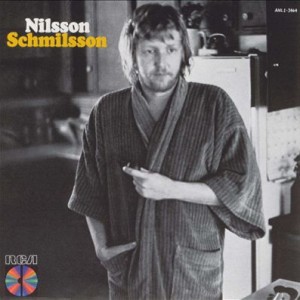
30 october 2015
___________________________________________________
Disquietude
My mother is almost 87. This is a new wrinkle: a couple of times here lately, she’s needed gentle reminders of my name. Sometimes she needs cues to remember me at all. Cues are given only if the situation is right – and she picks right up most times. Other times it’s best to simply let conversations play out without expecting her to remember anything.
Of course, not everyone will experience age-related memory loss or dementia, but the phenomenon seems to be growing and somehow touching more and more lives around me. It’s really got its claws into my family.

Recently, my mother and I were in her dining room, several hands into a game – Mom has been a lifelong card player and still likes to play – and she was beating me at Rummy. It had been quiet for a stretch of time except for the sounds of shuffling, the gentle snaps of cards being placed on the table, and the counting of points.
Eventually, she cleared her throat and asked, “Do you drive a lot for your work?”
“For my work?”
“Yes. Do you drive a lot of places?”
“Not too much,” I replied.
After a half a minute she laid three aces down, then she asked, “Do you call her when you get wherever it is you are going?”
“Do I call who?”
“Your mother?”
I looked up from the cards at her and said, “Do I call my mother when I arrive somewhere?”
“Yes – or your wife or someone. If you are on the road a lot, I’m sure they worry.”
I said, “Oh, yes. Yes, I call. Sometimes. Especially when it’s a long trip. No one should have to feel worried.”
She had not looked up from the game and was really whipping me – something like 400 points to 200. She is still pretty good at cards. For at least a couple minutes I was not her son, but rather, a harmless, friendly stranger in her dining room having his ass handed to him in a Gin game.
“That’s right,” she said. “That’s good.”
Recently I caught up with a dear long-time friend. I got a chance to ask how his mom is doing. It was disconcerting because my friend’s face instantly squinted into a look of loving concern. He is worried about his mom too. And I think, in a general way, he’s worried about the seemingly inevitable loneliness that people can feel when they get older.
Then I thought of old Casals. I thought this story might make us both feel better.
I said to my friend, “You know Pablo Casals? The virtuoso Spanish cellist?”

My friend played a little cello back in school days. He nodded yes, of course. So I said, “You probably know he lived until he was in his late-90s and throughout his life he played cello for several hours each day. Once, when he was around 93 years old, a young interviewer asked, ‘Senor Casals, you are over 90 years old and have the reputation of the greatest cellist who ever lived. Why do you still practice three, four, even five hours a day?’ Casals answered, ‘Because I sense that I am making some progress.’”
Maybe part of why Casals played so much was to thwart loneliness – his cello was his finest companion.
It is impossible to know what will help people to not feel lonely. I feel lucky, and it’s major consolation to me, that my mom doesn’t feel lonely. She has always been her own finest companion.
The natural changes we are experiencing in the amount of daylight we receive cause me uneasiness. That, plus having mothers on my mind, has got me a little wistful. As I get a little older myself, that wistfulness is compounded by a primal sensory agitation that attacks when the season changes from summer to autumn. As a cure, I have reflective music on my mind.
Feeling uneasy? Need to do some thinking? No matter what you need to think about, it is sometimes nice to have a little soundtrack.
The B-sides, respectively, of How Soon Is Now and The Boy with the Thorn in His Side. These are pretty, piano-driven, and contemplative.
Oscillate Wildly & Asleep by The Smiths from Louder Than Bombs (1987 Sire/Rough Trade).
Sometimes knowing that others share your feelings of disquietude can help make you feel not so lonely.
Lonely Sea by the Beach Boys from Surfin’ U.S.A. (1963 Capitol).
This gets me thinking about the seasons, and about my mother.
Suite Number One for Cello by Johann Sebastian Bach – performed by Pablo Casals (1954).
Judy turned me on to this piece recently. So good, so rich, this is a meditative masterpiece – cello and piano working together with lots of minor chords and time-signature shifts.
Quartet for the End of Time (Fifth Movement) by Olivier Messiaen – composed 1940-41.
Clearly influenced by Messiaen, here is another brilliant contemplation.
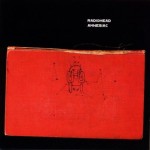
Pyramid Song by Radiohead from Amnesiac (2001 Parlophone).
7 October 2015
_________________________________________________________________________
Squirrel At The Acorn Festival
These are my friends. I am grateful.

Everyone should be so lucky to have such friends. High school graduates of the early/mid-1980s, chums through college years and beyond, most of our relationships date back 35 years – several go back a good deal longer. It had been five years since last we spent time all together, but many of the core group just met up and I was as gleeful as a squirrel at the acorn festival.

We lovingly reminded one another of the people we once were. We reminded ourselves of the people that we imagined we once were.

The pleasure of sharing these memories and imaginations together, in person, is shuddering – more than once as I looked around at the group I was seized with delight, overwhelmed by utter happiness.

Beyond sharing old stories and memories, there is the satisfaction of seeing at first hand the resiliency of this group of extraordinary people in their growth – the people that they have become – because of course, life has hurled its shining joys and passions at each of us individually, but also its punishing losses, illnesses, and cosmic catastrophes.
Music provides me a healing power because one of the things it does is remind me of my friends. I think music is as much a part of our shared memory as anything. Time travel through songs suffices sometimes, but there is no substitute for being able to actually throw your arms around people and feel the smiles radiate and bloom through your whole being.

These are my friends – my brothers and sisters. I am thankful for them.
Sometimes we feel lost, but we will each always find our way – we have each other as guides, compass points, and celestial poles. Here areJarboe, Gira, and the gang covering Blind Faith.
Can’t Find My Way Home by Swans from The Burning World (1989 Uni Records).
Things are always better when my friends are around. They shine like the sun.
Shine On You Crazy Diamond by Pink Floyd, covered beautifully here by Viktor Kraus and Shawn Colvin from Viktor Krauss II (2007 Back Porch/EMI).
“…I can’t see the future, but I know its got big plans for me…all of my old haunts are now haunting me.”
Laughing With A Mouth Of Blood by St. Vincent from Actor (2009 4AD).
Seems Like Old Times by Carmen Lombardo and John Jacob Loeb, performed by Diane Keaton from Annie Hall (1977 MGM).
I Am The Past by Eleanor Friedberger from Personal Record (2013 Merge).
Experience these crystal bowls in person sometime if you can. We did, and it was great!
Crystal Bowls link to Mandala Quartz Crystal Singing Bowl Energy Healing.
4 Sept 2015
__________________________________
Put on a Happy Face
It turns out that Bradford Cox has a really wonderful smile – the infectious kind that makes others smile, too. His experimental art rock band Deerhunter announced an upcoming full-length release – and that is always a reason to put on a happy face.

More often associated with a punk sneer borne of contrarianism and mischievousness, Cox’s un-ironic smile is on full display in the new video. He is cute, comfortable, and flirty – front and center in a bohemian bumpkin’s uniform, (he’s pairing the shirtless look with oversized overalls and Pharrell’s Smokey the Bear/ranger hat,) and sharing the screen with a lively puppy dog and a Yorick-like skull.

Oh, there’s lots of smiling on the front end, paired with Cox’s bluesy, raspy rascal’s intro — “I was born already nailed up to the cross…” — the music is clap-along playful until about three quarters of the way through when it gets gloriously weird and sinister – carefree smiles are traded in for demonic glares.
With its dark lyrical undertones countering the upbeat music, Deerhunter is in the territory staked out by Kurt Weill and his many collaborators, including Bertolt Brecht and Maxwell Anderson. The phrase that describes this trick is andante espressivo, and it is often an appropriate descriptor of Cox’s style. Ira Gershwin , another Weill lyricist, described it as “sound[ing] sweet and simple at times, mysterious and menacing at others.” Check out this fine modern example of andante espressivo – a rocking, funky new tune, called Snakeskin.
Man, I love this band, as well as Cox’s other project Atlas Sound, so it was painful to report that the last Deerhunter record, 2013’s Monomania, was such a disappointment. In fact, I wrote that it was “… a bummer – Bradford Cox is a favorite artist in large part BECAUSE his approach is often willfully provocative and difficult. This record (Monomania) seemed to double back on that difficulty and provocation and fell flat.”

I probably missed the boat on Monomania – it was a critical success. But I felt let down by a favorite artist, and became eager for the band’s next effort. So, I was met with extra gleeful anticipation today when I learned they finally have a new one coming: Fading Frontier, due out 16 October 2015 on 4AD. According to Pitchfork, “…the album … features members of Broadcast and Stereolab …” Both those bands are ENORMOUS favorites of M is for Music, so it is extra extra exciting to learn of their involvement.
Deerhunter’s artist page on the 4AD label’s Web site notes, “Fading Frontier shows that a decade in, Deerhunter has lost none of its intensity. As the group matures … they have grown into the most consistent purveyors of art-rock of their generation.” One hopes that assessment will be accurate, and that they can equal the beautiful intensity of earlier efforts like Microcastle/Weird Era Cont. (2008) and Halcyon Digest (2010).
4AD is responsible for putting out a great many of the songs posted on this page, and though the new Deerhunter track is not what one would think of as representative of 4AD’s ‘sound’, this label is no stranger to funk. Here, for example, is a great track from a great and funky record that is 20 years old:
 Christianity by The Wolfgang Press from Funky Little Demons (1995 4AD).
Christianity by The Wolfgang Press from Funky Little Demons (1995 4AD).
Speaking of glorious collaborations with former Stereolab musicians – here is Cox with Laetitia Sadier in another musical incarnation – what a beauty:
Quick Canal by Atlas Sound from Logos (2009 4AD).
A taste of light and darkness:

Speak Low by Kurt Weill, lyrics by Ogden Nash, performed by the absolutely brilliant, incomparable Lotte Lenye, from the Broadway musical, One Touch of Venus (1948).
There is a live performance film by Director John Albrecht called Deerhunter Sunday Redux (link below). It is a marvelous documentary testimonial to the creative, raw power Cox and Deerhunter can have. It was filmed at the Bourbon Theatre in Lincoln during the band’s 2010 tour. I got to see that concert, and what a wonderful experience it was. It had the perfect effect of making the audience members feel that they were in the exact right place at the exact right time. The opener, Helicopter, is captivating – slow building and patient. We were hearing it, and several other songs that made up Halcyon Digest, months before its release.
A fantastic venue and such a memorable show:
Bradford Cox was seriously injured last December when he was hit by a car in Atlanta. With the new album and an extensive tour of Great Britain and Europe planned in support of Fading Frontier, it is good to know he has recovered.
ENJOY!
17 august 2015
_____________________________________________________
Beach House
Thrilled with anticipation for the new full-length release by one of the most distinctive and innovative American bands in years. Beach House will bring us Depression Cherry, their fifth LP, releasing 28 August 2015 on Sub Pop.

Here is the single and the welcome return of the ravishing voice of Queen Victoria:
Sparks by Beach House.
The song has a pervasive disorienting vibe thrown out from Victoria Legrand’s discordant, simple, and raspy keyboard line – but the song patiently finds a resolute balance and deepened beauty. I love the bravery of amassing so many ideas in one song – and Beach House is among very few acts that are able to actually succeed in wrangling such a variety of ideas – perhaps unbeautiful on their own – into a piece of cogent prettiness.
Sparks brings to mind the invigoration of swimming – or even just being around water. Immersion in water necessarily dulls some senses to allow others to sharpen – think of the bewildering shock and chill of jumping in a cold stream and how intensely the sensations of skin pick it all up – and yet the eyes or ears are unfocussed and a-whooshing.
Happy around water, some of my favorite memories include ponds, lakes, pools, and especially rivers and oceans. I have written in this space about spending entire summers delightedly floating in and exploring the Platte River. Pine Creek is perhaps among the happiest two or three places on earth. Big big love of the Oregon coast and its access to the magnificent Pacific is also documented here in a recent piece called Komorebi.
But water … not so happy for everyone. My mother has been afraid of water most of her life.
She has lots of fears, bless her. Her comfort zone is the size of – well, imagine a little mouse. The mouse has a wee little pen and is writing a letter – a tiny little letter that is going to be sent in a tiny envelope. Imagine our little mouse placing his teensy postage stamp on his tiny envelope. My mother’s comfort zone fits within the stamp’s borders.
Like many of her life tales, the story about the genesis of her terror of water follows a typical path – it begins idyllically and ends fearfully; and it contains common elements – there is family involved, someone unintentionally lets her down; she is affected/tortured by the incident for life.
Her story takes place at Pier Park in Grand Island, Nebraska. There is a lake that occupies several acres on the north end of the park. Ornamental now, it was long ago a recreational swimming pond for the city. It was the mid-1930s, Mom was seven or so, and on a sunny summer day she walked happily to the crowded lake with her outgoing older brother, Lyman, and sister, LaVina – both a bit older, both much beloved. Mom’s voice often catches with pride when talking about her own mom, her dad, and her brother and sister.
At the lake, Mom would mostly stay where she could wade – and could only be persuaded into the pond as long as her brother would stay close by. She would even jump in the deeper area from the banks if Lyman would be there in the water to catch her. And he always was, until one time he got distracted by some friends, and he wasn’t. The episode resolved itself with everyone safely accounted for, and physically unharmed – though some were very much more shaken than others. My mother exited the pond for the day, and she also exited a lifetime of enjoying water.
I think it may have been one of the early stories that she told my dad about herself, and she tells that story still, some eighty years since it happened, with the same unambiguous shudder that she displayed the first time I heard it as a little boy.
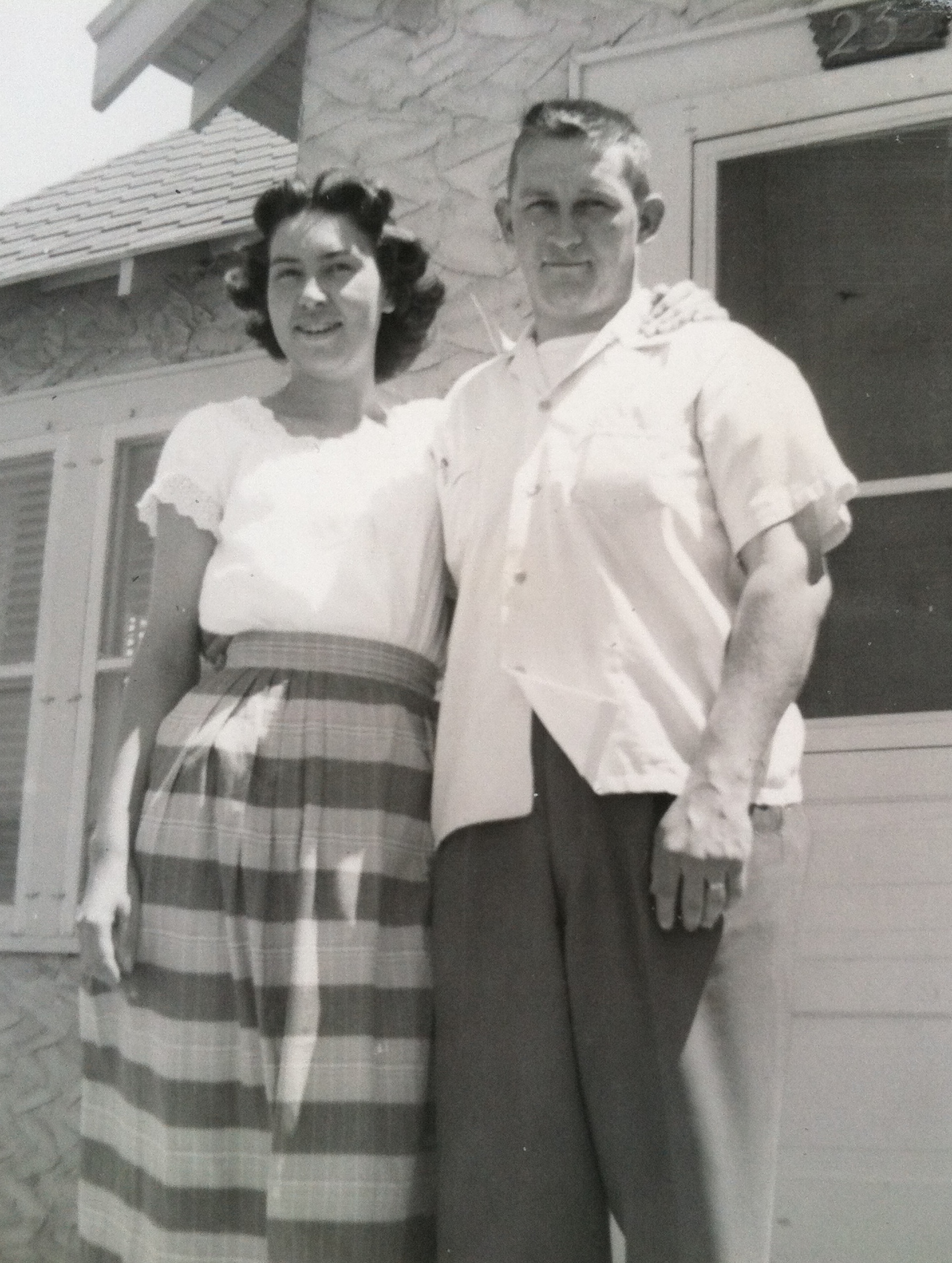
This story has many companion tales. And as I mentioned – they follow a certain set of rules that, when pieced together, help to explain why my mom is the way she is. Cautious.
Whenever she was around, I heard, “Be careful!” roughly as often as I heard my own name. This had some upside – I am sure that I eschewed doing a lot of stupid things throughout my life that would have got me in some real trouble. It had some downside, too – as I am equally certain that I did not do a lot of stupid things throughout my life that would have been very fun.
But water. Man, I love it, and I am sorry that my mom could not. Pier Park was the site of hundreds of happy hours for me as a kid where the city had put together a complex that included a municipal swimming pool next to the lake where my mother took her last splashing leap.
Lucky me – I get to go back to the Oregon coast to spend a week before this summer ends and I am so ready for a dose of the ocean. Like seasons, vacations sometimes crave a soundtrack. To celebrate the water and the summer, here’s a start:
a rocker:
Ocean Size by Jane’s Addiction from Nothing’s Shocking (1988 Warner Bros Records).
a quiet one:
The Ocean by U2 from Boy (1980 Island Records).
a rocker:

The Ocean by Led Zeppelin from Houses of the Holy (1973 Atlantic).
and this one:
Summer by War from Greatest Hits (1976 United Artists Records).
31 july 2015
__________________________________
Sun-warmed Skin
Hazy nights, and more great joy – thoughts after a first listen …
Every season needs a soundtrack, and we may have a new one for the hot days ahead. The sparkling new full-length release by Montreal band No Joy is called More Faithful, and it is as welcome as the first day of a long summer vacation. These songs explore all the dazzling excitements of bright summer days as well as the ravishing, hazy thrills of youthful summer nights.

With fixations on a few memories from young summers – and in the spirit of those days and nights – here are a few time-traveling, summertime stabs at what the new No Joy record sounds and feels like …
— July 1975 – A few neighborhood girls and boys in shorts and tank tops. We meet under the streetlamp at the corner after dusk for kick the can. Someone brings a transistor radio, leans it against the lamppost, and quietly tunes in the Top 40 station.
I run through the dark heat to hide, feeling graceful and light-headed and lucky – twilight a cover for my actual clumsiness. There is the chuck-chuck-chucking of sprinklers – I get too close. I find a good spot, and after hiding, struggle to control my panting. There is the summery sting of cold waterdrops drying on my warm skin. Breathing calms a bit and I notice every emerging star in the still darkening sky.
Someone is looking for me. Time slows. I am happy. I want to be found, and not to be “it”.
This one played on the little transistor under the streetlamp a few times in 1975.
I’m Not In Love by 10cc from The Original Soundtrack (1975 Mercury).
— Summers of 1985, 86, 87 – Late years of the cold war. We swim in the river or in the lake, turning brown as cigars.
Still in swimming clothes, we lay sleepily on pillows on the soft carpeted floor of the big basement – dark, dry, cool. We watch MTV or classic TV reruns – Bewitched, Jeannie, Don Knotts as Barney Fife.
The surprising, deep heat of Judy’s sun-warmed skin – her bare, copper shoulders – her legs. Time slows. I am happy. Like dreams coming true.
From the mid-80s, this embodies timelessly crazy yearning, intensely fevered passion.

“It” by Prince from Sign ‘O’ The Times (1987 Paisley Park/Warner Bros Records).
— In Chicago – late-June 1992. It’s been over 90 degrees and the day is ending – now it’s just barely dark – the streetlights have all blinked on.
We are half-full of beer, walking to the Cabaret Metro to see Pale Saints. From the sidewalks, slow waves of heat arise – like stove burners that have recently been shut off. Inside the theatre it is perfect and disorienting – loud and cool. Time slows. I am happy. Guitars sound like they are coming apart and we have the sensation of being at precisely the right place at the exact right time.
Cool, cool, cool.

True Coming Dream by Pale Saints from The Comforts of Madness (1990 4AD).
Ordeal by Pale Saints from In Ribbons (1992 4AD)
The new No Joy record screams “Summer!” They construct sonic walls that feature muscular, rhythmic bricks held together with a sweet mortar of swirling fuzz. This one packs a lot into 2 minutes, and has some wicked time signature shifts that will make your body buzz.

Hollywood Teeth by No Joy from More Faithful (releasing 9 June 2015 on Mexican Summer).
3 june 2015

For more on No Joy, scroll down for the post Great Joy, fromNovember 2013.
_____________________________________________________________
Fixing to Pounce
There is a landmark birthday looming, and for at least a couple of years I have regularly sprinkled in the phrase “creeping up on fifty” when referring to myself. Now, I am fixing to pounce.

I think about age a lot, and not only as a result of myself, (and many of my friends,) having half-century birthdays this year. There are good and bad things about aging. Downside includes slower metabolism, and my knees and hips get angry when I run or play basketball. On the upside, I am slow and rickety, creaky enough that I no longer need to wear a pesky bell on my collar while prowling around the yard.
Mary, a woman who has become as much a sister to me as a dear friend, is writing a book about aging. She has successfully written books on a number of diverse subjects: environmental stewardship; the experiences of immigrants in the United States; the importance of family. She started a national conversation about the complex, changing lives and societal pressures placed upon girls and young women with her book, Reviving Ophelia.
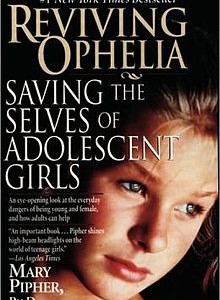
She is inspiring. If something interests Mary, she writes an essay, or an op-ed piece, or a good book about it, so I expect her book on aging will be terrific.
Mary and I were taking a walk recently and she was telling me about the interviews she’s been conducting for her book. As I understand it, she is asking mainly retired people to share their thoughts on aging, and some of the questions address the fears that some have of growing old. Not unexpectedly, high on the answer list were the loss of mental and physical capacities – frailty, pain, and dementia. Loneliness too.
My immediate answer would be that I fear irrelevancy.
This pretty simple quote from Mike Sager in a recent issue of Esquire really struck me.
“Aging is an enemy in some ways but a friend in others, and people who rely on their minds should get better and smarter with age – to a point. You don’t start understanding life well until you’re forty.”
I am a wickedly late bloomer in some ways, but in others ways I am old, old, old; and boy, do I rely on my mind.
I often use this space to do just that by reflecting on music as a form of time travel. So, I decided to look back at some of the music that has been most important to me, and most formative, since I was forty, and ostensibly started to understand life well. Here are some quick thoughts on records and artists from the last ten years and why they have been so important to me. Also – some links to a few of their fantastic songs.
By no means a comprehensive selection, I feel the artists featured below deserve more attention. Hopefully you will find something here that is new and loveable.
—Sincerity, ferocity, and commitment can come together to create beauty. Accept drama in art, but not in your life.
Neko Case – Fox Confessor Brings the Flood (2006 ANTI-Records).
Fox Confessor Brings The Flood
—Lots of great, exciting ideas can fit into a compact space. Accept a little drama in your life, as well as in art.

Violens – True (2012 Slumberland Records).
—Also, be available to chill.

Destroyer – Kaputt (2011 Merge Records).
—It is okay to hurt, to be sentimental, and to swoon.
Hammock – Raising Your Voice… Trying to Stop an Echo (2006 Darla Records).
Raising Your Voice Trying to Stop an Echo
—Grow up.
Scritti Politti – White Bread Black Beer (2006 Rough Trade Records).
—Actually, don’t worry too much about growing up. Things mostly take care of themselves.
American Analog Set – Know By Heart (Tiger Style Records).
19 may 2015
________________________________________________________________
Algiers / Oppressors Beware

Precious little approaches the elation that you feel when you feel that you fit in – when you sense that you belong – because there is almost nothing so crushing as the opposite – that sense of not feeling a part of something. It is oppressing. You figure it out (or you don’t), as you get a little older – but Jesus, it is the worst when you’re a kid and you feel no sense of belonging or community.
That is one of the most important things that music can do – to make us feel either broadly connected, or to act as an agent of deep and private conspiratorial communication. When you’re a kid, and you are not relating with, say, the other girls on the gymnastics team, or you really have nothing in common with the guys in the church youth group, but you find a couple of kids that love Pink Floyd or Talking Heads – thank the gods – there’s elation. After all, the guys who ‘get’Psycho Killer will also probably ‘get’ you, and to throw off that leaden blanket of oppression, you need connections and community.
At any age there is still a tingle to be had from the connections made with music. There’s a special thrill of recognition you can get from hearing something that is new to you, but with which you identify.
Brand new to me, the band Algiers is thrilling; the sound is brash, daring, and full of ideas. From what I pick up in the three songs I have been able to hear, they create a carnival ride mixture of insistent industrial rock and stirring gospel. (I am grateful to have been exposed to Algiers by the NPR podcast All Songs Considered.)
The band is a trio that formed in Atlanta, Georgia, (the members now base in London and New York,) and they appear to be setting up a thematic community. Algiers is building a community rooted in investigating and rebelling against the intensely complicated issues of race in America’s Deep South, and then spreading out from there. (Issues that are now continuously playing out all over the world, and currently here in the United States, are especially resonant in Baltimore, Detroit, NYC, and St. Louis.)
They are an overtly political group and the issues explored extend well beyond their roots. They are interested in addressing oppression in pretty much all of its forms: colonial, cultural, racial, gender, and sexual oppression, etc. Visit their Web site, algierstheband, to scroll through a cornucopia of fabulous photographs, quotes, and links to essays and speeches that celebrate icons and iconoclasts. It is a treasure of subversion – a place where Sara Vaughan lives down the road from Genesis P-Orridge and Blixa Bargeld, and just around the way from Sun Ra, Nelson Mandela, and Malcolm X.
Extremely referential, the band shines a broad, bright light on diverse artists and filmmakers as different as Pier Paolo Pasolini and John Waters and places them in the similar context of community-building fighters of oppression. Jessie Owens, Jackie Robinson, and Cassius Clay are celebrated as revolutionaries alongside Coltrane, Baldwin, Hughes, and Camus.
How do they do it with their music? Algiers taps into the rebellion and protest that has been logged in the music of rap and soul, and of punk and post punk. These genres have created an incredibly rich historical inventory of abuses suffered and met. Unfortunately, there are a number of people who, for whatever reasons, simply won’t listen to rap, hip hop, or punk, but who would be fascinated by the political, social, and cultural issues that these art forms raise up and challenge.
It’s a lot to put on them, but maybe this is a band that can break through some of that prejudice. Though never stuffy, with Algiers, there is a gravity to the proceedings right up front, and a straightforward intellectual formality in the presentation. Maybe they will provide a more potent, effective, and toothsome way to engage people who would be interested in the meaningful social and cultural sides of rap, hip hop, or punk but refuse to cross the bridge to enjoy listening to them.
And please don’t let politics cause a sticking point for enjoying the music. The political lyrics create another dynamic layer, but there’s more than ample power in the tunes themselves to satisfy.
Link below to songs from Algiers. Their self-titled debut comes out on 2 June 2015 on Matador Records.
Fierce:
The guitar sounds like flames feel:
The electronic ambient stretch in this is wicked:
There are great examples of mixing other musical styles with industrial rock – here, it’s jazz and lounge.

The Man With the Golden Arm by Barry Adamson, from his brilliant concept album Moss Side Story (1989 Mute Records).
And then, there’s this guy.
C’est la Vie performed by Charles Boyer in the film Algiers (1938).
For more on the band, this is an enlightening Interview with Algiers in ‘The Quietus’.
27 april 2015
____________________________________________________________________
Komorebi
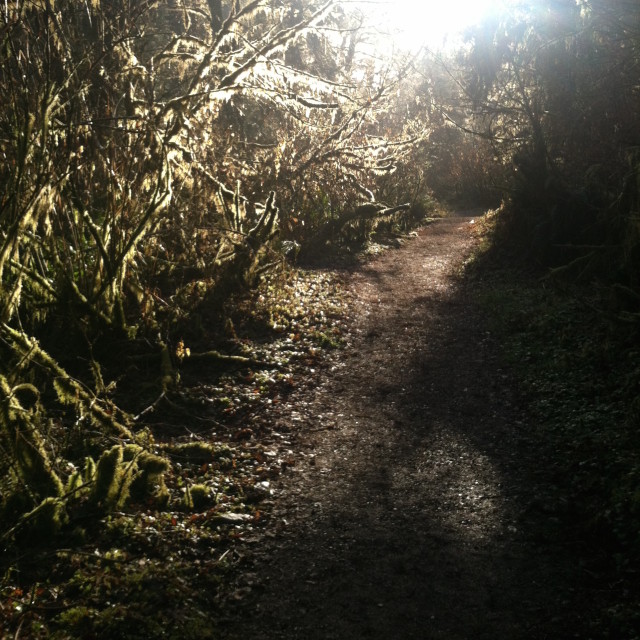
My friend Cathy taught me that the Japanese have a wonderfully descriptive word for the way that sunlight filters through the leaves of trees: komorebi. It is a phenomenon of nearly crippling beauty that I have been fortunate to experience on some of the most exquisite hikes the planet has to offer.
If you crave mind-bending walks in nature, it is difficult to imagine more satisfying hours than the ones you may spend on the densely forested Pacific capes of Oregon’s coast, including Capes Perpetua, Lookout, Kiwanda, and Meares.

In both their majesty and minutia, these places present a primeval aspect. One moment looking up you enjoy the spray of a towering waterfall while feeling the undeniably and essentially grave powers of earth. In the next moment looking down you may be forced to squint to see clearly a tiny, ornate pillow of moss that appears to be waiting for a baby bunny’s head to gently occupy it.
Regarding its provisions to protect land and to make it accessible, Oregon is a very enlightened state. As one example, Oregon’s beachfront property is safeguarded from private ownership, so it features remarkable open public access to all of its coastal land
Think that’s not a treat? Visit California. As a comparison, Oregon’s neighbor to the south made big headlines recently when seven and a half miles of beachfront were protected from private development – (and bravo for California – that’s great – some of that land will even be made accessible to the public.)
Perhaps the best hike to enjoy the unrestricted luxury of zero development is on Bayocean Spit, where you can walk for flat miles along Tillamook Bay. The bay offers tree-lined, lake-like calm where one can explore mudflats, coves, and swamps. The loop takes hikers through scattered driftwood and sandy shrub- and scrubland dunes to reach the ocean side. And there it is – the glorious ocean – where, while the tide is out, you can walk and walk and walk.

When I am visiting I often think to myself, “Oregon, you genius.” You can dial it back there. It is an inspirational place.
Oregon inspired many of the songs on the brilliant new record by Sufjan Stevens, titled Carrie & Lowell. He has proven himself a masterful chronicler of places, (states in particular, with Michigan in 2003, and Illinois in 2005,) and the way that places, people, and memories can comingle to transport us in time. I think it’s safe to guess that this record was never going to be called Oregon, though. He is up to something a bit different here. The record is named for his mother and stepfather, and on it, Sufjan Stevens takes the modern musical folk/pop art form beyond the confessional and into the sublime.
When he was a baby, his mom felt that she was unable to care for Sufjan and his family. She split and was not much around through his childhood and entire life. She reappeared in his world when she remarried, and Sufjan spent the summers in Oregon with Carrie and her new husband, Lowell, from ages five through eight. Stevens told Pitchfork, “…she suffered from schizophrenia and depression. She had bipolar disorder and she was an alcoholic. She did drugs, had substance abuse problems. She really suffered, for whatever reason.” His mother’s absence, her presence, and her suffering, all work together to inform the songs on Carrie and Lowell, and sometimes painfully reveal the way they have influenced Stevens’ relationships, decisions, and life.
Carrie died in 2012, and Stevens’ music here is a reminder that much of art is really an attempt to make connections; to communicate to others through art that: This means something to me, something deeply important – maybe it is important to you, too.

What is important on the songs that make up Carrie & Lowell is catharsis and reconciliation. Reflecting on his mother, her life, death, and its effects on him, here is a remarkable quote of summary forgiveness, (again, from Pitchfork): “I went through all the stages of bereavement. But I say make amends while you can: Take every opportunity to reconcile with those you love or those who’ve hurt you. It was in our best interest for our mother to abandon us. God bless her for doing that and knowing what she wasn’t capable of.”
There is a touch of musical komorebi in these songs – sometimes brightly flashing, sometimes hazily muted – their thoughts and sounds reach us like sunlight playing through the leaves of trees. There is something universal here, too. We are given the observations and events of another’s life that cast shine and shadow on our own.
Links to Sufjan Stevens incredible folk and ambient songs from Carrie & Lowell (2015 Asthmatic Kitty):

Confusion, fear, and forgiveness in the opener.
“The landscape changed my point of view …”
“Everything I see returns to you somehow…”
Poetic folk fading into ambience on the closer.
16 april 2015
_______________________________________________________________
The Worship of Cat Music

My buddy Ross sent me a fascinating National Geographic article on cat music. It is no surprise that most animals don’t hear or experience music the same way that people do, but research is demonstrating that cats respond positively to very specific and carefully tailored music – “… songs [that] are meant for felines, whose vocalizations have more sliding qualities and pitch changes than do human speech or music. The tempos for their meow mix includes purring and the sucking sound of kittens nursing…” (Embedded SoundCloud links that allow you to listen to short samples of cat music can be found in the National Geographic article linked above.)
I am no scientist, but I conducted an unfussy version of research in the old home laboratory. I enlisted our whiskery geniuses and played some cat music for Otto and Daisy – a pair of super-spoiled, fifteen year old, overgrown barn kittens. My study was revealing. Daisy seemed to find the cat music very pleasant – she reacted like she was being petted – her little ears did a dance on her head. Otto was less demonstrative, mostly vacant of affect. Both cats sniffed at the speaker and worked their cheeks and mouths similarly. Both cats’ eyes seemed to flutter in a dreamy sort of way that made me think that something primal was being evoked.


I love these furry little clowns, and because music means so much to me, I get a kick out of the idea that my cats can find pleasure and meaning in music, too. Of course, some music and some performers mean more to me than others, and I guess that is why I would say that I have my own versions of cat music. Much of it was produced and distributed on the 4AD record label in the 1980s and 90s. Most especially evocative is the primal cat music of Cocteau Twins. Their sounds often make my eyes flutter dreamily, they almost always have me purring, and they consistently transport me in time. The band’s music is great for nearly any occasion, but it’s a particular treat when you can listen reflectively, as you can on a cool and rainy Nebraska day like this one.
Incidentally, friend Ross, the cat music article-sender, also happens to be a Cocteau Twins enthusiast. He recently laid down the gauntlet in this note:
“i don’t think anyone could win, but i think a case would have to be made that this is not the greatest song of all time. i dont believe in a top five but i do believe in a number one, and this is it.”
The Spangle Maker from The Spangle Maker EP (1984 4AD).
Such is the swagger and ferocity the band inspires in its true fans. We are worshipful.
Here are my top five. Or seven. OK, nine.
They were pretty muscular in the early recordings – propulsive and insistent:
Dear Heart from Garlands (1982 4AD).
Sugar Hiccup from Sunburst and Snowblind EP (1983 4AD).
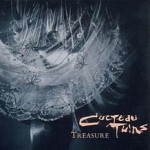
Their third album is masterpiece and warrants two songs:
Aloysius and Otterley from Treasure (1984 4AD).

Haunting:
She Will Destroy You from The Moon and the Melodies (1986 4AD).
Lazy Calm from Victorialand (1986 4AD).
Carolyn’s Fingers from Blue Bell Knoll (1988 4AD).
Road, River and Rail from Heaven or Las Vegas (1990 4AD).
Essence from Four Calendar Café (1993 Capitol).
24 march 2015
____________________________________________________
Beyond Belief
Elvis Costello Solo – Rococo Theatre – Lincoln, Nebraska – 3 March 2015
Innovative, bold, massive talent – a skillful and charming performer – a maestro of relevancy. Classic.

And now a few words about myself.
General condition: anxious. Neck rigid, and shoulders up around the ears. If you took a quarter and lobbed it at me it would bounce off. You could smash a wooden chair by swinging it into my body. Perhaps someone should.
It has been this way for years. I will not relax. Tense practically all the time. For ages I thought it was behavior – I thought that relaxed was essentially a way to be or not to be. Something I could choose. Now I don’t think that. I think it is pathology. No more avoidable, nor shameful, nor blameworthy, than having, say, a serious genetic medical condition – hypertension, or elevated cholesterol. You don’t want it, necessarily, but there it is.
Though, unlike blood pressure issues, my pathological unrelaxedness bleeds over into personal relationships – a fair amount in some cases – and I am, very often, no goddamn picnic to be around.
Once in a while music can treat my condition. Like diet and exercise. Like taking a pill. Even live music can treat my condition. For example, a recital hall swirling with Ravel or Bach. Even as much as I may look forward to a rock and roll show, I don’t anticipate that it will relax me.
Scores of articles and over a dozen books have been written about Elvis Costello. That’s a lot of words devoted to a fellow who (famously) dislikes writing about music and music criticism. So this will be short.
Last night Elvis Costello shattered my expectations. I had seen him before and I am a pretty big fan, (yes, I have the middle-career and recent stuff, too,) so I knew I was going to enjoy the show. But guess what, I also relaxed. It was an inspirational and truly unforgettable evening. My highest praise: relaxing beyond belief. Thank you.

He has so many great songs it is difficult to choose. Try these:
Beyond Belief from Imperial Bedroom (1982 Columbia).
Brilliant Mistake from King of America (1986 Columbia).
Come the Mean Times with The Roots from Wise Up Ghost (2013 Blue Note).
So Like Candy from Mighty Like a Rose (1991 Warner Brothers).
Not for the fainthearted:
I Want You from Blood and Chocolate (1986 Columbia).
String Quartet in F, 2nd Movement by Maurice Ravel and performed by Hagen Quartet.
(For an excellent overview of his career and a fascinating profile of Elvis Costello, I suggest thisNew Yorker article by Nick Paumgarten. It is really well done. However, consider skipping it unless you are prepared to learn about or revisit some of his early-career, wince-inducing, caddish, and idiotic episodes.)
4 March 2015
___________________________________________________________________
The Seduction and Romance of Faulty Memory, Part Three: The Indigo Bunting
Maybe this also happens to you. Intense images rise up and swirl in your mind and you can see parts of a day from your past with almost frightening clarity. Scents can do that. Music does that, too. Poems.
I was thinking of some poems about romances and relationships as Valentine’s Day approaches. I thought of Browning and Shakespeare – and a youthful, sexy poem by Georgia Robertson. And then this scene snaps up in my mind and memory, sharp and scary:
26 August 1983 – Hastings College, Hastings, Nebraska. Move-in weekend, freshman year.
The dorm room is tiny, cramped. A couple of desks and beds with a few scattered items working weakly to personalize the place – posters, photos, a package of cigarettes. Space was tight. Still, the cell had a liberating effect as I was away from home and in almost complete control of my own time.

I knew a few people at the school, but not many. I moved in on a Thursday, (classes would start the following Monday,) and I hadn’t set foot in a college classroom yet as a student.

During the first day of my first year of college, I used some of my time in that tiny room to read a poem in The New Yorker – The Indigo Bunting, by Robert Bly.
I am changed by the poem. Thinking of it recently, in the context of Valentine’s Day, conjured vivid memories from that long ago Friday. I had the out-of-body phenomenon of looking down upon my younger self in that Hastings College dorm room.
I am alone and look younger than 18. I am sitting on the floor, reading The Indigo Bunting for the first time. There is a record rotating on the turntable. Bright sunshine is coming in the windows from a hot, high afternoon sun. I have a very dumb proto-flop haircut, a ridiculous earring, and stupid clothes – penny loafers, green peg leg pants, a striped, short-sleeved button up. I am tan and a bit chubby.
I smoke cigarettes like mad, and with each of the thirty or more that I smoke each day, I have a correspondingly wispy idea about what trajectory I want my life to take.
One of these songs may have been playing on the stereo:
Zebra Club by The Bongos from Drums Along the Hudson (1982 PVC Records).

I Go to Sleep by The Pretenders from Pretenders II (1981 Sire).
Love at First Sight by XTC from Black Sea (1980 Virgin Records).
I watch myself finish reading the poem. I stand, remove the needle from the record, and in the sunny, silent room, I read the poem again, while standing.
That evening, the college hosted an outdoor, opening-week party. Twilight in hot late summer – music and dancing – even though there was little relief from the heat of a day that had been in the high-nineties, kids were dancing like crazy. The party was set on a wide bridge that crossed and separated a little stream and Heartwell Pond, north of the campus in Heartwell Park. The tree-filled park forms an overgrown boulevard with tidy, pretty homes facing it from all sides – set back from and lining the surrounding, curvilinear streets.
I was a terrific snob and snot about what music was good and what was bad, and I thought the party music was garbage. Hit-machine bands with four-letter-word names like Asia, Toto, and Taco. You can be sure that I made anyone who gave me five seconds absolutely miserable with my opinions about what the DJ should be spinning. Mostly, everyone else was having a great time, but I could not understand how. Not with the terrible music.
Somehow, someone blessedly persuaded the DJ that in between the likes of Kajagoogoo and Michael Jackson, he should play Dance This Mess Around by The B-52s from The B-52s (1979 Warner Bros). Two hundred kids exited the dance floor. Not me. I danced like a kook, pretty much alone. In hindsight, that incident pretty quickly and more or less permanently set the tone for my college days.
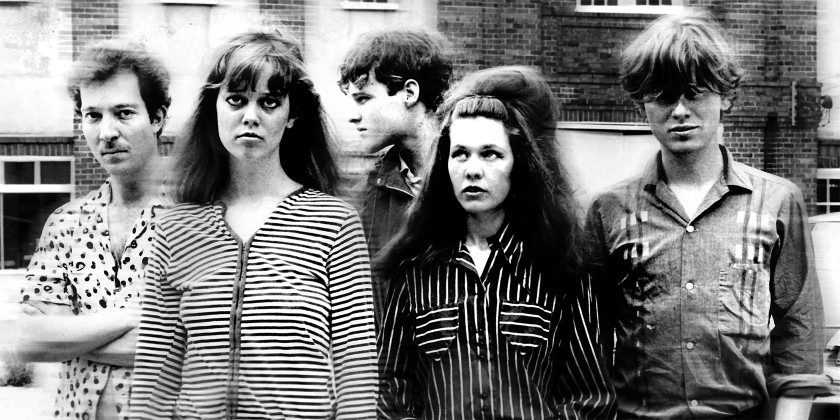
Walking back to my room, I thought of the poem again, and read it when I returned. I would not have had the words for it, but I resolved then to find the people there that could help me harness the kind of blazing power that Robert Bly conjured from his quiet, quite beautiful metaphor: a migrating bird.
In the spring of 1987, the poet, Dwight Marsh, gave me a collection of Robert Bly’s poems as a college graduation gift. He had been my professor for a number of classes, but he was very much more than an English teacher to me. We spent a fair amount of time together outside of the classroom – he led me in directed studies, we performed together in plays, and we even did an event together just the two of us – reading works of our own writing. The gift was curious – I am sure I never discussed The Indigo Bunting with Dr. Marsh, or how much Bly’s poem meant to me. I didn’t know it myself at the time.
But there it was, The Indigo Bunting, unexpectedly looking up at me from the page during the final day of my undergraduate career – as it had on the first. Here it is again today.

Old Friends/Bookends by Simon and Garfunkel from Bookends (1968 Columbia).
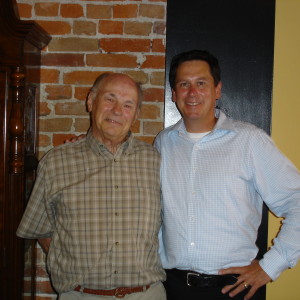
12 February 2015
________________________________________________________________
Songs for Sunshine (and Superlatives)
Belle and Sebastian formed as a college project in Glasgow nearly twenty years ago. They tended from the start to be divisive.

Derided by some for being overly precious and twee, many others hailed them for their sensitive, searching approach, and their unusually sentimental discernment.
They had already released three records by the autumn of 1998 and I had not yet heard them. Friends were fans, and much of their critical attention was marvelous, but they hadn’t seemed up my alley.
My friend Amy encouraged me to give them a try. After all, they LOVED the same bands I LOVED, sharing especially the visual, emotional, and musical sensibility of The Smiths. They LOVED and openly imitated Felt.
I checked them out…

…and instantly became drawn swirling into their unapologetically nostalgic orbit. It turns out that what was being mistaken for calculation and affect was really just their great cleverness and sincere collective introspection. It was honesty and youth that made them sound they way they did – made them BE the way they were. Time has proved that.
There haven’t been a half dozen other bands that have meant as much to me as Belle and Sebastian have. Since the late-1990s they’ve combined their most original style and devotionally stylistic homages to craft the musical equivalents of bowlfuls of shimmering pearls. Along with Stereolab they have been the most consistently satisfying band of my adult life.

For this fan, it has been like a long sunless stretch since their last release in 2010, Write About Love. The seven-piece band released its tenth album this week, entitled Girls in Peacetime Want to Dance. It is Great.

The preciousness polarization continues, but whatever side you may fall onto, one thing is difficult to argue: this band has not compromised. They have done things their own way, proven to be extremely durable, and have earned steady and enthusiastic support. It’s an odd phenomenon – whatever it was that folks found appealing about them as college kids remains appealing now.

To be sure, Belle and Sebastian’s sound is evolving, but the band’s vibe and much of their music are still drenched in 1960s folk and pop. Their lyrical luster and straightforward artistry provides the experience of music as a method of traveling in time. For example, the wicked wit and intense introspection of the words can transport me to college days. Their study of musical and visual influences manifests a whole art that is somehow both original AND saturated in heartfelt tribute.
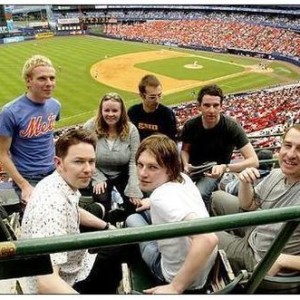
Belle and Sebastian was not, and is not, like any other group. Except, they kind of are… That may explain their appeal. There is and has always been something familiar about them. But, that something avoids the slippery path of derivative-ness. The sound is always unmistakably and originally Belle and Sebastian. They have alloyed freshness with maturity. They are very long on style and pretty unconcerned with fashion. When they have spoken about their music, it has always been from a place that is genuinely surprised and thrilled about how well the product eventually turned out.
They provide lots of angles and come at listeners in so many ways – here are some horns, there are some flutes – there’s rock over here, there is Latin jazz over here, even a bit of disco thrown in over there. And they are often SUPER FUNNY. The product – well, I am always thrilled, too, and I never seem to be able to find enough superlatives.
–Consider this a perfect representation of the band. You cannot tell what decade this is from.
Ease Your Feet in the Sea by Belle and Sebastian from The Boy With the Arab Strap (1998 Matador).
–As I listened to this song performed live in Minneapolis in 2006 – standing next to Judy – I was so happy – possibly as happy as I have ever been. I remember thinking that it would be okay to die when the song was over. I lived.
Song For Sunshine by Belle and Sebastian from The Life Pursuit (2006 Matador).
–Their introspection is exquisite and Stuart Murdoch is so undistracted in his storytelling that this is like inanimate sand and water washing and forming a gem in an oyster shell.
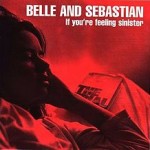
Judy and the Dream of Horses by Belle and Sebastian from If You’re Feeling Sinister (1996 Jeepster).
–This is live, pretty long, and really rough (in places actually a bit of a mess!) – but I love the commitment and the almost beatnik mix of jazzy guitar, bongos, and tambourine. Stevie Jackson’s energy is so great – he even sort of raps – but the overall performance is more like one from a rock star combined with a beat poet.
Perfect Couples performed live by Belle and Sebastian from Girls in Peacetime Want to Dance (2015 Matador).
–Hugely influenced by artists as diverse as Robin Guthrie, Morrissey, Carole King, and The Beatles, perhaps no artist influenced Belle and Sebastian more than Lawrence. The first song features Elizabeth Fraser and it is miraculous.
Primitive Painters by Felt from Ignite the Seven Cannons (1985 Cherry Red).
–And another.
Dismantled King is off the Throne by Felt from The Strange Idols Pattern and Other Short Stories (1984 Cherry Red).
Belle and Sebastian’s early lineup and by their first, second, and third LPs were captivating. It’s worth mentioning two key individuals from that time who are no longer in the band. First Stuart David, co-founder of Belle and Sebastian, left in 1998-99 to form the brilliant Looper. And since 2002, Isobel Campbell has carved for herself a wonderful and varied career that includes both solo and collaborative work, most notably with her band The Gentle Waves, and on her albums with singer Mark Lanegan, formerly of Screaming Trees and Queens of the Stone Age. (More songs linked below…)
Pretty Things by The Gentle Waves from Swansong for You (2000 Jeepster).

Come On Over (Turn Me On) by Isobel Campbell and Mark Lanegan from Sunday at Devil Dirt (2008 V2 Records).
Modem Song by Looper from The Geometrid (2000 Sub Pop).
23 jan 2015
________________________________________________
Thoughts After a First Listen
I bought a new piece of music today. It is GREAT.
My background and depth of experience with classic Soul and R & B are admittedly limited. We don’t own a lot. A little Al Green and Barry White, some Curtis Mayfield and Stevie Wonder, a fair amount of Prince.
Of course, when I was a little kid, there was an education to be had directly from the radio. In the 1970s, Top Forty stations provided lots of wonderful crossover songs, and I was surely influenced by artists like Earth, Wind, & Fire, Diana Ross, and TheSpinners.
Some of it was pure weird fun, (Love Train by the O’Jays,) or straight up sexy, (Let’s Get it On by Marvin Gaye,) or both, (Brick House by The Commodores).
Some of it was overtly political, (War by Edwin Starr, or Ball of Confusion by The Temptations).
Some of the social messages were subtler. Like this one, the songs from Innervisions are incredibly durable, and the songwriting among the best in the history of the United States of America.
Too High by Stevie Wonder from Innervisions (1973 Motown).
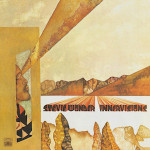
Some of it was… well… some of it, though every ounce as soulful, every trace as rhythmic, every bit as bluesy…was disco.
Don’t Leave Me This Way by Thelma Houston from Any Way You Like It (1976 Motown).

This is the vintage of music that informed my ear as I learned to listen to hip-hop and rap music. It still informs my ear for what Soul and R &B has evolved into with acts like Beyoncé, Drake, Kendrick Lamar, Frank Ocean, and Justin Timberlake.
Unlike books and poems, records and their songs often have multiple chances make impressions – to unfold artistically before us. I can’t even guess how many times I have literally been impressed by Kind of Blue by Miles Davis, or Dark Side of the Moon by Pink Floyd, or Kid A by Radiohead. But I can tell you precisely how many times I have listened to Black Messiah by D’Angelo and The Vanguard. Once. I bought it today and it is GREAT.
I loved this record after just one spin, and it is fun to be able to put these thoughts down without too much background on the release, nor with too many listens stacked up to dilute my first impression.

Black Messiah (2014 RCA) – disclosure of a few things I know:
-I had heard bits of a couple of songs from it on satellite radio and thought, “Huh, this sounds like Prince.”
-It was supposed to come out in 2015 but got an early release. D’Angelo felt that the sentiment and message of this record would have much resonance amid the topical issues in the aftermath of notorious police killings in Ferguson, MO and NYC. After one listen I cannot claim to have picked up on much of that.
–D’Angelo’s had a long “absence” and this record is getting lots of acclaim. Actually, critics are flipping out. I can already sense why that is.
-He has help from a ton of BIG names like Questlove and Q-Tip.
So, my first impressions hearing the record as a whole were these: Black Messiah is fantastic and it sounds brand new. There are time signature and percussion elements that remind me of Tom Waits, and there is a lot of guitar-based music here that is reminiscent of our old friend Shuggie Otis.
Aht Uh Mi Hed by Shuggie Otis from Inspiration Information (1974 Epic Records).

But Black Messiah is also a little time machine. Like it’s brethren from the 1970s, (and VERY much like the records of Prince!!) it is funky and fun, straight up sexy, and sonically weird and experimental. (I will have to make lots of additional listens to get the social and political messages that are promised.)
The mid point: Till It’s Done (Tutu)
The closer: Another Life

Afterthought:
It is super cold and dingy here in early-January. Angry-making cold. Driving down South Street in Lincoln today, I watched a guy step out his front door and chuck a little Xmas tree onto his porch. You know, one of those little three footers.
This three-second play of disposal provided me a nice metaphor for my post-holiday. Especially as I glanced back at some of the end-of-year lists I indulged in.
The tree, now dry and spindly, may once have carried some meaning and enrichment to the fellow. At least it helped to dress up his home and his year a bit. Now it sports an embarrassing droop and is shedding needles on the front porch. It is waiting for its next useful incarnation as mulch.
Some art is rooted and lasting – some art, while no less valid, is decorative, unrooted, and after a while, droops and sheds.
This here D’Angelo record is getting added retroactively to my year-end list for 2014.
8 Jan 2015
______________________________________
Favorites 2014
In past years I rolled my eyes at you when you said how great music sounds through headphones. I was wrong to do that. I am sorry.
In addition to converting to headphones, music still filled the air in our house this year. Judy has been learning guitar. That has been fun. For some reason there was somewhat less new music around our place to check out. Still, there are a few standouts, and even a few groups that we found so impressive that they lured us out after dark to hear them live.
Real Estate – Atlas (2014 Domino).

There is an unforced earnestness to each beat, note, and syllable that makes this collection of songs feel not only brand new, but also somehow like an album that’s been around a while. This is the best of 2014 and is Real Estate’s strongest LP. Along with the rest of their catalogue I will continue to enjoy it for years. All three of the band’s records have a wistful summery feeling that I think a lot of people pick up on and dig. What it is: That feeling that something wonderful is happening, and you have not processed how important it will be to you in the future. You know that something wonderful is going to end – soon – and that the freedom that comes with that something wonderful is evaporating.
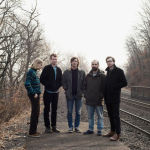
I never read a better description of the record’s (and the band’s current) summertime vibe than this one by Pitchfork’s Jason Greene: “The once-ideal pool party band … has turned to soundtracking the cleanup: Everyone’s gone, the sky’s threatening rain, there are cigarette butts floating in the pool, and we’ve all gotta work tomorrow.”
This is music to play as you head happily home or toward a loved one you are eager to see. A song and a sentiment so simple and so beautiful – this makes me shake my head in wonder:
Horizon by Real Estate.
Dum Dum Girls – Too True (2014 Sub Pop Records).

Dee Dee Penny is the radiant face and the main songwriter of the Dum Dum Girls. Combining an assured and silky delivery with her searching lyrics she often brings to mind a range of singers from the girl groups of the 60s. Few acts can claim the successful synthesis of musical and personal styles created by the band. Together they wed great, introspective pop songs with a cultivated and sincerely detached, great, dark collective image. The comportment and the look of the band are consistently darker than the actual music which often has more in common with straightforward, skilled, cool rock-and-roll than any goth-y post punk. Dum Dum Girls never disappoint, and I knew right away that this record with its short, to-the-point songs and driving pop rock would be one of my favorites of the year.
Phenomenal pop songs, these were highlights of the band’s terrific live set at The Waiting Room in Omaha in October.
Rimbaud Eyes by Dum Dum Girls.
Girls Intuition by Dum Dum Girls.
St. Vincent – St. Vincent (2014 Loma Vista).

Is anyone else challenging the ideas and limits of rock music as successfully as Annie Clark? The new persona is a trope. Like David Bowie’s creations Aladdin Sane and Ziggy Stardust, she’s playing a far out, (and, one supposes, a temporary,) character. Aside from her current incarnation as the transfixing silver-haired, vinyl-clad high priestess of white spirits, there is her jarring music.
She is a fearless and often brilliant experimenter, and has always zigged when one expected that she’d zag: unexpectedly slowing things down a beat, going a half note sharp here or there, blasting trumpets when you expect a gentle flute. There is so much to be impressed by – in what seems on the surface to be over-the-top there is an agonizing restraint.
She is astonishing live, and KILLED it at Omaha’s Sokol Hall in April. These songs are from a concert in Berlin earlier this year. They are a trifle rough, but worth it to catch her mystifying presence in performance.
I Prefer Your Love by St. Vincent.
Huey Newton by St. Vincent.
Also loved:
Beverly – Careers (2014 Kanine Records).
This band provides the low-glamor, tossed-off fun of magic marker ‘tattoos’. It is in super-heavy rotation at our house. This music is huggable.
Honey Do by Beverly.
Caribou – Our Love (2014 Merge Records).
Beat heavy, generous with hooks and groovy elements of disco. Dan Snaith is Caribou, and may be the best in the business in the dreamy, neo-psych, electronica game. Test him.
Silver by Caribou.
D’Angelo and The Vanguard – Black Messiah (2014 RCA).
Fantastic. And it’s a little time machine. Like it’s R & B brethren from the 1970s, (and VERY much like the records of Prince!!) it is funky and fun, straight up sexy, soulful, and sonically weird and experimental.
Till It’s Done (Tutu) by D’Angleo and the Vanguard.
Hundred Waters – The Moon Rang Like a Bell (2014 OWSLA).
Absolutely beautiful. Fans of Bjork, Cocteau Twins, and Hammock – plug in. Like looking down from a great height through the clouds at the rolling ocean.
Out Alee by Hundred Waters.
Temples – Sun Structures (2014 Heavenly Recordings).
Psychedelic music weaves its way organically into so many different genres – it is a vibrant part of rock, folk, soul, funk, and electronic dance music. Temples are not really pretending to break any new ground – they have generously acknowledged their many influences – and here prove that psychedelic rock remains fertile creative ground. Temples’ consistently successful new iteration of the tradition of psychedelic rock music sounds to me like creatively joyful homage. They are big and getting bigger.
Representing the super-psych-a-licious sides of predecessors The Beatles, T. Rex, The Shamen, and Pink Floyd:
Colours To Life by Temples.
TheWar on Drugs – Lost in the Dream (2014 Secretly Canadian).
Hippy please. This release got a reputation for being a redux 70s/80s classic-rock record, and I am disappointed to report that may have had the effect of causing me to delay giving it a serious listen. The rep is understandable, but this record is SO much more. It has marvelous ambient stretches and multi-layered production that provides surprises upon each new listen.
The Haunting Idle by TheWar on Drugs.
Warpaint – Warpaint (2014 Rough Trade).
Dreamy and dark. Like a marijuana-fuelled Radiohead record, Warpaint will reward you if you like the kind of expansive and patient music of Massive Attack, or the soundtracks for films of David Lynch. It is composed and more of a grower than their immediately likeable previous record, The Fool. Spacious and mature, Warpaint delivers the same commitment and energy as ever and they come together powerfully.
Drive by Warpaint.
Given more time, these may find their way into the favorites list:
Haunted Hearts – Initiation (2014 Zoo Music/Dream).
A Sunny Day In Glasgow – Sea When Absent (2014 Lefse).
TV On The Radio – Seeds (2014 Harvest).
Thurston Moore – The Best Day (2014 Matador).
14 Dec 2014
_______________________________________________________
Riots
In the summer of 2012 a solo road trip led me south and included a couple of nights in Tulsa, OK. There was much to learn about Tulsa from its musical traditions to its oil-rich, Art Deco architectural history. What stuck with me was an informal, private, nighttime walking tour led by the writer and editor, Michael Mason.

Tulsa is to Mason what Dublin was to Leopold Bloom. He is a remarkable observer, an enthusiastic gatherer of stories, and is the author of Head Cases (2008 Farrar, Straus & Giroux), a book about brain injury and its aftermath. He is also the editor and founder of This Land Press, an impressive new media company that promotes independent journalism. http://thislandpress.com
We visited several sites that were a part of the city’s complicated racial history, and walked through the Greenwood District, a fairly sprawling area of several dozens of blocks. I learned that in 1921, the Greenwood District was the most prosperous black community in the United States and was home to over 10,000 of Tulsa’s 100,000 residents.
The time and place were coiled with complex, pervasive political and racial tension. In late-May 1921, a downtown encounter between Dick Rowland, a 19-year-old black male shoe shiner, and Sarah Page, a 17-year-old white female elevator operator precipitated a monstrous eruption of violence and destruction.
By some accounts, Rowland stumbled as he entered the elevator and instinctively but innocently clutched at the young woman’s arm for balance. By other accounts, he touched Sarah Page without having stumbled. Other accounts have Dick Rowland accidentally stepping on Page’s foot. By all accounts, there was contact, and Sarah Page cried out. There is further speculation that the teenagers not only knew one another, but that they may have been romantically involved. An investigation was mounted. It is generally accepted that whatever happened when Sarah and Dick were alone together in the elevator, it was not assault. No charges were pressed.
Already buzzing, racial tensions escalated. The incident was immediately sensationalized and a combination of skewed newspaper articles and public conjecture led to a chain of intensifying ‘retaliatory’ actions. Dick Rowland was detained by white authorities, and was held at a courthouse rather than a jail. Menace brewed. There was talk of lynching. Rumors and presumptions spread rapidly. Whites began mobilizing against black citizens who became protective. There was a standoff at the courthouse and the taking up of arms fanned the sparks of anxiety and anger into fire.
Within hours, the entire Greenwood neighborhood came under assault by a white group. Over the course of several hours there were open gunfights, machine gun and sniper fire, mass looting, and even aerial firebombing from a biplane. The fires and the riots that were a part of the assault resulted in at least 39 official deaths, (other death total estimates reach up to 300). There were hundreds severely injured, and ultimately there was the displacement of thousands of black families, (notably displaced were a number of families of distinguished black veterans of the First World War.)

By the time the Tulsa Race Riots ended, 35 city blocks were destroyed, burned to the ground. The reasons for the explosions of racial animosity obviously are extremely complicated – but the impetus for the episode is simple to track down – it all started with contact between two kids. It started with a touch.
A quick Google search will reveal to anyone interested that this type of racially motivated attack has scores of examples around the US in the early twentieth century. Florida, Texas, Mississippi, Arkansas – on and on. The scales are different, but the vile hearts of these matters are similar.
For me, stories like the Tulsa Race Riots lend perspective and context to a number of contemporary issues and events. That walking tour with Mike Mason taught me much more than just about an isolated, two-day incident in his beloved city’s history, and I have often called back upon its memory. This has been especially true as I have reflected on two very different concerts that I attended in the past year, between December 2013 and October 2014. I have thought of the group of white Tulsans who attacked a thriving neighborhood of thousands of black citizens because of a touch, and I have asked myself, “What would those people have made of the men on stage at the two recent concerts I attended?”
For reasons I cannot grasp, I continue processing the experience of seeing Jay-Z and Timbaland perform an arena show in Lincoln, NE, in December 2013. For weeks after the concert, and to some degree still, it has been a baffling study of the power that artistic experiences can have on individuals.
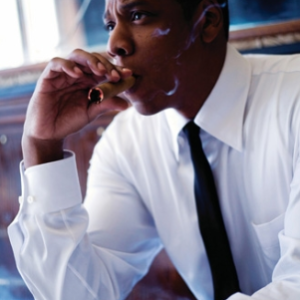
I like his music well enough and I think he is a gigantic talent, but I would not be considered a big fan of Jay-Z’s. I certainly don’t “follow” him or his career. I am aware of some of the unavoidable biographical and gossipy headline aspects of his life, but only very peripherally. (I am even aware of a sensationalized incident that occurred last spring in an elevator between Jay-Z and his sister-in-law, the singer and model Solange Knowles. That is a different deal.)
I was shaken by his concert last December, and especially by the riotous actions of the crowd. I have seen some anarchic audiences. As one comparison: I saw the Dead Kennedys in 1985 and Jello Biafra, their singer, had unleashed his special, infectious brand of punk savagery – he had the thrashing crowd going bonkers. The anarchic spirit of the concert-goers seeing Jay-Z some thirty years later made the DK crowd look like denim- and leather-clad mouseketeers.
Two main things: First, Jay-Z is riveting. His generosity and authority as a performer are almost unbelievable. The other thing, though, was the crazily hedonistic free-for-all dancing in the audience. Sure, there were lots of people sparking weed, and I saw a lot of beer and Hennessy poured at the arena’s many bars, in fact, I had a couple cognacs and Buds, (but no bud.) This was not impulse fueled by drugs or alcohol. The abandon was fueled by the music and the beats and the attitude of the performer. The party was on.
There was no support act in the traditional sense; instead a DJ spun a mix of classic and contemporary hip-hop for about an hour, gently increasing volumes and bumping up the low end. I was a guest at the concert of my friend Eric and his sons, Davis (12) and Jack (14). We were able to talk to and hear one another easily through the DJ’s first forty-five minutes as the audience was getting loose. The DJ’s effect was perfect, organically whipping up the feeling of anticipation and excitement. Everyone was smiling.
Then it got loud. Jay-Z took the stage, the lights in the arena went dark, and the air filled from all directions with smoke from expensive dope. The stage show was clean, angular, and bright – lots of white with black accents, lots of high wattage, and hundreds of shiny metal cubes, stacked and connected, rising high above the stage. There was fast-paced video projected on huge screens behind the stage and the DJs. People started dancing, dancing like I had ever seen.
It was not a concert to sit through. We were close to the stage and two rows behind the first balcony rail. Eric’s boys knew almost every lyric and they danced unselfconsciously, rapping along with Jay-Z, bopping their heads and throwing their hands in the air. Directly in front of us on the railing were young (twenty-something) women who appeared to have just met at the concert. They were wild, wild, wild.
What were the boys making of the girls dancing in front of them? It was bacchanalian. The moves unapologetically and undeniably simulated sex. For me, it was refreshing and a bit disorienting to see people just getting nuts – having their own brand of fun and not giving over any energy to judgments. And it was not just the girls in front of us; they were exemplary, but it was the whole place. As Timbaland himself noted on the microphone, “Y’all’re live as shit!”
When one looks at film of Sinatra or Presley or The Beatles sending audiences into frenzy, the frenzy was projected back to the performers. Likewise, when metal fans go fist-pumping, hair-whipping cuckoo, as they did, for instance, when I saw Metallica in 1989, the projection of most of the energy is directed back to the stage and the performers. Not so with masses of the Jay-Z crowd. Some of that raw energy surely made its way back to the stage, but in a way that I never had experienced, the energy created by the performance was mainlined by young members of the audience who were dancing and then projected to other audience members more than it was back to Jay-Z.
Srsly. FrnZ.
And as I have gone over that evening in my mind, in addition to wondering what Jack and Davis were thinking of the whole experience, I have thought again of the group of white Tulsans who attacked a thriving neighborhood of thousands of black citizens because of a touch. What would they have made of the man on stage? What would they have done when they saw the super fit black girl and the curvaceous blonde girl grinding and pouring beer into one another’s mouths?
The other bookend: A few weeks ago, Dave Chappelle took the stage at the Rococo Theatre in Lincoln with a lit cigarillo between his teeth. How raw and pointed his performance was. How smoky. How far we have come.

Chappelle deserves credit for undertaking the presentation of the complexities of race and the differences between people with more intelligence, daring, and hurtling humor than anyone alive. He is a riot. I think there is confusion about how funny he really is. Are his intentions political? Are they meant to provoke thought? Or are they meant to give people a license to laugh at ideas that they could never fundamentally advocate? For instance, when he tells a story about a confrontation he had with a lesbian couple whose child goes to school with his child, is he making fun of lesbians because they are different from him? Or is he actually making fun of people who think it is okay to make fun of people who are different?
His set on a recent Sunday in October, one of eight sets he performed over four nights in Lincoln, was a master class in contemporary stand-up comedy. Chappelle is in his early-40s, like Jay Z, and is likewise at the pinnacle of his super-compelling powers. (Unfortunately, Chappelle’s DJ, unlike Jay Z’s, was a soggy dud. SO contrived, SO forced, the DJ’s efforts to pump the crowd up had the opposite effect of boredom.)
Some things he is not. He is not overtly instructive in the way that George Carlin was. He is not ferocious like Richard Pryor or Chris Rock. He is not a stage-stalker. He paces, occasionally bending over, laughing at his jokes, doing his own thing at his own pace. Cool. He is more a detached and high-personality housecat than a panther. Chappelle quickly overcame that weird and uncomfortable DJ intro, and his story-driven observational bits had everyone smiling ear to ear when they weren’t washed over with laughter.
Reflecting on his show, I thought again of the misguided past represented by scores of despicable actions visited upon minorities, not just the Tulsa Race Riots. What would the twisted lynch mobs and white-hooded ghouls have made of the man on the stage? How far we have come.
How far have we come?
This Could Be Anywhere by The Dead Kennedys from Frankenchrist (1985 Alternative Tentacles).

Kill the Poor by The Dead Kennedys from Fresh Fruit for Rotting Vegetables (1980 Cherry Red).
99 Problems by Jay-Z from The Black Album (2004 Roc-A-Fella/Def Jam).
Hello Brooklyn 2.0 by Jay-Z from American Gangster (2007 Roc-A-Fella/Def Jam).
Close to the Edge by Mos Def from Chappelle’s Show (2003 Comedy Central).
20 nov 2014
_____________________________________________________________________________
Fall / Break
There is no way of telling people that they are all walking around shining like the sun…
– Thomas Merton
Hastings College, Nebraska – October 1983.
Mike was a friend, but he mostly went his own way. His long-lashed eyes he cast downward at least as often as casting them up. Already slender, he made himself still smaller by keeping his arms confidently tight to his trunk, and perhaps by hunching over a bit like someone purposefully lurking in a dark alleyway.
He lived alone and spent most of his time alone. Some things were easily observable about him – he was creative, smart, and easily bored. Then there were things about him you couldn’t quite square up – he was alternately blasé and then quietly dramatic. He often seemed intensely confused and took great pleasure in confusing others. With just a smile he could give you a conspiratorial thrill that would make you so happy – yet the smile might be likely to also confound you.
For a certain type of person, Mike was a tastemaker. He was an early-80s punk in attitude and appearance – a snarl never far from his lips – a shaved flop haircut hid his handsome and angular face – safety pins in his clothes and earlobes – Kool smoke swirling about him, a delicious fog.
Mike was a campus exotic. A person bedeviled by the insistent light of nonconformity that burned so brightly from within, in spite of his own shading protestations of normalcy.

With a group of theatre students that I counted as my closest friends, I had rehearsed Macbeth for weeks and performed four shows for audiences when fall break came around. The leaves of the campus maples and crabapples had begun their glorious transformation to the colors of straw and blood, and bright warm days shortened then jelled into brisk nights.
For most Hastings College students in 1983 fall break meant heading home for a few days or a quick vacation. For theatre students it meant sticking around a mostly deserted campus with the intention of catching up on studies. Instead, it actually consisted of a lot of sitting around smoking cigarettes, hanging out drinking coffee, shooting the bull, listening to music. Probably with my group of friends we busied ourselves attempting to strike a casual balance between laughing a lot and complaining about being misunderstood.
Being in between performance weekends also meant picking up rehearsal for Macbeth.

If you’ve ever practiced anything, you know that rehearsing is not typically a glamorous endeavor. Unless you are playing a lead role you must be prepared often to simply be quiet – to silently stand or sit – watching and listening to action you are not a part of, but of which you will become a part.
Fall break was a bit like that in 1983, not much action. They were lazy days on campus with few people around, no classes, and very little structure. Mike was edgy and extra bored with the time on his hands and little to stimulate him.
He was playing the role of Lennox, a Scottish nobleman and an eventual messenger of most urgent and bloody news. He was especially good in his critical scene that opened with Lennox running toward an opening in the curtain. Forcefully shouting his line while still offstage Mike burst through the curtains that led to an open and fenceless balcony. Swirling his cape with a flourish, Lennox was supposed to rush onto a seven by eight foot platform, nine feet above the stage. There was a lot of backstage time before that scene…. So, how does one scratch the unreachable itch of boredom?
This is true…
A couple of hours before the final pick up rehearsal of Macbeth, our friend took a hit and half of acid. Things went a little wobbly early on in rehearsal and then all to hell when Mike took the stage for his big scene.
His entrance in Act III, Scene IV was wildly purposeful, and his speech was grave, rambling, and accusatory. That evening, he would not deliver all of his lines.
ACT III, SCENE IV. –- Forres. A Room in the Palace.
Enter Lennox and another Lord.
(Mike had serious momentum gathered as he broke through the curtains.)
LENNOX: My former speeches have but hit your thoughts,
Which can interpraahhhhhhhhhhhh!…
The rubber sole of his suede boot had become tangled in his waving cape and he was not able to plant his front foot. He went flying off the platform, landing on his hip with no attempt to break the fall. His body hitting the stage made a horrific sound – really more of a noise – a powerful splatting slap.
EMTs learned his name as they surrounded Mike, checking him out on the stage floor in the theater. As they loaded him on the gurney and rolled him toward the ambulance, they asked him lots of questions, trying to calm him. They wanted information about how the accidental fall happened.
Disoriented from the shock of horrible pain and the acid effects, Mike mostly rocked to and fro on his side, moaning, clawing at his tunic.
EMT ONE: (Insistent.) What happened in there, Mike?
EMT TWO: (Urgent.) What caused you to trip, Mike? Mike, did you just trip?
MIKE: (Suddenly clear. Intense.) NO. I’m not tripping. I’m NOT tripping.
But man, was he ever.
We listened to a lot of rock and even folk rock in those days, but the influence of punk and post punk music on me was more intense in many ways. It is not very surprising that the music I liked so much, (The Cure, Siouxsie and the Banshees,) would come to influence not only my taste, but other musicians I would grow to also love. Much of that is due to the times I spent with Mike. He had cool music going all the time.
So, speaking of tripping, I would not have predicted how much I would come to love the synth and computer generated music of trip hop that made the scene in the early 1990s. But man, do I ever.
Dig these tunes and forget that extra half a hit. (Links are underlined in italics.)
 Sometime Later by Alpha, from Come From Heaven (1997 Melankolic / Virgin Records).
Sometime Later by Alpha, from Come From Heaven (1997 Melankolic / Virgin Records).
Somewhere Not Here by Alpha, from Come From Heaven (1997 Melankolic / Virgin Records).
Soul City by Bowery Electric, from Lushlife (2000 Beggars Banquet).
What Your Soul Sings by Massive Attack w/ Sinéad O’Connor, from 100th Window (2003 Virgin Records).
Protection by Massive Attack w/ Tracey Thorn, from Protection (1994 Virgin Records)
Black Milk by Massive Attack w/ Elisabeth Fraser, from Mezzanine (1998 Virgin Records).

Only You by Portishead, from Roseland NYC – Live (1998 Go! Discs, London).
Pumpkin by Tricky w/ Alison Goldfrapp, from Maxinquaye (1995 Island Records).
Bloodstain by Unkle, from Psyence Fiction (1998 Mo’ Wax).
Polaris by Zero 7, from Simple Things (2001 Palm Pictures / Ultimate Dilemma).
Destiny by Zero 7, from Simple Things (2001 Palm Pictures / Ultimate Dilemma).
Thank you Mike.
21 oct 2014
______________________________________________________________________________
Covered
Here is a driving game: Start with an original song that has been covered, (as an example at the post’s end you’ll find David Bowie covering The Velvet Underground,) then name two or three songs in succession by moving the cover artist to the position of original artist.
There is something exciting and even elucidating about bands choosing to cover songs. The songs that artists select to cover can tell you some things about them that you may not already know. And how they play the cover songs might confirm things you knew about them.
Late on a Friday afternoon in October 2011 at Lincoln, Nebraska’s Zoo Bar, a really fine band, The Amalgamators, (now, sadly, defunct,) took on the challenge of covering a whole album. They picked the highly influential country-rock classic Sweetheart of the Rodeo by The Byrds, and they performed it just once. It wasn’t perfect, but it was perfectly glorious. You were either there to hear it or you weren’t and The Amalgamators provided me with one of my favorite live music experiences of my life.
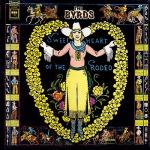
The selection is savvy and very fun because Sweetheart of the Rodeo is itself largely made up of songs written by artists from outside of The Byrds, (such songwriters as Merle Haggard, Woody Guthrie, Bob Dylan, and William Bell.) The album’s 11 songs took less than 35 minutes to play, and The Amalgamators did just what one would hope: they wrung every bit of joy and respect that they could out of each note and chord. For the band, I can only believe that the experience was a fantastic exercise in stretching as musicians, and the performance was certainly very much more than only an exercise for the audience at the Zoo Bar – it was a bit like watching a high-wire routine.

I wish more bands would try this. There is something really special about an isolated performance. “Hey, we are just going to do this once!” The stakes are high for the performers to get it right, and that urgency is projected to the audience. The risk wins over the audience. It makes them more forgiving and even more likely to enjoy the show.
For a long while during the 1980s, 90s, and early-2000s there was a shortage of covers. It seemed like covering songs was considered uncool – or cool only if bands covered songs ironically. Gratefully, that self-conscious phase seems to have faded away, and now it is not uncommon to hear bands covering new songs by their contemporaries and classics by their heroes.
Sometimes songs beg to be covered and I often match particular bands to specific songs. Lincoln’s For Against, flying above the clouds and often stealthily out of radar’s range, has been peerless among local acts, but covers haven’t been a big part of the band’s trajectory.
Here is one of the band’s beautiful original songs by Jeffrey Runnings. This is brilliant and was ahead of its time:
I Wish by For Against, from Aperture (1993 Independent Project Records).

I always wished that For Against would have covered the song linked below during the vintage of Paul Engelhard on drums and Steven Hinrichs on guitar with Jeffrey Runnings, the band’s constant leader, singing and playing bass.
*Abuse Me by Silverchair, from Freak Show (1997 Epic).
*Pedigree note: Nicolas Launay produced this song as well as albums by Nick Cave and the Bad Seeds, P.I.L., The Birthday Party, Killing Joke, Gang of Four, the Yeah Yeah Yeahs, Arcade Fire, and many others.
Some bands make covers so fine that they rival or surpass the great original versions:
The Headmaster Ritual by The Smiths, performed live in 2007 by Radiohead.
There is a Light that Never Goes Out by The Smiths, performed by Dum Dum Girls.
Here is an example of the driving game:
White Light White Heat by The Velvet Underground, performed live in 1973 by David Bowie.
The Man Who Sold the World by David Bowie, performed live in 1993 by Nirvana.
Frances Farmer Will Have Her Revenge On Seattle by Nirvana, covered by Jay Reatard.
19 Sept 2014
_________________________________________________________
September Lurks
Summer is special among seasons because time is drawn out and freedoms are exaggerated by the long and blessed shining of the sun.
Do you love the brightness, too? Daylight equals freedom, and summer delivers. Then, like a ghost you thought you saw, “poof!” summer is gone. September lurks, daylight becomes noticeably shorter, and though it still gets hot, autumn begins to just peek coolly around the corner.

Late summer brings me a special kind of longing – a complicated mixture of blurry nostalgia and focused anticipation. What is it? Is it because there will be longer nights to get through? Is it because of the swirling necessity of change?
Maybe the explanation can be found in deeply entrenched habits built from seventeen years of public school, college, and graduate school. That is a long time ago, but both then and now, autumn seems to bring new challenges, new things to learn, and new people to meet.
Make that new challenge be rewarding. Make that new person you meet a part of your future. Enjoy the season for what it is. And remember, come November: Don’t let autumn raise winter’s whip and wonder, “where will the lash descend?”
Gird yourself with songs.

Here are several that I associate with the end of summer and they give me a wonderful lift. These songs help me remember times and places I was happiest. Maybe you have your own selections to help make something luxurious last of youthful summers. (Underlined, italicized song titles are links.)
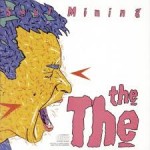
–From the prodigious Matt Johnson – I could listen to this song a million times.
Uncertain Smile by The The, from Soul Mining (1983 Some Bizarre/Epic).
–Real Estate is among half a dozen American bands that I really admire. This song captures perfectly the sincere surprise of discovering that reciprocated love is possible.
Horizon by Real Estate, from Atlas (2014 Domino Records).
–Poor Devil – for Nick, it was permanently winter.
At the Chime of a City Clock by Nick Drake, from Bryter Layter (1970 Island).
–Not only is the night over, the summer is over, too, and you are going to have a headache tomorrow, mate.
End of the Party by The English Beat, from Special Beat Service (1982 I.R.S. Records).
–Still favorites, the early songs (like this one) are jewels of unapologetic and unchecked emotion. The music, the vibe, the lyric; all move together as naturally as the flow of changing seasons.
Ease Your Feet in the Sea by Belle and Sebastian, from The Boy With The Arab Strap (1998 Jeepster/Matador).
–Listening to this album always feels to me like the beginning of something.
Brakhage by Stereolab, from Dots and Loops (1997 Elektra/Duophonic).
–I promise that you are not going to like this one. Nobody likes this one.
Cooking by Green Gartside (Scritti Pollitti), from White Bread, Black Beer (2006 Rough Trade/Nonesuch).

–From Nashville – I was surprised. I figured they were from London. It was no surprise to learn they worked with Robin Guthrie (Cocteau Twins). Ambient rock beauty.
Raising Your Voice… Trying to Stop an Echo by Hammock, from Raising Your Voice… Trying to Stop an Echo (2006 Hammock Music).

30 August 2014
______________________________________________________________
All We Ever Wanted Was Everything
Summers occupy more than their share of one quarter of my memories. When I think of formative years (early- and mid-80s) and especially of the friends that surrounded me then, the faces are often suntanned and brightly smiling. Behind their young eyes I still see the desire to pulse out into the wide world, to grow and explore beyond our confines.
We flew through our summers, sleeping little, gorging experiences. Ravenous, we wanted everything. Day and night, we ran wild, and whatever Grand Island, Hastings, and Lincoln would become to us later in our lives, they were, for the time being, places to be dominated – places to be transcended.
We would all be moving on, but not before we memorized the nearby countryside, bolting down Nebraska’s gridded county roads, walls of corn or beans on either side, spouting wakes of dust into the hot atmosphere. Stopping on train bridges and looking up, stars dotted or clustered in the otherwise blaring darkness of the sky and night in the country is its own music.
We spent floating hours sharing hopes and thoughts with one another in the Platte River whose channels, banks, and depths evolved and shifted each day. The Platte also shaped us – presenting us always a slightly different and new river, as we presented it daily with slightly adjusted and adapted young selves. The river is its own music.

We whooped through our cities by night – walking steady along train tracks that transected our towns, or going subterranean to howl away in railroad underpasses. Like felines we scaled buildings or grain elevators after midnight to survey the city’s streets, alleys, and the pathways we took during the day. Cities are their own hypnotic music.

In our natural courses we moved on. Some said goodbye to those formative days and our places with haste and pleasure, some said goodbye wistfully; some said no goodbye at all. Of course, there was music playing all the time and there are songs that can take me right back. A representative sample:
— This song is an explosion of joy and youth – weird and wonderful – like a double shot of something – 80 proof – swallowed through a mouthful of sugary candy. I’ve got to tell you all about it, I’ve got to scream and shout it.
Uncontrollable Urge by Devo, this version is from Urgh! A Music War (Soundtrack, 1981 A&M Records).
— Discovering The Police before they “hit” felt like knowing a conspiratorial code for what is cool. This dark and masterful song still makes me close my eyes and shake my head.
Bring On The Night by The Police, from Regatta de Blanc (1979 A&M Records).
— They were a revelation and among the most influential bands in American music. I loved them for years. R.E.M. = college memories.
Carnival of Sorts (Box Cars) by R.E.M., from the EP Chronic Town (1982 IRS).
— My first experience with a band that would become a favorite forever, this song still transports me to hot summer nights in 1984. Astonishing.
Sugar Hiccup by Cocteau Twins, from Sunburst and Snowblind (1983 4AD).

— This represents the kind of DIY ethos that jarred my friends and me – a pretty song from a fun and pretty record.
Choukoutien by Oh OK, from Furthermore What (1983 DB Records).
— On the opposite end of the scale, here is a summery tune from a gargantuan and inescapable hit album.
Save a Prayer by Duran Duran, from Rio (1982 EMI/Capitol).

— A double dose of Daniel Ash’s genius.
All We Ever Wanted Was Everything byBauhaus, from The Sky’s Gone Out (1982 Beggar’s Banquet).
You, The Night, and The Music by Tones on Tail, from Burning Skies (1983 Situation Two).
— After saying, “Goodbye,” can you go back?
Goodbye to the Village by Killing Joke, from Brighter Than a Thousand Suns (1986 EG Records).

28 july 2014
____________________________________________________________
The Harvey Boys
Summer Wind
Snapped in 1948, in Ogallala, Nebraska, this is a photograph of my uncles doing what they loved to do. Music was in the Harvey boys’ blood.

At age 16, in young, sweet profile, is my uncle Kenny handling his trumpet. He’s proud and happy to be mixing it up with his older brothers. In the center of the pack, sly uncle Paul is leading the number and keeping everyone honest on his trombone. He’s intoxicated by the song and the proximity of his wife, my dear aunt Marjorie who is on the flute. (Also pictured is Marj’s lifelong friend, Cherry, on the clarinet.)
And then there is the essence of the picture: my elegant uncle Bob with a cigar and a saxophone. His handsome and cool smile conveys the prototypical, unaffected look of the Harvey boys. Whether together or alone, they wore pure expressions and postures that said, “Wherever I am, I am exactly where I am supposed to be.”
Bob is smiling directly at my father, Philip, who took the photo. Phil was undoubtedly smiling right back, just a half a second removed from giving a movie star’s wink to his slightly older brother. It is easy for me to imagine the scene from uncle Bob’s vantage. My dad is standing still and tall as possible, and he has just said to his younger brother, “That’s the boy, Ken! Play it – go get ‘em, boy!” Although the day is warm, Phil is still in his suit jacket, his tie knotted crisply at his throat. The camera’s held firm in his steady right hand and my father’s relaxed left hand likely kept a delicate but decisive grip on a tumbler of scotch and a lit Chesterfield cigarette.
They were surely playing either Swing or Dixieland jazz – two forms that my dad and all of my uncles loved. I can imagine that this “photo session” took considerable time to actually evolve. All their lives the boys were a deliberate foursome – unrushed and unrushable – sophisticated practitioners of the delicate art of delayed gratification. Anything worth doing was worth putting off a few more minutes to squeeze out a bit more exquisite anticipation. Their excellent company was enough — “Before we do, pour us another cup of coffee,” or, “let’s have just one more cigarette, then let’s…”
Impromptu – imschmomptu.
My dad would have been 21 years old when he shot the photo, and pretty fresh out of the U.S. Army.

He played a little bit of piano and the piccolo, and could dabble around with other instruments, but instruments weren’t really his focus. If he had a gift it was his unselfconscious tenor voice. He owned a leader’s voice, terrific for anchoring a choir section, for adding unexpected and smiling harmonies to hymns in churches, and occasionally, for bravely taking the high parts in quartets. After he finished his master’s degree, he even taught Music (along with English and Speech) in a small town in Nebraska, then stayed active in civic choirs through much of his life.
Age 22 in the photo, Uncle Bob, eventually became Dr. Robert B. Harvey, faculty Chair of the Music Department at Merced College in north-central California. He could conduct, and he could really play. It is easy for me picture Bob in his forties, switching roles from professor to player, driving a 1970 Thunderbird toward the Bay Area for a night ‘sitting in’ with Vince Guaraldi in a smoky Menlo Park nightclub, or with Dave Brubeck up in San Francisco.
Uncle Paul, age 24 in the photo, became a college teacher, too, and was a lifelong collector of music. He had an omnivore’s appetite and a specialist’s precision. His main man was the jazz composer, pianist, and cornet master from the 1920s, Bix Beiderbecke. Paul stayed on his chops playing in civic musical projects in his (and Bix’s) hometown of Davenport, Iowa. He was part of a memorial society of fellow Bix enthusiasts.
My mom would always say of dad’s younger brother, Ken, and his wife, my auntie Elaine, “Ken and Elaine were just game! They were up for anything and just fun.” All newly married in the early 1950s, my folks and Ken and Elaine first settled in a tiny, dusty, windy town in Wyoming, keeping each other company and having adventures. Soon, Ken and Elaine would depart for the greater opportunities of 1950s and 60s Denver, and I imagine my uncle, then in his twenties and early-thirties, occasionally stalking the rough and jazzy Denver streets that Kerouac wrote about, sporting all the while an open, eager smile on his face, wishing his brothers were around to take it all in with him.
So, you can see I had my own form of pedigree. Okay, so I was not born to Felix Mendelssohn – not to Liszt – not Dvorak. But I had my opportunities to become a player. I was given lessons on the piano, lots of encouragement, and I always had access to music from diverse genres and avenues. Still, I stunk.
Upon assessment, it is easy to determine that I lacked some simple components to succeed: talent, discipline, and desire. To practice and master and enjoy music – you need a generous combination of all these – and unlike the Harvey boys, I had not a sliver of even one.
So, I could never play, and never even really read music well. I performed as a choir singer, a chorus member and even as a soloist in musicals. I loved being involved in theatre, but I was terrible. If I had a solo, I’d kind of stylize a half singing/half talking improvisation through the number. Gratefully, in large part because of my dad and my uncles, I came to enjoy all kinds of music.
Here’s a song for all four of them, plus one for each of them. These would get the stamp of approval of all the Harvey boys – a swell bunch.
–The Harvey boys could be true blue cool breezes, and they also, “knew from hot air!” What a way to welcome the summer – this is brilliant in every way.

Summer Wind by Frank Sinatra, from Strangers in the Night, (arranged for orchestra and conducted by Nelson Riddle, 1966 Reprise).
–This is a treat and a treasure. All the Harvey boys are gone, but they wouldn’t want anyone to be blue about it.
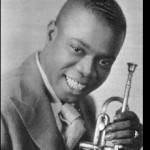
After You’ve Gone by Louis Armstrong and his Orchestra (1929).
–Gone too soon, the Harvey boys were not all long lived. Perhaps matters of quality over quantity? Groundbreaking artistically and socially, Bix was likewise a light that burned very bright, but not long. Here is his piano masterpiece:

In A Mist composed and performed by Bix Beiderbecke, solo piano (1928).
–Fun, dignified, graceful, stylish: Duke Ellington.

It Don’t Mean a Thing (If It Ain’t Got That Swing) by Duke Ellington and His Orchestra, (composed by Ellington 1931 – performed 1943).
–Hurry up and wait. This one has a hip patience and timelessness.

Take Five by The Dave Brubeck Quartet, from Time Out (1959 Columbia Records).
20 june 2014
_______________________________________________________________________
Hotter than the Sun

Dee Dee Penny is hotter than lava and she deserves your full attention. She is the leader of the American band Dum Dum Girls, and with her husband, Brandon Welchez of Crocodiles, she is also one furiously beating half of their side project, Haunted Hearts.
Dum Dum Girls started in 2008 in Los Angeles as a solo bedroom project of recorded music. Less than six years later, Dum Dum Girls is a full band, playing in the studio and touring live, with material from three LPs and four EPs.
Dee Dee is almost magical. She can flash more raw might and seduction at you with the barest swish of her pinky than most pop stars can muster with the full and concentrated force of their whole beings. This is a great example of how Dee Dee can parlay softness and vulnerability into the kind of power that few possess:
Under These Hands by Dum Dum Girls, from Too True, (2014 Sub Pop). http://bit.ly/DDthesehands

In a very short amount of time Dee Dee has gained a deserved place in the rock and roll pantheon, and her throne should be situated close to those of PJ Harvey and Debbie Harry, and perhaps directly between Chrissie Hynde and Joan Jett; ALL of whom, like Dee Dee, have been known to handle a guitar like, “the last machine gun in the universe.”

Approachable on the surface, but challenging to figure out at depth, Dee Dee’s Dum Dum Girls songs comfortably blend her diverse influences. Not to oversimplify, but I think these can be identified in three or four classes. Here are some songs from other artists with a Dum Dum Girls ‘analogue’ song for comparison:
–First, the pop sensibility of girl groups ranging from The Ronettes or The Crystals to Madonna and beyond.
He Hit Me (And It Felt Like A Kiss) by The Crystals, from the 7” single, (1962 Philles Records – b/w No One Ever Tells You). http://bit.ly/Crystalshitme
Lord Knows by Dum Dum Girls, from the EP End of Daze, (2012 Sub Pop). http://bit.ly/DDLordKnows
–Next, there are prevalent dark and goth-y layers on much of the work, ala Siouxsie and the Cure.
Spellbound by Siouxsie and the Banshees, from the LP Juju, (1981 Polydor). http://bit.ly/siouxspellbound
Johnny Jupiter by Haunted Hearts, from their new album Initiation, (2014 Zoo Music). http://bit.ly/Jupiterhearts

–Then, there is the high attitude rock and roll vocal delivery: the lip curling, knowing, and smiling sneer of The King.
That’s All Right by Elvis Presley, from the 7” single (1954 Sun Records – b/w Blue Moon of Kentucky). http://bit.ly/elvis-mama

Little Minx by Dee Dee Penny from the Dum Dum Girls’ LP Too True (2014 Sub Pop). http://bit.ly/DDlittleminx

–Finally, the fun, charisma-spewing, and seemingly effortless ability to rock out.
Message of Love by The Pretenders, from Pretenders II, (1981 Sire). http://bit.ly/MessagePretenders
Dress by PJ Harvey, from Dry (1992 Too Pure). http://bit.ly/DressPJH
He Gets Me High by Dum Dum Girls, from the EP He Gets Me High, (2011 Sub Pop). http://bit.ly/dumdumhigh
Few acts can claim the successful synthesis of musical and personal styles created by Dum Dum Girls. They wed great, introspective pop songs with a cultivated and sincerely detached, great, dark collective image. They are wrapping up a massive tour of the United States and Europe. I absolutely loved this New Yorker magazine notice for the band that mentioned Dee Dee’s, “impeccable craftsmanship and vixenish allure.”

She is a huge talent who is having a big and busy year. In fewer than six months, and in addition to releasing two albums and supporting one of them with a tour, she also: starred in an esoteric short film that was written by Bret Easton Ellis, and was made for the Los Angeles Museum of Contemporary Art; released at least six song videos; and has been featured by Vogue and AllSaints. Please don’t come around Dee Dee with your wax wings, Icarus, because she is hotter than the sun.

5 june 2014
________________________________________________________________
Pso Psyched
I love psychedelic music. It is versatile. And it’s fascinating the way it weaves its way organically into so many different genres. It is a vibrant part of rock, folk, soul, funk, and electronic dance music. So it is easy to understand why the recent release Sun Structures by England’s Temples (Heavenly Recordings 2014) is satisfying and fun. These lads are not really pretending to break any new ground, and have generously acknowledged their many influences, (some of which are featured farther below in my investigative sampling.)

Temples join a number of great bands, including Australians Tame Impala and Americans MGMT and TV on the Radio, in proving that psychedelic rock remains fertile creative ground. I think it is a naturally robust genre because it’s renewable, and psychedelia has the power to enhance so many distinct forms. It can take you back in time but interesting new wrinkles arise to keep it sounding fresh and new.
Temples’ consistently successful new iteration of the tradition of psychedelic rock music sounds to me like creatively joyful homage. They are big and getting bigger, and you can check them out here:
Colours to Life by Temples, from Sun Structures (Heavenly Recordings 2014). http://bit.ly/tempcol
You will think of your own examples, and my list is by no means comprehensive, but I wanted to take a shot at finding a dozen or so good songs from a variety of genres, and also cover a number of years. (I left out a decade and a half of the 1970s/early 1980s.) Let’s get started with a tune from four shaggy Liverpudlians you may have heard of.
—-This is like a shot of adrenaline – the juxtaposed airiness of the manipulated effects and strings with Ringo Starr’s powerful drumming make this a magical three minutes. Rock on:
Tomorrow Never Knows by The Beatles, from Revolver (Parlophone/Capitol 1966). http://bit.ly/beatomorrow
—-The Byrds used psychedelia effectively in rock and even country. Here, David Crosby taps into psych-folk:
Everybody’s Been Burned by The Byrds, from Younger Than Yesterday (Columbia 1967). http://bit.ly/byrdsburn
—-The organ, the bluesy/jazzy guitar, and the Latino rhythms are all combined by Santana to “psych” up this number by Tito Puente:
Oye Como Va by Santana, from Abraxas (CBS 1970). http://bit.ly/santanacomo
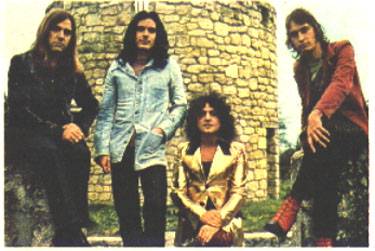
—-Marc Bolan and Tony Visconti present us with a screaming wonder of glam-psych:
Rip Off by T. Rex, from Electric Warrior (Warner Brothers Records 1971). http://bit.ly/trexrippoff
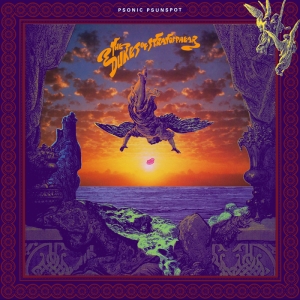
—-More psych homage. XTC, a band so badly underappreciated, created fun individual aliases (Lord Cornelius Plum!) for their alias ‘pside’ project, Dukes of Strotosphear. The result is a blast. They channeled the Beach Boys, Beatles, Kinks, Pink Floyd and others with great results:
Little Lighthouse by Dukes of Strotosphear, from Chips from the Chocolate Fireball, (Virgin Records 1987). http://bit.ly/dukeslittlelight
—-Danceable madness from Scotland – this is ecstatic:
Passing Away by The Shamen, from their album Drop, (Moksha 1987). http://bit.ly/shamenpassing
—-So weird and so funky, the prolific master, Prince, infused psych into many of the different musical genres he’s laid down. The cat can dance – check him out:
Gett Off by Prince and The New Power Generation, from Diamonds and Pearls (Paisley Park/Warner Brothers Records 1991). http://bit.ly/princgettoff
Hey buddy, how about something from this century?
—-A heavy dose from Sweden, saturated with strings and kettle drums:
Satt Att Se by Dungen, from 4 (Kemado 2008). http://bit.ly/dungensatt
More recent examples:
—-Lucifer Sam from 2011. Check out MGMT, (with a little help from Deerhunter’s Bradford Cox sporting his mad, black leather cape,) in this wonderful and strange live cover of Pink Floyd: http://bit.ly/mgmtlucifsam [The song originally appeared on The Piper at the Gates of Dawn by Pink Floyd (EMI Columbia/Tower 1967).]
—-Endors toi by Tame Impala, from Lonerism (Modular 2012). http://bit.ly/tameimpalaend

—-Million Miles by TV on the Radio, B-Side from 12” Mercy/Million Miles (Federal Prism 2013). http://bit.ly/tvradiomiles
9 may 2014
____________________________________________________
Forgiveness
Morrissey has been much on my mind. (This piece is a continuation of its preceding post, called Flight.)
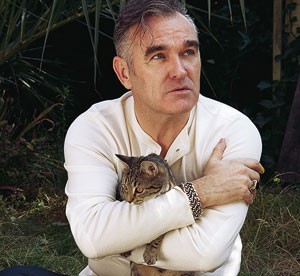
He’s re-booked Lincoln’s beautiful Rococo Theatre and I am happy to report that we have a table and seats reserved for the upcoming May show. While anticipating the concert and having just finished his book, I decided to share a few thoughts in review.
Okay – a deep breath…
Criticism comes naturally to some. Probably because I am thin-skinned, it does not come to me so easily. I tend to think of myself this way: I am loyal. When I am IN, I am ALL IN. For example, I bristle at the lukewarm, “What have you done for me lately?” attitudes that people take about their once-revered entertainers and athletes. In fact, I despise that. But after only short reflection, I fear that in this regard I am as guilty as anyone else – regularly discarding my favored stars of music and film once I judge them to have overreached or to have become too popular.
This is a confession, and not an easy one. It is difficult because in these moments of painful recognition – when we realize that we are thinking and behaving in ways that we dislike – to paraphrase my old friend Brent, “we cast the darkest shadows on ourselves.” It is when we hate most intensely within ourselves those outward qualities that we have come to hate in other people.
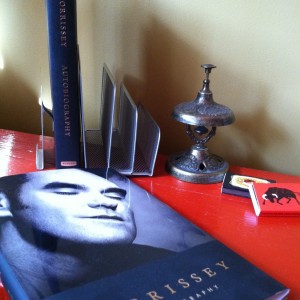
Morrissey, Autobiography (New York: Penguin, 2013) 454 pages.
I love this artist, and I wanted to love his book, so writing anything even remotely negative about Morrissey’s long, dense, and poetic Autobiography feels a bit like betrayal. But here goes…
One of my idols is a man who, throughout his life, has come to feel so consistently let down and unsatisfied, (perceived as a “spectacle of misfortune,”) that his book was difficult to penetrate and somewhat harder to enjoy. I knew better than to expect a bright warm jaunt through the life of an international pop icon, but the clouds cannot always be greyest over Morrissey, can they? Sometimes the sun must shine, and I really had hoped for more joy and more good times.
Vain hope. The book is generally rather dull – it casts the pervasive unwelcoming and perturbed vibe of misanthropy. Besides the fact of being ALWAYS misunderstood, it seems there are only a few things about which he is certain. Among these are his perfect taste, strong opinions, and his vast talent. Everyone else mostly falls short.
About many people and situations he is sometimes merely bitchy:
“… Siouxsie [Sioux] is wearing reflective sunglasses so that her eyes are not visible to anyone, and instantly her demands are barked out with a voice of punished ferocity. Within eight seconds she seems to have alienated everyone in the room…”
Often he is completely savage. During a “life-giving” festival appearance by the Smiths, Morrissey writes of Factory Records founder and the festival’s organizer, Tony Wilson:
“…[Wilson] flutters and fumes backstage … and he spends the remainder of his life with a Morrissey–Smiths wasting disease of the lower limbs, whilst oddly admitting that his big mistake in life was that he didn’t sign the Smiths to Factory…”
Adding to the book’s difficulty was the stylistic lack of clear breaks for chapters, stories, or themes. Other than some occasional double spacing, the episodes run into one another. The book’s only real pattern is chronology – so besides things being laid out more or less in order, we don’t have much in the way of signals about how to read, for instance, when has one bit stopped and another is about to begin.
Another stylistic source of annoyance, (and here, writes the wee blogging pot to the mega-star kettle,) the prose of Autobiography is mostly overwrought. It is well done in bits and pieces, but to read at any length, it is swampy:
“The post-volcanic black worn by the school nuns and their monastic sheepish priests shapes the subtle effects of oppression; they know their time has gone, and the spinster-faced have seen the door close for the last time.”
In many ways the contents of his book are put together like the lyrics of his songs – remarkably observed pieces of a life that make the ordinary seem extraordinary – partly because the observations are relatable. But in the assembly the contents run and mush together. I wonder what kind of book Morrissey may have come up with if he’d structured it differently. For instance, what if he’d broken it into manageable and defined episodes or chapters? He may have presented the world with a series of beautiful, cohesive, and coherent chapters – think of The Beatles’ songs Norwegian Wood flowing into You Won’t See Me on Rubber Soul; nearly perfect songs that one can relate to, and that are two or three minutes long. Instead we find Freebird running into Truck Drivin’ Man by Lynyrd Skynyrd (Skynyrd’s Innyrds) a couple of tortuous messes that clock at ten and five minutes respectively.

To be fair, there were some lovely, sunny pages in Autobiography. It was fun and familiar to read of his youthful thrall to poets, music, and musicians. He gives favorable impressions of other pop stars: he mostly worships New York Dolls; he vacillates in affection for but mainly respects the artistry of David Bowie and Bryan Ferry; he adores Chrissie Hynde and Nancy Sinatra. And there are heartbreaking losses, friendships, and artistic triumphs – for example there is genuine warmth and closeness that he sometimes felt with his Smiths co-founder, Johnny Marr. But the demeanor of Morrissey’s cloudy public persona, made for far more gloomy pages than bright ones.

I do love this artist – few have meant so much to me. It is a bad mistake sometimes to meet one’s idols – and often dangerous to learn too much about them. It’s a mistake I continue to make.
His book was a miss for me, but I can’t wait to see him perform again soon. By then I will have forgiven Morrissey.
His lyrical genius, wonderfully distinct voice, and peerless commitment to material have made Morrissey a huge international star, and one of my favorites for all-time. Ranging from early to recent, here are a few examples of his mastery:
http://bit.ly/1nuquqH – The Headmaster Ritual by the Smiths, from Meat is Murder, (Rough Trade/Sire 1985).
http://bit.ly/QGdBMK – Half a Person by the Smiths, from Louder Than Bombs, (Rough Trade/Sire 1987).
http://bit.ly/1ijMv8Q – Dial-a-cliché by Morrissey, from Viva Hate (HMV/Sire 1988).
http://bit.ly/1iWyrBH – Black Cloud by Morrissey, from Years of Refusal, (Polydor Records 2009).
I think his chart numbers are surprising: http://bit.ly/1fbfyvW
– 25 april 2014
___________________________________________________________
Flight
Like anyone who ever has been young you probably shared with me the natural adolescent aches of isolation. Real or imagined, isolation could make us feel anxious, acutely misunderstood, and put upon. It’s damned confusing to grow up – one wants so much and sometimes so little seems available.

We knew that there were cool things out there somewhere, and we were busy learning the terrible lesson that we would not get to be in on all of those cool things.
Not all the time, but sometimes the psychic and emotional yearnings that accompany youth were compounded for me by what felt like actual isolation. Real or imagined, a gargantuan physical distance seemed to lay between me, being in the center of Nebraska, and those places where anything existed that was actually cool. The proximity itself was painful.
Fortunately I was paying attention when the gods sent me the clues to climb through a portal out. I was given access to a passageway that would lead from our desert of cultural blandness to a mind-nourishing oasis dripping with cool stuff.
The portal was Night Flight, a four-hour show that ran on the USA Network on Friday and Saturday nights from 1981-1988. I devoured it.
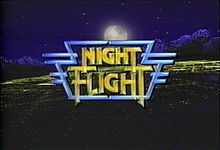
During high school and college this pop culture late-show was always eye opening. Most formative and memorable to me were the odd mixtures of film and music videos that were unavailable to me elsewhere. They overshadowed the forgettable comedy and topical commentary which acted as filler.
Each week would bring a movie to surprise and feed a hungry mind. Eras and genres were jumbled. Camp classics in the vein of Reefer Madness mixed it up with sci-fi or classic horror like The Cabinet of Dr. Caligari. Foreign films shared the screen from week to week with the cult features Breaking Glass; Rude Boy; and Ladies and Gentlemen, The Fabulous Stains. We were presented with art films of Paul Morrissey and Andy Warhol, such as the graphic Flesh for Frankenstein, alongside mind-expanding experiments like Haskell Wexler’s Medium Cool and David Lynch’s Eraserhead.
There was also a good chance that you could catch a music video that you wouldn’t see anywhere else. Along with MTV’s 120 Minutes, Night Flight was a treasured TV venue for hearing some great songs for the first time.
Sometime early in 1985, (probably between mid-February and mid-March,) Night Flight aired a music video that would shake me roughly awake. I was 19. The video featured dizzying, bleak shots of a cityscape – smokestacks pumping polluted black clouds into a grimy sky; panoramic shots of anonymous looking buildings and of towering, arched train bridges. There were mysterious, dark, nighttime shots of a very plain, very pretty girl dancing wildly in a spotlight against the background of a plain, stone wall – she wore a red sweater and a her delightfully insistent blonde bob refused to be contained in her red tam-o’shanter. Most jarring were the few jittery frames of a thin, handsome young man contorting his angular dancing body, and who spouted poetry in his hypnotic song, asking, “How soon is now?”.

My eyes flew open wide and my blood quickened. Here was flight. The brilliantly manipulated guitar music that this band conjured floated and swelled and made me want to soar, while the hypnotic, driving drumbeat created its own gravitational pulsations, forcing me to stay back on earth. My obsession with the Smiths commenced, and I embarked on an obsessive crush of fascination with Morrissey, the band’s singer.
Apparently, the Smiths were mortified by this music video that their label (Rough Trade) made as a promotion and without their consent. It is still mesmerizing: http://bit.ly/1hW3meB
My Smiths/Morrissey obsession has waxed and waned – temporally bookended by that late winter of 1985 and now, the spring of 2014. Closing in on 30 years, I strongly suppose that it will continue as I breathe on into the ever-expanding present.
Symptoms of obsession:

- Even now, at the age of 48, I recently removed the dust jacket from Morrissey’s Autobiography so that the photo on the cover would not be damaged from over-handling while I read the book. (Yes, I did.)
- A couple of years ago, with my wife Judy saving my place early one morning, anticipating a long line of fans, I waited in front of the Rococo Theatre in our hometown to buy tickets to see him sing. (Yes, we did. And in the age of online ticket sales the physical line that summer morning consisted of just her and me together.)
- Morrissey would postpone that concert twice, and finally would cancel his third intention to perform in our town. Even though each of his reasons was valid and true, obsessed, I would take each brutal postponement and the cancellation quite personally.
- When last we saw him perform in May 2007, Morrissey took the Orpheum’s stage in Omaha. Here was a man. Once wiry and athletic his body had grown unapologetically thick and his hair a bit thinner. The fluid and willowy young rock god had blossomed into regal and fuller-figured middle age. While he was still graceful and elegant, Morrissey displayed the purposeful, decisive grace of a whale and no longer the playful, agile grace of a dolphin. Wearing what appeared to be an expensive, tailored, handmade red silk shirt, at an orgiastic moment of the song (perhaps it was the gorgeous and aching I Am Hated For Loving,) just like the old days, Morrissey bared his torso, ripping open the front of the beautiful shirt, buttons sent flying. Craziness. He mopped his glistening white chest and tossed the shirt into the adoring hands of the audience. Judy’s eyes widened, her eyebrows rose immediately and so far that they nearly left her forehead. She began to laugh in disbelief.

Graduate of the Tom Jones School for Boys. “Who,” her laughter and eyes seemed to say, “rips off a shirt looking like that?” Obsessed and overprotective, I met Judy’s laughter with an unforgiving scowl of disapproval. “Who,” my serious look to her asked back, “chuckles at the thrilling decision of a DIETY, when he chooses to remove his shirt?”
My generation’s Oscar Wilde, our Frank Sinatra and our Elvis Presley, has re-booked the Rococo Theatre, and Morrissey will be playing Lincoln next month. Without waiting in any lines, (real or imagined,) we have a table and seats reserved. Between anticipating the upcoming concert and having just finished his book, this giant of modern entertainment and provocation has been much on my mind. Next time, I am going to share a few thoughts on his book.
This video, compiled from live performances, can give you an idea of the kind of worship that this artist inspires:
http://bit.ly/1hlvDyN “Will Never Marry” by Morrissey, from the compilation album Bona Drag (1990 HMV/ re-released 2010 EMI).
His voice is underappreciated:
http://bit.ly/1mUpD2c “I Am Hated for Loving” by Morrissey, from Vauxhall And I (Parlophone Records 1994).
11 April 2014
__________________________________________________________________
NEW and Delicious
My unsentimental wife recently had some encouragement for me. She thought I ought to consider not posting anything about family for this installment. Instead, she said I should get a few thoughts down about some of the terrific new music that has been filling up our house. There is much to be excited about in this still young year. Here are a quartet of high-quality releases from January and February.
St. Vincent by St. Vincent (2014 Loma Vista)

Is anyone else challenging the ideas and limits of rock music as successfully as Annie Clark? The new persona is a trope. Like David Bowie’s creations Aladdin Sane and Ziggy Stardust, she’s playing a far out, (and, one supposes, a temporary,) character. Aside from her current incarnation as the transfixing silver-haired, vinyl-clad high priestess of white spirits, there is her jarring music.
She is a fearless and often brilliant experimenter, and has always zigged when one expected that she’d zag: unexpectedly slowing things down a beat, going a half note sharp here or there, blasting trumpets when you expect a gentle flute. There is so much to be impressed by – in what seems on the surface to be over-the-top there is an agonizing restraint.
Huey Newton by St. Vincent: http://bit.ly/1fF114L
*******
Too True by Dum Dum Girls (2014 Sub Pop Records)
Dee Dee Penny is the beautiful face and the main songwriter of the Dum Dum Girls. She is the genuine article. Really, she’s radiant and should be a huge star. I want her and her band to be successful, too. I hope they are selling tons of records and selling out their shows. I also temper my kind wishes with the thought that they are just about successful enough. I love everything they have released, and sometimes when the bell of great fame rings, (the ring that cannot be unrung,) it is the undoing of my romance with a band.

Few acts can claim the successful synthesis of musical and personal styles created by Dum Dum Girls. They wed great, introspective pop songs with a cultivated and sincerely detached, great, dark collective image that is reminiscent of the (truly) indie early 1980s. The vibe of the band is consistently darker (think of Siouxsie Sioux) than the actually music. The music often has more in common with the straightforward, skilled and cool rock and roll of the Pretenders than any goth-y post punk. (Especially on records preceding Too True, Dee Dee sometimes sounds hauntingly like Chrissie Hynde.) Dee Dee’s delivery is always right on, and combined with her searching lyrics, she often brings to mind a range of singers from the girl groups of the 60s.
Dum Dum Girls never disappoint, and this record with its short, to-the-point songs and driving pop rock will be one of my favorites of the year.
Lost Boys and Girls Club by Dum Dum Girls: http://bit.ly/1n7CT10
*******
Cursing the Sea by September Girls (2014 Fortuna POP!)

Taking their name from a Big Star song September Girls is a Dublin band. They have made a really wonderful and noisy debut album that is drenched in reverb and distortion effects. They claim inspiration from The Cure, The Jesus and Mary Chain, My Bloody Valentine, and The Velvet Underground. Among the fantastic layers there is also a beating heart of pop sensibility that owes a debt to 60s girl groups. In a rich rock style, most of the songs are torn through in less than three minutes.
Heartbeats by September Girls: http://bit.ly/1q1jxNo
*******
Warpaint by Warpaint (2014 Rough Trade Records)

This record will reward you if you like the kind of dark, expansive, and patient music of Massive Attack, or the soundtracks for films of David Lynch. Radiohead influences are very apparent, too; Warpaint was mixed by Nigel Godrich.
It is atmospheric and composed and is more of a grower than their previous record The Fool, which was so immediately likeable. The music here is spacious and mature. Warpaint delivers the same commitment and energy as ever and they come together powerfully.
Biggy by Warpaint: http://bit.ly/1i4ekyR
5 march 2014
_______________________________________________________________
Silly Love Songs
“Be easy to approach and difficult to know.” I can’t remember where I heard this phrase about comportment, but I always loved it. Most of the really fascinating people I have ever met fit this simple description. While I don’t necessarily think of the phrase consciously when I’m meeting someone new, I do often reflect on it afterward. I suppose I mostly come up short at executing my own advice to be both approachable and – what? Deep? Mysterious?
Maybe I am just not deep.
For certain, I am sentimental. That trips me up a lot. Not that I am especially sentimental about things, (though I surely am sentimental about some things – oh, man.) It’s more that I am sentimental about people. It’s a trait that makes me predictable – and less interesting.
My wife Judy is difficult to know. I often try and fail to predict her. On this one point, though, she is pretty predictable: she is not very sentimental about most things or about occasions. She wants her birthday to be remembered – don’t get me wrong. But she doesn’t want a couple dozen roses on our wedding anniversary. Another example: Yesterday she asked if I want to do something with some friends this Friday evening. I said sure. She said, “It’s Valentine’s Day.” I said, “Oh, right. We could do something for it.” She said, “No. I don’t need to celebrate manufactured holidays.”
I liked that. She knows it’s Valentine’s Day – but it isn’t a thing. And that is mostly the way such occasions have gone for us. Over time, there has also been the organic effect of us naturally trying to make each day special in some way, rather than saving up “specialness” for mandated times and dates.
Still, it is nice to have a little something to give for certain occasions, even manufactured and mandated occasions. Being both sentimental and kind of cheap, mix tapes provided a great way through the years to turn over some mental space and think of just the right songs for Judy around certain occasions.
These are some songs that I am extra sentimental about. Maybe you can sprinkle them on to your own mix tape/playlist for Valentine’s Day or some other occasion:
I Only Have Eyes For You by The Flamingos.

I had surely heard this song many times before I was in college, but until then, I hadn’t really listened. It was during college in the mid-1980’s that my friend Bob Bennett had me listen to The Flamingos version again. Bob said this version of the song was perfect. I think he is right. It fairly drips with yearning in every second. There is the gently driving piano, the weird and dreamy reverb, the tender lead vocal, the echoing guitar, and the lyrical poetry. There is intimacy and ‘spareness’ to this song that is so winning.
This song might make you want to lie on the floor together – hold hands and just stare at the ceiling –
English Rose by The Jam, (from All Mod Cons, 1978.) http://bit.ly/1g2qY03
Maybe I’m Amazed by Paul McCartney.
I am absolutely baffled by my good fortune to be loved. (And I am often confused by a good number of other things.) Here, Paul McCartney brilliantly captures the bewilderment that life can cause and that love can help to assuage. And he lets you know how lucky he feels about that.

For the Love of Big Brother by Eurythmics.
Really great songs can transport you in time. They can make everything melt away. They can distill feeling. Annie Lennox and Dave Stewart succeed here. This sultry song is about the mysterious and transcendent ability of love to help overcome even the worst obstacles and the bleakest times.

____________________________________________________________
The Seduction and Romance of Faulty Memory, Part Two:
Every time she turns around my mother is forgetting something
Every time she turns around my mother is forgetting something. She may pick up and look with pure delight at an inexpensive bauble then set it down. Five seconds later she’ll pick it up again with renewed wonder – unable to remember she’d only just looked at it. “Isn’t this pretty!”
She might look at the same photograph of a newborn child half a dozen times in the span of a couple of minutes and each time ask through a sincere, squinty smile, “Who is that baby?”
New information won’t stick. For another example, here is a sample exchange I might have with mom and my sister, Beth:
Me: “We just went out for lunch.”
Mom: “Yes, it was really good.”
Beth: “Oh, cool. What did you have for lunch today, mom?”
Mom: “I had lunch?”

But old information – much of that has stuck. We will frequently sit around the dining room table and play cards. Mom still likes to play – she plays well and often wins. Even though much of her winning comes from maddening luck, there is still skill and experience in her game. She has played since she was a very little girl, and her family’s main social activity was playing games of pitch, cribbage, gin rummy, and pinochle. Thousands of hours spent playing cards has made the activity automatic, but it’s still fun for her.
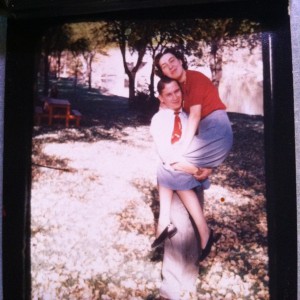
Autumn 1949.
Mom could tell you what happened that day.
Lots of other old information sticks, too. While playing cards she might take a chance glance at an heirloom ring on someone’s finger and launch an elaborate story about its origins in our family’s history. She might look at a photo taken 65 years ago and passionately recount stories laying out the happenings of the whole day the photo was taken. My sisters are good about encouraging and seizing upon these types of opportunities. They are great about getting her bubbling up stories from her girlhood in the 1930s and 40s.
Movies are a big part of her history, too. When she was very young, and then into her late teens, my mother, my aunt LaVina, and my great-aunt Florence used to walk to a theater and see a movie every day, often two on a weekend day. I like to get my mom talking about old movies and musicals. It makes her happy to talk about her favorite movie star, Dennis Morgan. He was a singer and good-looking actor and it is easy to know why my mom liked him so much – he made almost 80 films and never played a villain – always a good guy. In his off-screen life, there were no scandals and he was married for 61 years to his only wife.

Q: “Mom, what was the story of Kitty Foyle?” (A film that starred Dennis Morgan, and for which Ginger Rogers won the 1940 Academy Award for Best Actress.)
A: “OOH, that was Dennis and it’s a REALLY good one,” she will say. “I’m sure I saw that with Vina and Aunt Florence.” Then, she’s off to the races, “Well, Kitty is a working class girl in New York or Pennsylvania and she falls in love with Dennis Morgan’s character – but he’s an east coast socialite and his rich family doesn’t approve of her. Well, they marry anyway, and…”
She could recount that 1940 movie plot for you with no problem. And, although they were very close, (they lived next door to one another most of their adult lives,) now my mother needs a note as a reminder that her sister has passed away last year.


Because of my mom, movies became a big part of my life, too. Animated musicals were a good introduction, and it was really a treat when she took me downtown to the beautiful Grand Theater to see re-released Disney classics when I was very young. I would have been in kindergarten when we saw Pinocchio (re-released 1971), and first grade when we saw Dumbo (re-released 1972).

The stories are vibrant, sad, and terrifying; the music still is thrilling. Frugal, my mom would pop popcorn at home and sneak it into the theater in one of her enormous purses. We’d split a Dr. Pepper (with no ice) from the fountain. For a nickel you could get a Styrofoam cup filled with Good and Plenty or Mike and Ike candy from gumball style machines that stood in the fancy lobby.
Among my family, my mom is an admitted and notoriously poor singer, so perhaps it is natural that great singers were a marvel to her. She liked the musicals of actors who came from theatre like Gordon MacRae. She seemed to gravitate toward extremely sentimental songs and stories. Though in her real life at home, even among the high emotions of movie musicals, she strived to keep our family lives normal, fairly bland, and mostly stripped of emotion.
Here’s a nice example: He had such power – listen and watch ‘Soliloquy’ from Carousel (1956), performed by the masterful Gordon MacRae: http://bit.ly/1jvZXXU

that he enchanted my Mom.
Dancing fascinated my mom. She could even be impressed and transported by dancing that one wouldn’t expect. For instance, we watched Captain Kangaroo together pretty much every weekday when I was young and she would be positively rapt watching Dancing Bear.

Cyd Charisse.
Later, when we had cable television in the mid-1970s, the mornings were dominated by syndicated cartoons from the 1940s, 50s, and 60s, and also by feature movies from those same years. That also meant a lot of music and a lot of dancing. Movies introduced an extraordinary amount of glamor into an unglamorous home.
Another beautiful example: Hold on to your doggone hat! It’s Cyd Charisse and Fred Astaire together in The Band Wagon (1953): http://bit.ly/1b5MiCi
I can remember that around ages 12 and 13 I felt I should think that those old stories and musicals were corny and stupid. But I didn’t. Instead, I began to think of myself as a person who was probably born out of his time – that I would have fit in better if I had been born in, and lived in an earlier era. Watching some of those old movies with my mom also helped me to get a picture of her as someone other than just my mom. Because movies meant so much to her, she would talk about them, revealing some of her feelings that might not otherwise have come to light. She was a person with her own dreams and her own past – not just someone’s mom.
On cable one day you might see a wonderful classic like Casablanca (1942). (Trivial note: What a different movie that could have been. IMDb reports that Dennis Morgan was originally cast to play the role of Rick Blaine that was made so famous by Humphrey Bogart.) The next day you might see something that had mostly been forgotten like The Dolly Sisters (1945) with Betty Grable. (Trivial note: At age 18, my father sailed from New York to Le Havre, France, in August of 1945. He was part of a massive swap of young non-combat soldiers who headed to Europe for an Army of Occupation. World War Two combat veterans would return on the same vessels back to the U.S. On each of the ships were several popular film reels that, one supposed, contained a number of different movies meant to provide a glimmer of entertainment variety for the men as they crossed the Atlantic. Many of dad’s fellow soldiers were like him, small-town kids who had no inkling of what awaited them in war-ravaged Europe. The movies were meant to give them a little bit of home and normalcy on each evening of their journey. Instead of packing five or six different films on my dad’s ship, and five or six different films on the each of the other transport ships that were also making the crossing, someone packed five copies of The Dolly Sisters on my dad’s ship. He said, “The Dolly Sisters with Betty Grable. It would have been nice to see a few other movies, but we watched it every god damned night.”)

Movies were an indulgence that my mother could live with. So even as I got a little older, I was eager to make room for musicals like The Wiz (1978), (for which my mother did not share my enthusiasm,) and Emmet Otter’s Jug-Band Christmas (1977), (for which she did share my enthusiasm.) All of this was truly formative – around the same time that I was opening up from listening to mostly Top 40 music to begin experiencing the wonderful weirdness of Talking Heads and the B-52s.
And as square as that was, I didn’t care. All That Jazz (1979) fascinated and confused me – I loved that movie so much. It has a place in the formation of my musical and aesthetic tastes that rivals The Beatles. Oh, I could go on and on, but I already have. You get the picture.
And in case I forget, thanks Mom, for teaching me to like movies and musicals.
This is an inspiration – ‘An Actor’s Life for Me’ from Pinocchio (1940), performed by Walter Catlett: http://bit.ly/1gdk2SF
29 jan 2014
__________________________________________________
Music of the Future from the Past — Broadcast’s Warped Triumph
One of my favorite artists of the last twenty years is Trish Keenan. A massive, fantastical talent, she was capable of rendering whole, eerie, and inhabitable worlds with her voice, just as Ernst and Dali rendered them with canvas and brush. Putting on one of her records is like hitting the “GO!” button on a time machine – a trip to the spookiest, most exhilarating go-go club imaginable.
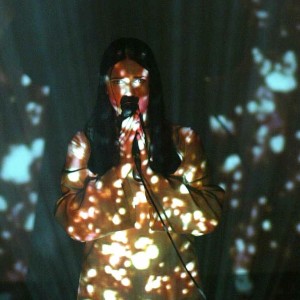
Keenan helped create Broadcast – banded in Birmingham, England in 1995. Their sound is a hybrid of 1960s-inspired electronic psychedelia, and dreamy rock and roll. It plays variously like soundtrack music: sometimes one can imagine it scoring occult, central-European films; sometimes it is like accompaniment to a staggering walk through the midway of a dark and twisted carnival; next, it is backing music for an extended, high-level coven meeting – or a woozy seance.

Like the great bands My Bloody Valentine, The Flaming Lips, and Stereolab, Broadcast creates much more than a listening experience – they create a whole way of feeling. And even among the creators of so much other great music, Broadcast distinguished themselves in those first years, (1996-2000.) There was the band’s engaged thirst for experimentation coupled with a cool and witchy detachment in Keenan’s delivery that is a signature of the band’s sound. Somehow managing to sound both haunted and haunting, Trish Keenan was able to balance vulnerability with assuredness in her vocals.
The ‘meta’ feature of the band’s ethos is a savory thing to ponder: They acknowledged and embraced a desire to re-imagine and produce music as if they were 1960s musicians imagining and making music as it would sound in the future. These imaginings are very much more than just exercises, and placing oneself out of one’s own artistic time seems to me to be a wonderful “jumping-off” point for any number of creative pursuits. Yet in their music there is not a whiff of anything remotely retro. So inventive, so hungry and vital, Keenan’s artistic contributions are cherished, and her loss is tragic. Trish Keenan died from pneumonia on 14 January 2011 aged only 42 years. Three years ago.
The band recognized and built upon the tremendous influence of wild American and British psych/hippie music (such as the song linked directly below by The United States of America). Broadcast’s influence also reverberates heavily in some current music. An example of a recent, darkly pulsating release by Eraas is also linked below.
http://bit.ly/1aCteLU “Coming Down”, by The United States of America, from The United States of America, released 1968 by Columbia Records.
http://bit.ly/1dNEORz “Ghost”, by Eraas, from Eraas, released Autumn 2012 by Felte Sounds Records.
THREE SONGS BY BROADCAST
This one is a triumph:
http://bit.ly/19plkGQ “Come on Let’s Go”, by Broadcast, from The Noise Made By People, released Spring 2000 by Warp Records.
From a brilliant collection of early singles:
http://bit.ly/1dtRAtH “The Accidentals” by Broadcast, from Work and Non Work, released 1997 by Warp Records.
Welcome to the groovy seance – please do not have a seat:
http://bit.ly/1eRdu77 “I Found the F” by Broadcast, from Tender Buttons, released 2005 by Warp Records.
14 jan 2014
_________________________________________________________________________________
Damned Ubiquity! Or, Another Music Writer’s Top Picks of 2013
5. Washed Out – Paracosm
A dreamy and dependable “go-to” – this is like something brand new that you also seem to have had in your library for decades. This is music as blood pressure medication.
4. My Bloody Valentine – mbv
Speaking of decades, SO worth the 20-year wait. My Bloody Valentine creates an artistic experience that goes way beyond listening. It is a whole way of feeling.
3. Vampire Weekend – Modern Vampires of the City
Much has been made of the maturity VW displays here, but they never did feel to me like they weren’t grown up. This year’s record mixes their signature intelligence, cleverness, and mischief with a sense of depth and gravity. Great. Great. Great.
2. No Joy – Wait to Pleasure and Pastel and Pass Out
The beautiful noise is right here. No Joy constructs sonic walls that feature muscular, rhythmic bricks held together with a sweet mortar of swirling fuzz. They create a super trippy, super fresh sound that is appealing because of its variety. Paying respect to the most brilliant shoegaze artists, they cannily switch gears from song to song, and often even within songs. When they are not sending open chords through chain saw effects, No Joy can display soft, sunny, and breezy beach sounds. This year’s output will provide many years of pleasure and great joy. (More on this band in the most recent post below headed: “Great Joy”.)
1. Goldfrapp – Tales of Us
Magical. Sometimes being just exactly who you are is an act of defiance. It is not easy for everyone, and the simple act of your own expression is courageous. Tales of Us is made up of ten songs, each a distinctive journey of self expression. The song titles are names, (Jo, Annabel, Drew, Simone, Clay, etc.,) and in each song, Alison Goldfrapp either presents us with, or bravely inhabits, a different persona. All of them (quietly, defiantly, courageously) being exactly who they are.
Fantastic and liberating, deeply private and still somehow seductively inclusive, the record plays both ends against the middle. Simple acoustic guitar songs trade time with hugely wrought symphonic pieces, slow jazz, and tripped out electronica. The binding element of the piece is her exquisite voice. Breathily playing out through the dreamy range of the songs, she draws me in absolutely.

More lovely with every year she is now 47, and along with the other two greatest song interpreters of her generation, Beth Gibbons (48, Portishead) and Elizabeth Fraser (50, Cocteau Twins), Alison Goldfrapp does not merely sing, she occupies her songs, and she transports her listeners. The beauty, the elegance of her, the certainty – she makes me lightheaded. She is delivering her art from a castle on a cloud, and I want to be where she is.
Watch the video for Drew: http://bit.ly/1eTPlNy
Plus 13 of note – (alpha by artist)
Boards of Canada – Tomorrow’s Harvest
This is not introductory BoC: For fans only and definitely worth the wait.
Bryan Ferry (The Bryan Ferry Orchestra) – The Jazz Age
Ferry works his genius by reimagining his own solo work and Roxy Music songs as 20s-era jazz. It works so well The Jazz Age transports me to a time I never experienced. Listening to this wonderful piece with eyes closed, you can easily imagine the ice-cold feel of a martini glass stem between your fingers. You can almost smell the room filled with perfume and tobacco smoke. You can sense the cool metal cufflink at your wrist and the swish of dancing silk and lace on your partner’s straight-line evening dress. You can feel the 20s roaring right around you.
Destroyer – Five Spanish Songs
If you see Dan Bejar, please give him a hug. Tell him to keep doing what he does. There is nobody like him. This EP is homage – he covers the songs of Spanish songwriter Antonio Luque – and it’s a wonderful way to spend 20 minutes. ¡Viva Destroyer!
Foxygen – We Are the 21st Century Ambassadors of Peace & Magic
The Kinks, The Rolling Stones, David Bowie, T Rex: All are conjured here and this swaggering record is serious fun, seriously funky. Rocking.
Frankie Rose – Herein Wild
I loved her last release, Interstellar, and Frankie Rose’s newest record is really similar. She’s your indie girlfriend so don’t fight it. Just put this in the rotation and love her.
Joanna Gruesome – Weird Sister
Do you sometimes just want to rock? This Welsh band does too. Get involved. They tear it up.
Jon Hopkins – Immunity
When you were a little kid, you occasionally had dreams where you were running. And your running became almost like flight. Remember? You ran, picking up speed, and after a number of paces your body was so solid and light that the lengths of your steps widened almost impossibly. You just barely touched your foot down before propelling your churning body back up, springing forward from the ground. Floating forward.
If you want to have the waking musical equivalent of your old running dream, check out the record’s best tune: Open Eye Signal. It is eight minutes of wonderfully entrancing music and the whole of Immunity is strong.
Kanye West – Yeezus
Electrifying. How is something so shocking still even possible.
Parquet Courts – Light Up Gold
This band energetically propels the traditions of American punk. This a terrific bunch of short, raw, powerful songs with a sense of humor.
Savages – Silence Yourself
These London women channel Ian Curtis and Joy Division. Crazy dark. Could have been in the top five.
Wax Idols – Discipline and Desire
This Bay Area outfit transports me back in time to the rich and dark early-1980s. Led by a tornadic creative force, Hether Fortune, they openly draw on the influences of my beloved Siouxsie (and the Banshees) and Daniel Ash (Tones on Tail, Love and Rockets, Bauhaus.)
Fortune is the architect of this remarkable release on the Slumberland Records label. She and her band blaze, and they deserve your attention. The sound is brand new and also somehow like something from your heavy rotation between 1981 and 1986. I can’t get enough of it.
Weekend – Jinx
Thank goodness for Weekend: After all, Violens and DIIV can’t be expected to release material every year. Weekend have crept into the same mental space for me as those excellent acts. Also crazy dark.
Yo La Tengo – Fade
What have you ever done to deserve Yo La Tengo? Time after time they invite you over, provide an excellent meal, and you sit down to eat. Always tasty and always reliable, the company’s a treat and the dishes are often remarkable. They have it and still glow. Thanks.
Here are some I want to spend more time with:
Grouper – The Man Who Died in His Boat
The Haxan Cloak – Excavation
Julianna Barwick – Nepenthe
Oneohetrix Point Never – R Plus Seven
Here is a single that I LOVE from 2013. Check out this weird video and beatiful song from TV on the Radio – Million Miles: http://bit.ly/1cZQn93
Wanted to love:
Here are a couple that got on my radar, (or I otherwise wanted to love this year,) but never made it in the rotation:
Daft Punk – Random Access Memories I did not believe the hype.
Deerhunter – Monomania This is a bummer – Bradford Cox is a favorite artist in large part BECAUSE his approach is often willfully provocative and difficult. This record seemed to double back on that difficulty and provocation and fell flat.
early dec 2013
______________________________________________________________
Great Joy
In a year with so many phenomenal releases, the Montreal trio, No Joy, have given us 14 extra special reasons to appreciate 2013. In April they released one of the years’ greatest, most ripping full-lengths: the wonderfully assured, eleven-song album Wait to Pleasure. Three more killer songs followed in November on the addictive 12” Pastel and Pass Out, released coincidentally as the band captivated Europe on tour.

Their sound on these two releases on the Mexican Summer label is distinctive and super fresh, and is also thick with delicious influences. Most apparently the band honors the brilliance of the best 80s and 90s shoegaze exports – touches of Ireland’s My Bloody Valentine and the gorgeous hum of England’s Lush are easy to spot. Like the band MBV, No Joy constructs sonic walls that feature muscular, rhythmic bricks held together with a sweet mortar of swirling fuzz. Streaked through the songs, and less obvious, are the influences of 80s and 90s New England: Particularly present on the full length Wait to Pleasure are the cryptic lyrical echoes and driving jangles of the great Throwing Muses, while No Joy also lays down the effortless power of the Pixies (without the yelling).
A big part of their appeal is their ability to vary styles. When they are not sending open chords through chain saw effects, No Joy can even display soft, sunny, and breezy beach sounds with songs like this one …
From Wait to Pleasure (2013) – No Joy: Wrack Attack

You will LOVE them.
Like a perfect cup of coffee, (even if you drink a lot of coffee, and almost all of it is really good, sometimes you get a cup that does something special and leaves you smiling and shaking your head in gratified disbelief,) this song Starchild is Dead strikes me as an almost impossibly great cup – different nuances of flavor sparkle here and there, and once you’ve taken that first wonderful sip you feel alert and ready to do just about anything.
From Pastel and Pass Out (2013) – No Joy: Starchild is Dead
nov 2013
____________________________________________________________________________
Insomnia, Part Three: If you knew Suzanne like I knew Suzanne
August 1985.
Returning for fall term from his home in Denver to our little college in Nebraska, Stanley Howell brought a girl back to campus. A doughy, genial, awkward guy, Stanley carried a rumpled 230 pounds, and was maybe 5’10”. The expressions on his marshmallow face alternated between distilled confusion and confused amusement. Often, when he finished speaking in his short clipped sentences, or sometimes for no reason at all, he would automatically puff out what seemed a slightly pained or embarrassed two-syllable chuckle.
“Heh heh.”
He often narrowed his eyes, crossed his arms to place his hands snugly in his armpits, and said, “What?”
His arms and hands he mostly kept close to his body with the physical self-consciousness of one who is always at least a little bit uncomfortable of mind, and who is puzzled by the workings of his own body.
“What?”
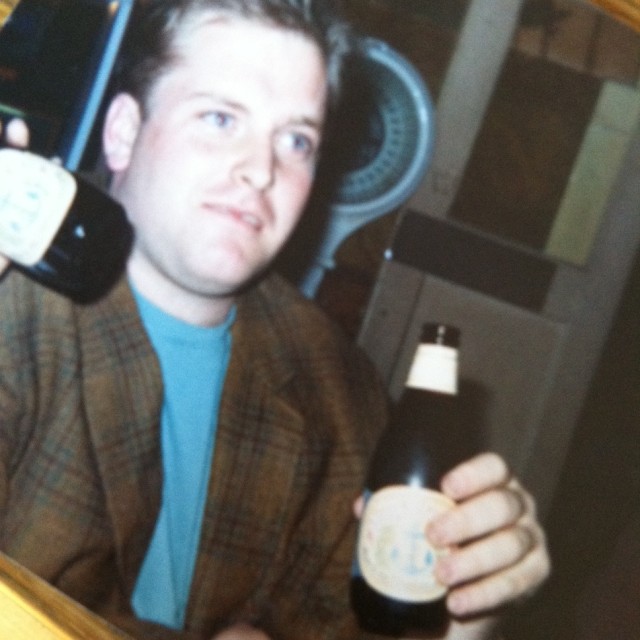
When Stan was around there was always something to be tipped, spilled, or toppled. A butt-brimming ashtray, a glass of water, soda, or beer – these were likely to wind up dustily strewn, or soggily splushed to the floor – casualties of Stan’s awkward elbow or his unknowing rump. He was an overgrown puppy who wanted to please, who just wanted to know what is happening? How do I fit in? Tail always a-wag. Moving side to side. Often backing up blindly – then, splush.
“Heh heh.”
She was not a Coloradan, this girl Stan brought with him to our little college in Nebraska. A quietly exotic New Yorker, this girl was a bit older than we were, and surely more worldly. Like Stanley, Suzanne was a musician. Reddish-blond and blue-eyed, with a pale gold complexion, she was petite, composed, vivid, and alive in a way I had never heard. My crush was instantaneous and deep. I craved listening to Suzanne. Her nimble and delicate fingers were so assured on her folkie acoustic guitar and she sang with a bright clear voice. Even with eyes closed one could feel that Suzanne fairly shimmered.

So how does a guy like Stan track down a girl like Suzanne? It really was not unusual for Stan to make these kinds of finds. In spite of being extraordinarily clumsy in his physical actions, and although he was always at least half-addled, Stan had an elegant and graceful mind for music. He was gifted in his ability to track down good songs and identify good songwriters and players. Suzanne was both.
I lived on campus with a really good dude named John Jack. We lived just down the hall from Stanley. That August, when Stan introduced us to Suzanne – this marvel he had discovered, this poet, this siren he had fallen in love with and then blessedly brought to Nebraska – John seemed instantly to share my obsession with Suzanne. We wanted to listen to her all the time. John and I were allowed to make a cassette recording of Suzanne.
John and I shared another habit of listening to music late at night while trying to fall asleep. Sometimes we played music instead of falling asleep. The tape on that cassette we’d made of Suzanne playing her songs became very thin from play. I could listen to her all through the night, and I came to associate her with the loneliest time imaginable: that is 4:07 am. Suzanne, through her lyrics and her delivery, could make one feel understood and even comforted. “YOU are my kindred spirit,” she seemed to be saying to me alone.
But she was not meant to play and sing just for us. Somehow she infiltrated the ears and enchanted the minds of enough people like John whose tastes varied but ran more to Motörhead; enough people like me and Stan, whose tastes also varied but ran more to the Smiths and Siouxsie. Enough people thought of her as, “my friend, Suzanne. Suzanne, who understands me,” that she began to get big. She was getting popular and building an enviable career.
August 1987.
Large cities can be surprisingly quiet. On the sunny sidewalk outside a narrow coffee shop near the Spanish Steps in Rome, I was eating gelato beneath a bright blue and red Cinzano umbrella. I had spent the morning and early afternoon exploring Rome’s Botanical Garden with my friend Brent and a pair of Dutch sisters whom we had met as soon as we arrived in Italy – Sylvia and Caroline Hagedoorn. I could not stop talking about the mesmerizing sound installation that the Botanical Gardens featured. The sound artist was Brian Eno, and his ambient recorded sounds had been placed discreetly throughout the gardens. As we smoked cigarettes, drank coffee, and ate gelato, “Luka” began playing on the café’s radio, supplanting thoughts of Brian Eno. The song’s sounds mixed with footsteps of the stylish Romans and the tourists stalking through the streets. Laughter. Far away car horns.

September 1987.
Early autumn and feeling cold on a windy gray morning, I helped my mother prune and clean up flowerbeds around my parent’s house. We transplanted mums from display pots into the ground. On the porch, attached to a short brown extension cord, was a portable Sony “boom box” that I had brought outside and set up. Sounds of “Gypsy”, “Language”, and “Wooden Horse” faded in and out, in the swirling, winter-promising wind. My mother and I were not in a rush to finish, and we worked slowly and steadily.
Thursday 22 October 1987.
Alone and unable to convince anyone to join me, I made my way the short distance from my apartment in Chelsea, MA to the Orpheum in Boston for a concert. I think I walked the whole way to save a little money. Richard Barone was brilliant and unusual as the support act – he worked as part of a trio that was himself on guitar, a cellist, and a tympanist. Soon, Susanne Vega took the stage. The other 2,700 people comfortably seated in the Orpheum’s red velvet theatre seats melted away. Suzanne sang and played a concert just to me. I did not feel the slightest bit sleepy. I was wide awake and could have stayed up listening to her all night.
from Solitude Standing (1987) – Suzanne Vega, Language: http://bit.ly/1704xae
from Suzanne Vega (1985) – Suzanne Vega, Some Journey: http://bit.ly/1i7zhKU
Thank you Stan.
Insomnia: Part Two: Lonely Time (A young insomniac’s guide to selections from the popular music of the late-60s and early-70s.)
Is there is a more exquisitely lonely time than 4:07 a.m.? Veteran insomniacs know it well. A time for a haunted heart and mind, it is nighttime’s point of no return – too late to be awake and too early to rise for the day – so it is also time to give oneself over to all manner of bizarre and crushing doubts — to catalogue your private dread – to scan the night-gray ceiling, wide-eyed, dreaming of the dark-draped and elusive comfort of the sandman’s veil.
Sleep has challenged me intermittently through my life. There is the “not being able to fall asleep” problem – a bad one. But awakening and then being unable to go back to sleep is something almost like torture. As a little kid, sometimes there were horrific and inexplicably violent dreams that made me afraid to go to sleep. Or, (this still happens,) the mind simply would not slow and then shut off. Sounds could help to get me to go to sleep, even muffled white noise: a tumbling load of clothes being dried distantly down the hall, the faint sounds of late-inning baseball being called on TV or radio in another room, ventilation fans whirring in the dark, a tub full of water being drawn.
By the time I was old enough to have a record player in my bedroom, there was sometimes music at night. Music – a loyal companion that helped to stem the frustration of sleeplessness. I had access to great music that surely influenced my lifelong tastes. My mother had dozens of Elvis Presley records, and loved Glen Campbell. My three older sisters’ albums ranged wonderfully from Bacharach to the Beach Boys and the Beatles to the Carpenters and Melanie. Aloha from Hawaii; Gentle on My Mind; Promises, Promises; Pet Sounds; Revolver & Rubber Soul; Close to You; Candles in the Rain. My sisters and parents also had soundtracks from films like The Sting that introduced me to Scott Joplin via Marvin Hamlisch; the fascinating, over-the-top psych-rock of Jesus Christ Superstar; and Lady Sings the Blues with Diana Ross channeling Billie Holiday.

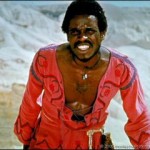
Listening habits and tastes evolved. I began buying my own records. I would play them and try to time falling asleep precisely as the needle lifted from the last song of the side, the arm shuttled its way to its resting spot, and the player clicked off. In my teens I left music going through the night from a 24 hour FM station. Into undergraduate years there was a lot of lying awake in the dark – almost always with a ‘soundtrack’. Lennon, Bowie, Pink Floyd: Jealous Guy; Golden Years; Time. Intensely introspective time.
The music at night habit finally faded in later college years, and that is long ago. Those songs are now like time capsules for me to open and sort through. The loneliness of 4:07 a.m. had mostly been forgotten about. In Insomnia, Part Three, I will explore the startling 4:07 revelation of a recent morning when something happened to remind me of the very particular kind of loneliness of some of those college mornings, and of an old favorite friend who often helped me through. For now, here are some fine songs that can take you back over forty years:
Dusty Springfield and Burt Bacharach, A House Is Not a Home: http://bit.ly/17F7rmh
The Beatles, If I Needed Someone: http://bit.ly/15Qr880
Glen Campbell, I Guess I’m Dumb: http://bit.ly/17jLaUO

Marvin Hamlisch, Scott Joplin’s Solace: http://bit.ly/1dInDqd

The Carpenters, We’ve Only Just Begun: http://bit.ly/15yvSuX
Diana Ross, You’ve Changed: http://bit.ly/14lkWBx
COMING SOON! Insomnia, Part Three: If You Knew Suzanne Like I Knew Suzanne.
Insomnia, Part One: Cat’s Paw
Recently Judy was in Michigan visiting our family for several days, and actually, I wasn’t sleeping too badly. That was nice, because I have trouble sleeping pretty often. Among other things, Judy’s absence affects our cats who are brother and sister. In her absence they are more affectionate toward me (purely by default) and also, instead of waking her to feed him between 3:30 and 5:00 a.m., I feel upon my sleeping face the hungrily insistent paws of 20+ pounds of furry fury. The perpetrator is our male cat, Fortunato (Otto).
He’s loud, too. An athletic meower, Otto puts his whole body into his wake up calls. They are sustained, intermittent, baby-like yowls. They begin with an upsetting trill – really a high, crackling whine that quickly turns into a piercing “ooh” then a puling “ahhwww” — all with a hint of a rolling “arrrr” rumbling deep in his throat. Like the cries of a human infant, his early morning meows make him pathetic, and they fill me with confusion, panic and revulsion.
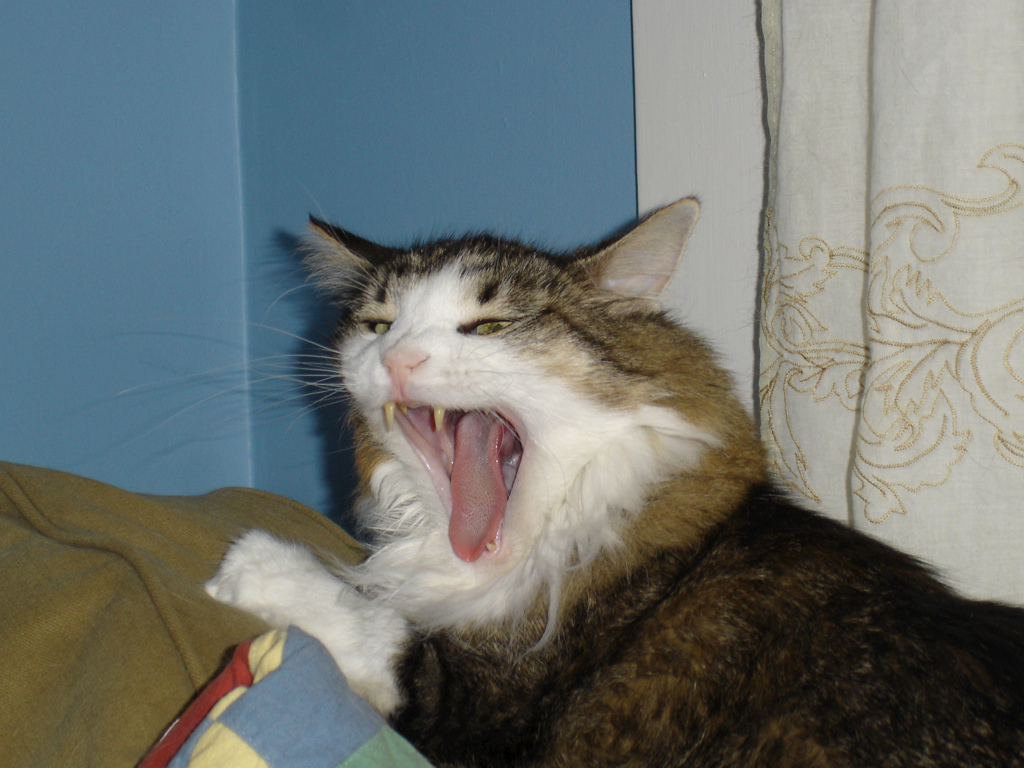
And it is like that every god damned morning for me when she’s gone. Lurking above me, he conjures primal howls and commences with surprisingly strong pawing at my puffy face and neck until I lug myself out of bed and get the villain his kibbly breakfast.
So, after one morning’s pestering, I was tromping dazedly away from our comfortable bed and downstairs from our second story bedroom. As usual, I was trying not to think much – simple thoughts: “Don’t fall down. DON’T open your eyes too wide. Etc…” Trying to ‘stay asleep’ while traveling two flights down, then two flights back up — feeding the bastard. I looked through narrow eyes as I moved through the kitchen, purposely avoiding a glance at the clock, as I headed down the second set of steps to our basement where the beast’s food and dish are kept.
I was doing a pretty good job of “staying asleep”, when at the bottom of the stairs, I rounded the corner into the basement room where the cat food is, and everything changed. On the softest spot on the bare heel of my left foot, I placed the full weight of my body onto a rock-hard nugget that one of the critters had nosed out of its’ dish. It nearly brought me to my knees. Shooting pain. Adrenaline. What a wake up. There was no way I would be going back to sleep any time soon. I limped up the stairs and looked through wide awake eyes at the kitchen clock. It was 4:07 a.m., the most exquisitely lonely time imaginable.
A song to help you “get through” at 4:07 a.m., or any time really. This beautiful, joyful song can take me back in time to the mid-80s, and sounds so fresh it could have been made last week: From Lonely Is an Eyesore, a compilation of music by artists of the 4AD label, 1987, Dif Juz, No Motion: http://bit.ly/15XBiPV
One of the most unusual music videos I know of, and a gorgeous vision of loneliness cured, this is one of the prettiest songs you will ever hear from a remarkable record. From It’ll End in Tears, 4AD, 1984, This Mortal Coil, Barramundi: http://bit.ly/19rZMG6
COMING SOON! Insomnia, Part Two: Lonely Time. (A young insomniac’s guide to selections from the popular music of the late-60s and early-70s.)
The Seduction and Romance of Faulty Memory, Part One: My Sister at the Family Piano
Like great pieces of music, sounds from nature and the outdoors act as time machines. Listen! Gently rustling leaves at sunset. Among the leaves there is the loud insistent whirr of locusts. The sounds combine to dizzy you. You are enveloped in the sense and transported to a young summer evening.
Close your eyes and listen: The “chick-chick-chick” of a rotating sprinkler. Disembodied outdoor voices just after dusk on a sultry night. Night sounds, dusky sounds, make you feel alive and young. Laughter. Crickets. A late and scratchy squawk from a bluejay.
You are a boy again. You are a little girl.
Still, songs have a stronger time travel hold on me than even most sounds from nature. Music causes more chilling, and oddly, more deeply primal reactions than nature.
My earliest memories of music are from home when I was four and five years old (1969-70). My sister Andrea, seven years older, played the piano and sometimes I liked to listen. In my memory of her at age eleven or twelve, (faulty, for sure,) she is masterful — tackling complicated works with a combination of great discipline and natural talent. At that very young age it was probably already clear that playing the piano was going to be beyond my abilities. So, once in a while she took from inside of the hinged maple piano bench a narrow velvet pouch held closed by a thin braided drawstring. She had mostly outgrown playing the instrument, but she would slip from the pouch a bone white recorder and she’d play a short, quiet, simple song. Perhaps it was her sweet attempt to show her clumsy little brother how easy it can be to make music.

Below are three French masterpieces for solo piano, all written between the late 1880s and very early in the twentieth century – within less than two decades of one another. Hearing these remarkable songs makes me a little boy again. I am positive that my sister Andrea, determined and accomplished in her own right at age eleven, never played anything like them. But when I hear them, I am a little boy, back in our pretty humble one story house in the middle of Nebraska in 1970. My sister’s hair, bright and blond, catching the late afternoon sunlight through the west window. Her fingers falling and rising.
Contemplative and insanely beautiful, this short piece still surely influences composers, as it did the ambient geniuses John Cage and Brian Eno.
Erik Satie – Gymnopédie No.1 http://www.youtube.com/watch?v=S-Xm7s9eGxU



Or try these lovely pieces:
Maurice Ravel – Jeux d’eau http://www.youtube.com/watch?v=cumoVX7x3Zo
Claude Debussy – Suite bergamasque http://www.youtube.com/watch?v=bGcEYALnk8s
______________________________________________________________________________________________________
Borrowed Time: A line from Television to Parquet Courts

Now based in Brooklyn, there is very much to love about the transplanted Texans who form Parquet Courts. Comparisons to other bands have been plentiful, and Parquet Courts have been generous with information about their many influences. They have cited the influence of Guided By Voices, Pavement, The Fall, and even a number of fiction writers. So it is surprising not to have come across any material noting the wonderful and clear similarities between the music of Parquet Courts debut, Light up Gold, and the treasured 1970s genius of Television’s Marquee Moon.

Right up front there is the shared garage-rock ethos: both bands feature gritty, dual-guitar attacks; a consistent “yeah, that’s right!” sneer in the vocals; and alternately thick muscular beats and spare but bright cymbals. New York City is also surely a catalyst. Television could have come from nowhere other than NYC and helped to define a whole decade of American punk. Parquet Courts refused to come from anywhere other than New York, and they are energetically propelling the traditions of American punk.
There are positive elements of music that are capable of creating “time travel” experiences for listeners. (This is a thread that runs through my posts.) Check out Yr No Stoner, a wonderful track from Light up Gold.
LIVE VERSION: http://www.youtube.com/watch?v=Kt6c4u7lzpc
RECORD VERSION: http://www.youtube.com/watch?v=kEXtb-6GpM8
If you’re like me, you can close your eyes and imagine CBGB. Patti Smith is in the house. Richard Hell is itching to get up on the stage and start jumping around.

I am eager to continue following this band and Light Up Gold has stayed in the rotation since its release on the WYR/Dull Tools label back in January.
As a comparison, check out the classic Television song See No Evil from Marquee Moon. The vocal deliveries and the weaving of the guitar lines have some real similarities. http://www.youtube.com/watch?v=-W7AthjQitg
______________________________________________________________________________________________________
Let’s turn down the static world…
The year is not yet half over but there are already a few tunes that will certainly show up on ‘favorites’ lists when we are bidding 2013 farewell. Some super strong songs through mid-May:
 Black Skinhead by Kanye West (built around a mindblowing reimagining of Gary Glitter’s Rock and Roll)
Black Skinhead by Kanye West (built around a mindblowing reimagining of Gary Glitter’s Rock and Roll)
Eschew all your preconceptions about, and current cultural references to, Kanye West. Then link to the video below of the great artist tearing it up on SNL. The intensity and the commitment on display cannot be manufactured. This is truth as delivered by Kanye West, and the best analogues for this performance are athletic. The comparisons that will mean anything will come from sport: think of Pele balletically contorting for a bicycle kick on goal; Reggie Jackson ripping a third, clutch homerun in a post-season game; LeBron James hitting a gamewinning three pointer at the buzzer. He was electrifying.
Kanye is just killing it – always himself – always owning the performance – and also laying it down ala Malcolm X, Isaac, and Sly: “For my theme song / My leather black jeans on /My by any mean on / Pardon I’m getting my scream on.” How is something so shocking as this even still possible? Prepare yourself for the thrill of Black Skinhead:
http://www.youtube.com/watch?v=xuhl6Ji5zH
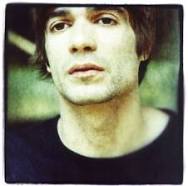 Open Eye Signal by Jon Hopkins
Open Eye Signal by Jon Hopkins
When you were a little kid, you occasionally had dreams where you were running. And your running became almost like flight. Remember? You ran, picking up speed, and after a number of paces your body was so solid and light that the lengths of your steps widened almost impossibly. You just barely touched your foot down before propelling your churning body back up, springing forward from the ground. Floating forward.
Jon Hopkins will release the record Immunity on Domino in early June. If you want to have the waking musical equivalent of your old running dream, hit this link for his tune Open Eye Signal. It is eight minutes of wonderfully entrancing music:
Wax Idols is a Bay Area outfit making choice music that is very welcome (and new) to me. While sounding brilliantly fresh and original, they give me the desired “time travel” experience that the best music can give. In this case Wax Idols transport me back in time to the rich and dark early-1980s. They are led by a tornadic creative force, Hether Fortune, who openly draws on the influences of my beloved Siouxsie (and the Banshees) and Daniel Ash (Tones on Tail, Love and Rockets, Bauhaus.)
Fortune is the architect of a remarkable release from March 2013 called Discipline and Desire, out now on the Slumberland Records label. She and her band blaze, and they deserve your attention. The sound is brand new and also somehow like something from your heavy rotation between 1981 and 1986. I can’t get enough of it.
Listen to their magnificent song Sound of a Void:
http://www.youtube.com/watch?v=tcLLPfFDJEM
 only tomorrow and if i am by My Bloody Valentine
only tomorrow and if i am by My Bloody Valentine
The band comes together like parts of a sentient, warm-blooded machine on m b v, My Bloody Valentine’s long-awaited February self-release. The magic of this band for me is not just its inventiveness, its sonic variety, or the wild guitar mixes. It has been their ability to marry a sincerity and vulnerability in their vocals with swirling, muscular, and decisive rhythms. My Bloody Valentine creates an artistic experience that goes way beyond listening. It is a whole way of feeling.
Check out their beautiful song only tomorrow
http://www.youtube.com/watch?v=y2FQ3ih0MoE
and if i am
http://www.youtube.com/watch?v=VJ0axgeNbWU
_____________________________________________________________________________________________________
Have another cigarette and have another cigarette…
Remember how much you loved The Psychedelic Furs? You did. You loved them. They made you feel great. Even their name made you happy. So apt, so evocative, so druggy and cool — few rock bands have selected a name as perfectly fitting*.

Actually, you love them still. Super dark and rich in the center, The Psychedelic Furs’ early sound was somehow still bright and gossamer at the edges. And, to be sure, I am only thinking about the band’s early output which often was completely brilliant — from their punk-inspired beginnings (the self-titled masterpiece debut, The Psychedelic Furs,) through their fourth record, (the uneven Mirror Moves). From there, they suffered the sort of tragic popularity that is so unfortunate for many fans: a popularity that dulled the band’s edge – a tragedy that befell a few other great outfits in the late-1980s.
The early recordings give me the “time travel experience” that I love so much in some music. Listening to it now can still make me dizzy with delight. The zeitgeist of The Psychedelic Furs first few records does not weigh their sound down negatively, though. It is transcendent. The music still works so well because it is direct and original; it has dark rock-n-roll swagger; and it’s sincere, moving, and important.

All of This and Nothing is an excellent track from the second LP, Talk Talk Talk. This tune exemplifies the band’s wonderful mixture of snapping beats, drunken saxophone, ringing guitars, and ethereal, whooshing production. All of this tied together with Richard Butler’s assured and smoky voice.

And Richard Butler was impossible! He achieved and maintained an unattainable version of cool and somehow he managed to seem accessible. There was a flicker of at least vague possibility that he was the type of guy who would sit down and share a cigarette and a beer with you. His voice is absolutely distinct and his lyrical interpretations are unimaginable by another performer. He had a straightforward androgyny that pushed to the front of his performance and set a clear tone, stating from the start with his appearance and his actions that he was a performer both honest and unforced. You can see him shaking it all up and spilling it out in Sister Europe:
* Of course, you’ll think of some other great, fitting band names. Like Lush, maybe. Or The Velvet Underground. Now go listen to The Furs!
_____________________________________________________________________________________________________




